Weather & Climate
Getting Around Morocco
Places to Visit
Guide to Moroccan Riads
Things to Do in Morocco
Things to Do in Marrakesh
Guide to the Marrakesh Medina
Best Beaches
Annual Events
Things to Do in Fez
Things to Do in Meknes
Visiting Chefchaouen
Food to Try
Best Restaurants
Best Time to Visit

The Best Time to Visit Morocco
:max_bytes(150000):strip_icc():format(webp)/anoukmarrakech-56a373305f9b58b7d0d20299.jpg)
TripSavvy / Chris VR
A diverse country with something for all kinds of travelers, there is no bad time to visit Morocco . Still, generally, the best time to visit is during April and May or September to November, the country's shoulder seasons. During these months, the climate is neither too hot nor too cold, and there are fewer tourists to contend with than there would be during the peak summer or winter vacation periods. However, those hoping to trek the Atlas Mountains or surf the waves on the Atlantic coast may find that other times of the year better suit their needs.
The Weather in Morocco
For many visitors, Morocco's weather is the single largest factor in determining the best time to travel. Morocco follows the same basic seasonal pattern as any other Northern Hemisphere country, with winter lasting from December to February and summer lasting from June to August.
During the peak summer months, the weather can get uncomfortably hot, especially in Marrakesh, Fez, and southwest Morocco (remember that the further south you go, the closer you are to the Sahara Desert). Coastal destinations like Tangier, Rabat, and Essaouira are a more comfortable choice at this time of year because they benefit from the cool ocean breeze. Despite the heat, many people choose to visit Morocco at this time because it coincides with the European summer vacation.
Winters are generally mild, although temperatures at night can fall dramatically, with record lows of 30 degrees Fahrenheit recorded in Marrakesh. A dusting of snow is not unusual in northern Morocco, and, of course, the Atlas Mountains are prone to heavy snowfall in winter. You can even ski at Oukaïmeden , located about 50 miles south of Marrakesh. Winters in the north of the country and along the coast can be pretty wet, while winters in the south are drier but colder, especially at night.
Kodiak Greenwood / Getty Images
The Best Time to Trek the Atlas Mountains
Although it's possible to trek the Atlas Mountains year-round, spring (April to May) and fall (September to October) generally offer the best weather. Although summers in the Atlas Mountains are typically mild and sunny, temperatures in the mountain valleys often exceed 86 degrees Fahrenheit, while afternoon thunderstorms are not uncommon. In winter, nighttime temperatures can plunge to 41 degrees Fahrenheit or lower, while snow precautions, including crampons and ice axes, are required above 9,800 feet. Weather in the Atlas Mountains can be unpredictable at any time of year, and conditions depend heavily on what elevation you're planning to trek to.
The Best Time to Visit the Coast
Weather-wise, the best time to visit Morocco's beaches is during the summer, when average temperatures of around 80 degrees Fahrenheit offer plenty of opportunities for catching rays and an escape from the intense heat of the country's interior. Sea temperatures are also at their warmest during this time of year, with the average water temperature for July recorded at 70 degrees Fahrenheit. However, summer is also peak tourist season, so book well in advance, especially if you plan on visiting hotspots like Essaouira or Agadir. If you prefer fewer crowds and lower prices, consider a trip in spring or fall instead.
Those attracted to the Atlantic coast by its reputation as one of Africa's top surf destinations should ignore the advice above and travel to top spots like Taghazout and Agadir during the winter months. The swell is consistently good at this time of year, and surf breaks are operating at their best. With an average December sea temperature of 65 degrees Fahrenheit at Taghazout, a thin wetsuit is usually enough to keep out the cold even in the depths of winter.
The Best Time to Visit the Sahara Desert
If you're planning a trip to the Sahara Desert , the most comfortable time to do so is during fall or early spring. In this way, you'll be able to avoid the bone-dry landscapes and scorching temperatures of summer (which average around 115 degrees Fahrenheit) and the freezing nighttime temperatures of winter. At any time of the year, temperatures tend to plummet after dark, so it's best to bring a warm jacket regardless of when you plan to visit. Although spring is generally a good time to visit the desert, it's important to remember that April, in particular, can bring with it the sandstorms of the Sirocco wind.
Morocco's Festivals & Events
Morocco is home to a whole host of exciting annual festivals, some of which are well worth planning your trip around. Some, like the Kelaa M'Gouna Rose Festival and the Erfoud Date Festival, are connected to the harvest and take place in the same month every year (with these particular festivals taking place in April and October, respectively). Others, like the Essaouira Gnaoua and World Music Festival and the Marrakesh Popular Arts Festival, are summer extravaganzas that rely on good weather to hold performances and events outside. Islamic festivals like Ramadan and Eid al-Adha also take place at specific times of the year and offer a fascinating insight into Moroccan culture.
Spring weather in Morocco is warm and dry. Snow is gone from all but the mountain's highest peaks, and while ocean temperatures are cooler, it's nothing that a wetsuit won't fix. Crowds are lighter in the spring, too.
Events to check out:
- Fez hosts the Gnaoua Music festivals in May or June, combining modern music with historical traditions.
- Ramadan typically takes place in the spring or early summer.
Moroccan summers can be quite hot, especially the further inland you go. With school holidays, summer is a popular time for families, so hotels and resorts (especially those with pools) will book up fast.
Fall is a great time to visit Morocco's cities as well as the coast. With cooler, dry temperatures, it's also an ideal time for those interested in great hiking weather.
- Eid al–Adha is held in September, spanning three days. Muslims commemorate the honor of Abraham throughout the country by sacrificing animals.
Visiting Moroccan cities in the winter can be quite pleasant, as temperatures usually aren't too cold and crowds are minimal. There will be snowfall at higher elevations and temperatures drop in the desert at night.
- The International Film Festival is held annually in Marrakesh. The festival was established in 2001 to promote all forms of cinema.
Morocco is a country in northern Africa, bordering the Atlantic Ocean and Mediterranean Sea.
There is no bad time to visit Morocco. That said, the best time to visit is during April and May or September and November, when crowds are low and air and lodging rates are inexpensive.
The rainy season in Morocco is typically October through April. However, most of Morocco is situated north of the Western Sahara Desert, making this season only mildly wet.
International tourist travel to Morocco is serviced by a full range of carriers, including, but not limited to, Air France, Emirates, Delta, British Airways, Iberia, Lufthansa, KLM, TAP Portugal, and Aeroflot.
Weather Atlas. "Marrakesh, Morocco - Detailed Climate Information." Retrieved Jan. 28, 2021.
Weatherbase. "Marrakech, Morocco Koppen Climate Classification." Retrieved Jan. 28, 2021.
Britannica. "Atlas Mountains- Climate." Retrieved Jan. 28, 2021.
Sea Temperature. "Essaouira Sea Temperature." Retrieved Jan. 28, 2021.
SeaTemperature.org. "Taghazout Sea Temperature | December Average." Retrieved Jan. 28, 2021.
Weather and Climate. "Climate and averagemonthly weather in Merzouga." Retrieved Jan. 28, 2021.
The Top 15 Things to See and Do in Morocco
The Complete Guide to Climbing Morocco's Mount Toubkal
Your Trip to Morocco: The Complete Guide
The Best Time to Visit Cape Town
10 of the Best Places to Visit in Morocco
The Best Countries in the World for Adventurous Travelers
Weather in Morocco: Climate, Seasons, and Average Monthly Temperature
The Best Time to Visit Spain
The Best Time to Visit Naples, Italy
The Complete Guide to the Atlas Mountains
Weather in Iceland: Climate, Seasons, and Average Monthly Temperature
Top 10 Destinations in North Africa
10 of the Best Annual Festivals and Events in Morocco
10 of the Best Beaches in Morocco
The Best Time to Visit Casablanca
10 Best Annual Events and Festivals in Africa
- Best time to visit Morocco
Book your individual trip , stress-free with local travel experts
- roughguides.com
- Travel guide
- Itineraries
- Local Experts
- Travel Advice
- Accommodation
Plan your tailor-made trip with a local expert
Book securely with money-back guarantee
Travel stress-free with local assistance and 24/7 support
Fatima Vieira
Our experience was amazing. Very well organized. During our stay there was a problem with a Riad , Insight guides solved the problem in a very professional...
To get the most out of your adventure, it's important to choose the best time to visit Morocco. If you have your eye on the climate, explore the southern regions or desert routes, especially avoiding mid-summer when temperatures spike, turning normal walks into sweat, especially if you use public transport. July-August, although scorching elsewhere, offers a coastal paradise. As for the mountains, there are no rigid rules, which brings a thrill to a Moroccan trip.
- When's the best time to visit Morocco
Best months to visit Morocco?
Moroccan peak season, moroccan rainy season, moroccan dry season, festivals in morocco, planning your april morocco trip, tailor-made travel itineraries for morocco, created by local experts.

10 days / from 2399 USD
Moroccan Cities and Ultimate Sahara
From the cities to the desert - follow the footsteps of Humphrey Bogart in Casablanca, discover the blue and whitewashed buildings of Chefchaouen before heading on to Fez and consequently the desert. Stay overnight in a luxurious desert camp before continuing to Marrakech.

8 days / from 1899 USD
Highlights of Morocco
For those short on time, this trip allows you to visit the highlights of Morocco in little over a week: the cultural capital Fez, the beautiful city of Chefchaouen, sleeping in a deluxe tent in the desert, as well as discovering Marrakech - it's time to explore Morocco!

8 days / from 2242 USD
Luxurious Morocco
Highlights include Rabat, Fes, Chefchaouen, and a luxury desert camp in Merzouga. Privately guided activities with expert local guides allow you to truly get to know Moroccan culture and cuisine. Combine it with the best hotels and riads in the cities and you have the perfect trip.
When's the best time to visit Morocco
The best time to visit Morocco largely depends on your interests and the regions you plan to explore.
In Morocco, the peak tourist season typically spans from April to Octobe r, with the highest influx of visitors occurring during the spring (April to June) and autumn (September and October) months. These periods are favored due to the mild and pleasant weather, ideal for exploring Morocco's diverse landscapes, from its bustling cities to the tranquil Sahara Desert.
However, the summer months, particularly July and August, can be overwhelmingly hot, especially in the desert regions and the south. The intense heat during these months can make outdoor activities and exploration less comfortable. Moreover, coastal areas like Essaouira and Agadir may be more crowded.
On the other hand, the winter months, from November to February, can be quite cold, especially in the Atlas Mountains and the desert at night. While this season sees fewer tourists and can be a good time for those looking to avoid crowds.

Visiting the Atlas Mountains is best during spring and autumn © Shutterstock
Spring , which comes late by European standards (around April and May), is perhaps the best time to visit Morocco, with a summer climate in the south and in the mountains, as well as on the Mediterranean and Atlantic coasts.
To give you a better understanding of the weather in Morocco, here's a month-to-month guide for the best time to visit Morocco.
Weather in Morocco in January
January offers a unique perspective on Morocco. It's the heart of winter, and while the temperatures may be cooler, especially inland, coastal cities like Casablanca and Rabat enjoy mild weather ranging from 10°C to 18°C.
If you're looking for a quieter and more budget-friendly experience , January is a great choice for Morocco. It is considered the low tourist season, so you can expect fewer crowds compared to other months.
Read more about the weather in Morocco in January .
Weather in Morocco in February
February offers a delightful balance of manageable weather, fewer crowds, and cost-effectiveness. It's an excellent time to explore the country's diverse landscapes and cultural treasures.
Whether you're navigating the labyrinthine medinas, trekking the mountains, or succumbing to the allure of the desert, February promises a remarkable journey through Morocco.
Read more about the weather in Morocco in February .
Weather in Morocco in March
March is the perfect time to discover Morocco's enchanting landscapes and vibrant culture . The weather is relatively mild, encouraging outdoor activities. Although it is not the peak tourist season, it is not as crowded as the summer months, which can be a huge advantage.
In addition, hotel prices in March are more reasonable than during the peak season, making it an ideal time for budget travellers.
Read more about the weather in Morocco in March .
Weather in Morocco in April
April is the perfect time to explore Morocco as the country emerges from the chilly embrace of winter into milder and more pleasant temperatures. Spring is in full swing and the landscapes are filled with vibrant colours.
Overall, the weather in Morocco in April is the perfect time to stroll the bustling medinas, explore the diverse cultures and enjoy the enchanting beauty of Morocco's varied landscapes.
Read more about the weather in Morocco in April .
Weather in Morocco in May
In May, Morocco blossoms into an enchanting destination, with warmer weather that invites travellers to enjoy themselves. The pleasant temperatures make it the perfect time to stroll through the mazes of ancient cities, savour the local cuisine and explore the country's rich historical and architectural heritage.
Read more about the weather in Morocco in May .
Weather in Morocco in June
June signals the onset of summer in Morocco, bringing with it a warmer embrace. The weather becomes more conducive to outdoor activities, inviting visitors to explore the vibrant markets , traverse the scenic Atlas Mountains , and unwind in the coastal breezes .
Overall, June can be a favourable time to visit Morocco. This is a time when Morocco showcases its diverse offerings, from bustling urban centres to tranquil natural wonders.
Read more about the weather in Morocco in June
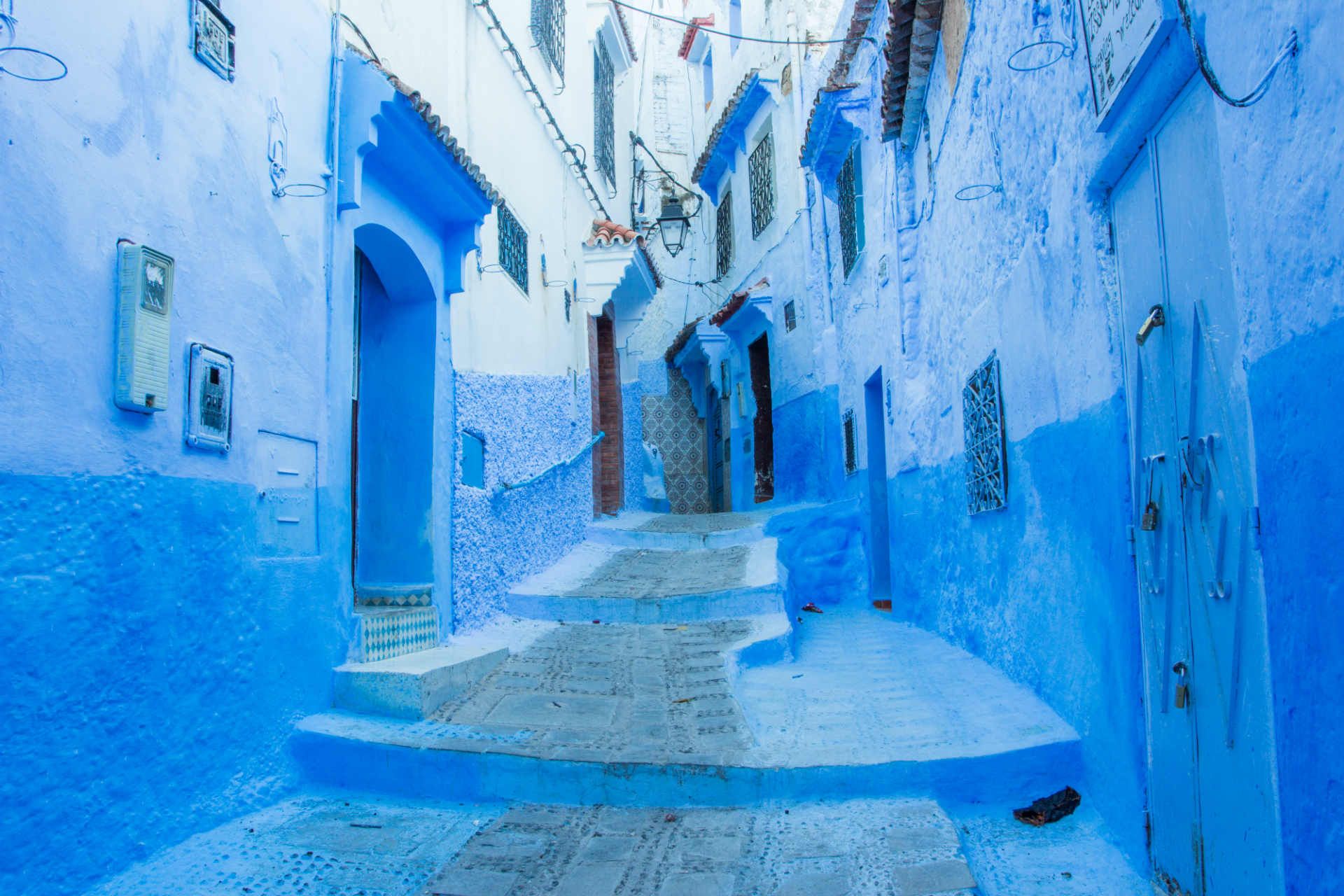
Chefchaouen, also known as the Blue City © Shutterstock
Weather in Morocco in July
July ushers in the height of summer, bringing a sun-kissed warmth to Morocco. While the inland regions experience higher temperatures, coastal areas provide a refreshing escape. This month is perfect for seaside relaxation, immersing oneself in the cultural festivities, and enjoying the lively atmosphere that characterizes Moroccan summers.
Overall, July can be a challenging time to visit Morocco for some travellers due to the high temperatures that characterize this month. However, whether it's a good time for you depends on your preferences and ability to handle the heat.
Read more about the weather in Morocco in July .
Weather in Morocco in August
August continues the summertime allure in Morocco, with a sun-drenched ambience that beckons travellers to coastal retreats and cultural hotspots. While the interior regions may experience warmer temperatures, the coastal cities offer a more temperate climate, making it an ideal time to indulge in the country's coastal charm and diverse landscapes.
Read more about the weather in Morocco in August .
Weather in Morocco in September
September marks the gentle transition from summer to fall, maintaining a warm and inviting atmosphere. September lies in Morocco’s shoulder season, and with the summer crowds waning, it's an opportune moment to explore Morocco's treasures, from the historic sites to the natural wonders.
Read more about the weather in Morocco in September .
Weather in Morocco in October
October extends an inviting welcome to Morocco, as the country gracefully transitions from the warmth of summer to the cooler embrace of autumn. The temperatures become more moderate, creating an ideal climate for exploration and outdoor activities.
The weather in Morocco in October makes this month particularly enticing for those seeking a balance between cultural immersion and natural wonders. From the vibrant markets of Marrakech to the golden dunes of the Sahara, October offers a diverse tapestry of experiences.
Read more about the weather in Morocco in October .
Weather in Morocco in November
Morocco is a land of diverse landscapes and cultures, making it a captivating destination throughout the year. While each season offers something special, November can be an excellent time to visit for several reasons.
November brings relief from the scorching summer heat and the bone-chilling winter cold. The temperatures are generally pleasant, making it easier to explore the country without the discomfort of extreme weather.
Read more about the weather in Morocco in November .
Weather in Morocco in December
December can indeed be a fantastic time to experience Morocco for several compelling reasons.
While much of Europe is shivering in the cold, Morocco boasts mild and comfortable temperatures. The winter weather is ideal for exploring Morocco's historic cities, hiking in the Atlas Mountains, or even enjoying some sun on the coastal beaches.
Read more about the weather in Morocco in December .
The peak season in Morocco is usually between mid-May and mid-October. During this time, the weather is usually pleasant and conducive to travelling. Cities such as Marrakech, Fez and Chefchaouen attract large numbers of tourists and popular attractions such as the Sahara Desert and the Atlas Mountains are lively. Hotel accommodation and excursions can be in high demand, so booking in advance is recommended for a more comfortable journey.
Planning a trip to Marrakech? Start preparing for your trip with our guide to the best accommodation options in Marrakech .
Morocco's rainy season lasts from November to March. Although rainfall varies from region to region, the coastal areas and the north of the country receive more rainfall. Landscapes transform into lush greenery and temperatures become milder. This season is ideal for those looking for a more peaceful and serene holiday. However, travellers should be prepared for occasional rains and cooler temperatures, especially in the evenings.
From April to October, it is the dry season in Morocco, characterised by warm temperatures and minimal rainfall. This period is ideal for exploring a variety of landscapes, from bustling medinas to vast deserts. Cities such as Marrakech and Fez are drenched in sunshine and active holidays such as hiking in the Atlas Mountains or camel trekking in the Sahara are particularly enjoyable. The dry season attracts a large number of tourists, so it is essential to plan and book accommodation and activities in advance.
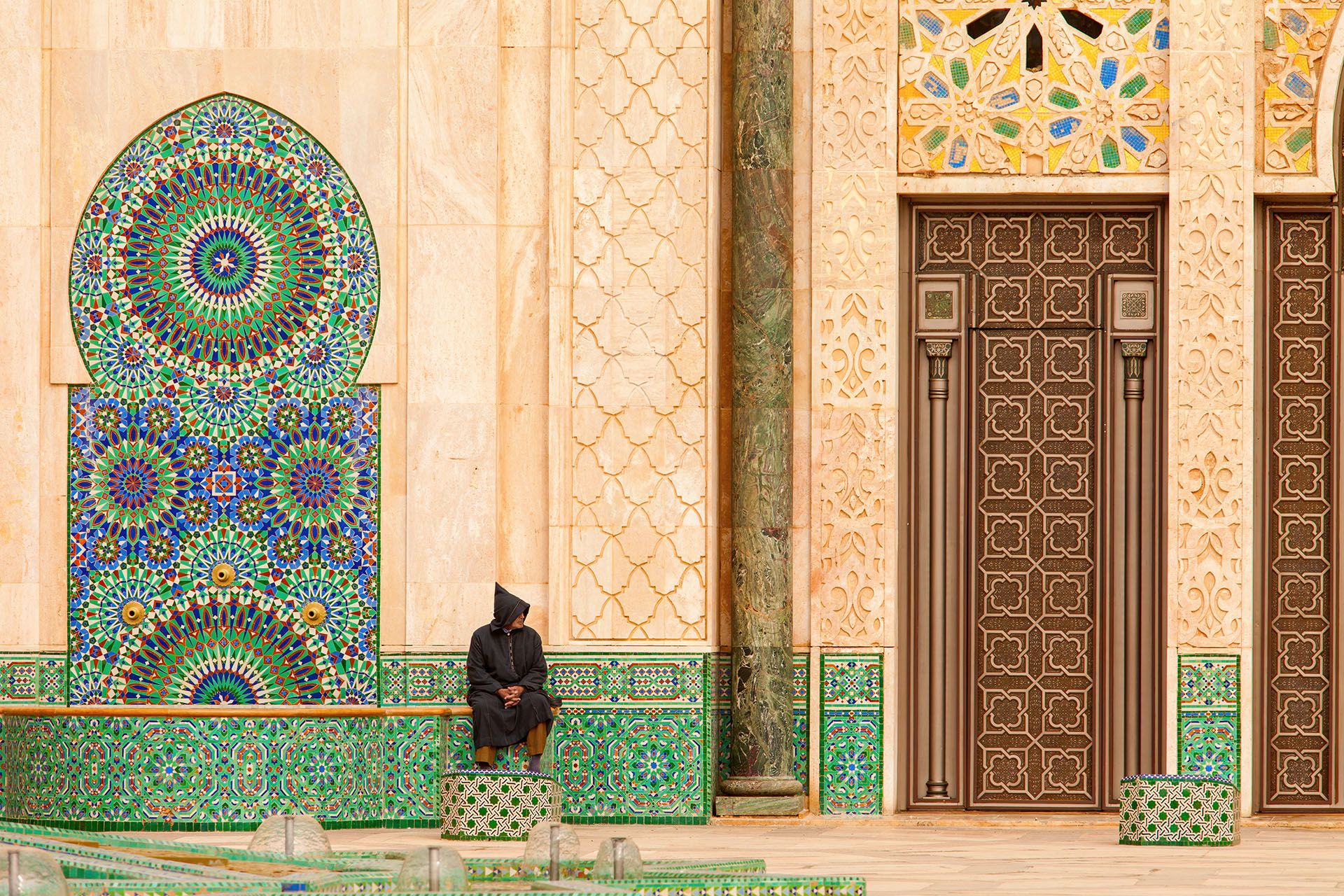
The Grande Mosquée Hassan II Casablanca © Shutterstock
Morocco abounds in holidays and festivals , both national and local, and coming across one can be the most enjoyable experience of travel in the country – with the chance to witness music and dance, as well as special regional foods and market souks. Perhaps surprisingly, this includes Ramadan, when practising Muslims, including most Moroccans, fast from sunrise to sunset for a month, but when nights are good times to hear music and share in hospitality.
Ramadan, the ninth month of the Islamic calendar, commemorates the first revelation of the Koran to Muhammad. Most people observe the fast; indeed Moroccans are forbidden by law from publicly disrespecting it, and a few people are jailed for this each year.
Fasting period
The fast involves abstention from food, drink, smoking and sex during daylight throughout the month. Most local cafés and restaurants close during the day, and many close up altogether and take a month’s holiday.
Smokers in particular get edgy towards the month’s end, and it is in some respects an unsatisfactory time to travel: efficiency drops, drivers fall asleep at the wheel (hence airline pilots are excused fasting), and guides and muleteers are unwilling to go off on treks, and when the fast ends at sunset, almost regardless of what they are doing, everybody stops to eat. The month-long closure of so many eating places can also make life difficult if you are dependent on restaurants.
But there is compensation for witnessing and becoming absorbed into the pattern of the fast. At sunset, signalled by the sounding of a siren, by the lighting of lamps on minarets, and in some places by a cannon shot, an amazing calm and sense of well-being fall on the streets.
The fast is traditionally broken with a bowl of harira and some dates, a combination provided by many cafés and restaurants exactly at sunset. You will also see almsgiving (zakat) extended to offering harira to the poor and homeless.
After the fast
After breaking their fast, everyone – in the cities at least – gets down to a night of celebration and entertainment. This takes different forms. If you can spend some time in Marrakech during the month, you’ll find the Jemaa el Fna square at its most active, with troupes of musicians, dancers and acrobats coming into the city for the occasion.
In Rabat and Fez , there seem to be continuous promenades, with cafés and stalls staying open until 3am. Urban cafés provide venues for live music and singing, too, and in the southern towns and Berber villages, you will often come across the ritualized ahouaches and haidus – circular, trance-like dances often involving whole communities.
If you are a non-Muslim outsider you are not expected to observe Ramadan, but you should be sensitive about breaking the fast (particularly smoking) in public. In fact, the best way to experience Ramadan – and to benefit from its naturally purifying rhythms – is to enter into it.
You may lack the faith to go without an occasional glass of water, and you’ll probably have breakfast later than sunrise (it’s often wise to buy supplies the night before), but it is worth an attempt.
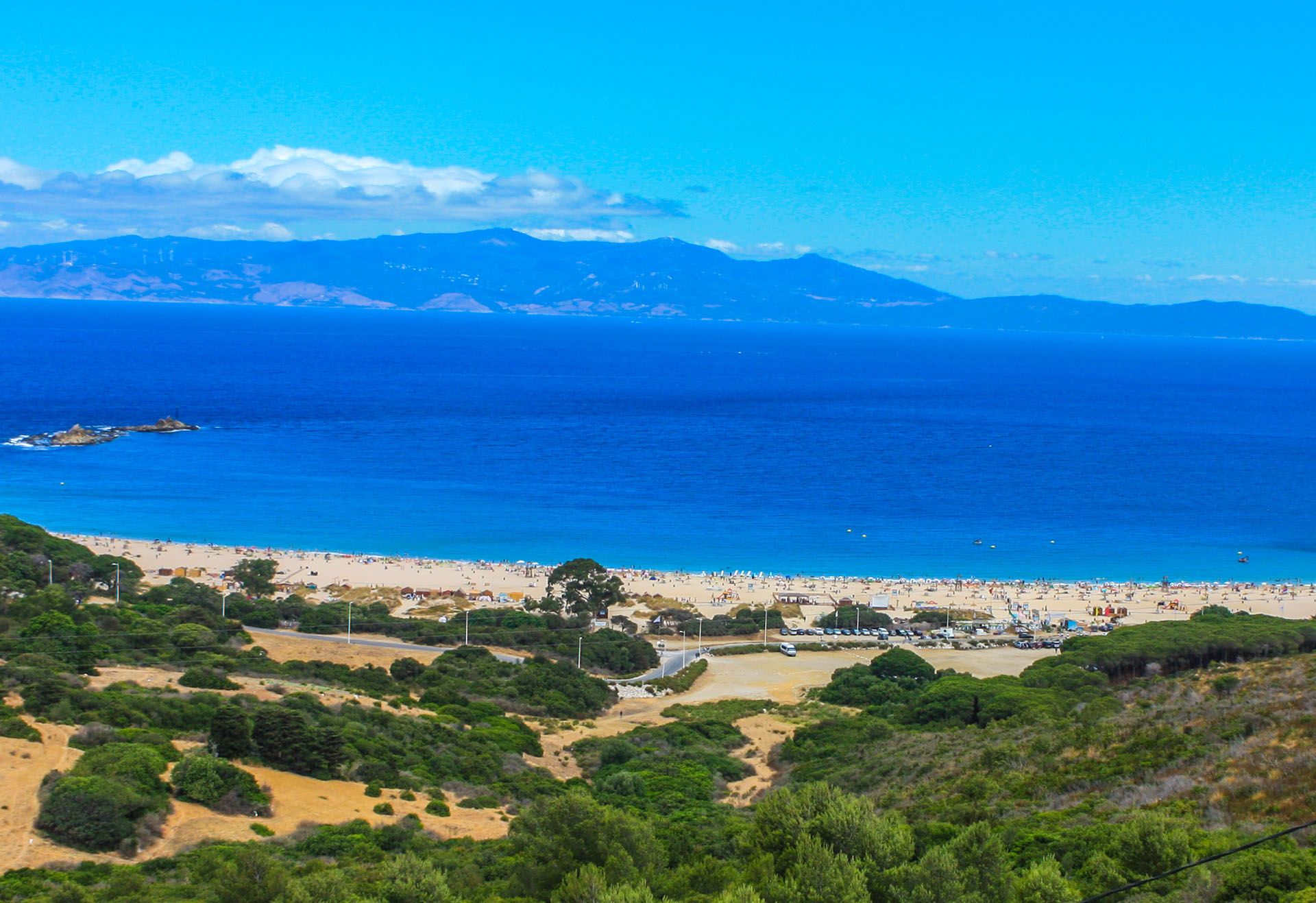
Panoramic view from the Daliyya (Dalia) Beach in Tangier © Shutterstock
Other Islamic holidays
Ramadan ends with the feast of Aïd es Seghir or Aïd el Fitr, a climax to the month’s night-time festivities. Even more important is Aïd el Kebir, which celebrates the willingness of Abraham to obey God by sacrificing his son (Isaac in the Old Testament, but believed by Muslims to be his older son Ishmael). Aïd el Kebir is followed, about two months later, by Moharem, the Muslim New Year.
Both aïds are traditional family gatherings. At Aïd el Kebir every household that can afford it will slaughter a sheep. You see them tethered everywhere, often on rooftops, for weeks prior to the event; after the feast, their skins can be seen being cured on the streets. On both days, shops and restaurants close and buses don’t run; on the following day, all transport is packed, as people return to the cities from their family homes.
The fourth main religious holiday is the Mouloud, the Prophet’s birthday. This is widely observed, with a large number of moussems timed to take place in the weeks around it, and two particularly important moussems at Meknes and Salé. There is also a music festival, Ashorou, which is held thirty days after Aïd el Kebir, when people gather to play whatever traditional instrument they feel capable of wielding, and the streets are full of music.
Moussems and ammougars
Moussems – or ammougars – held in honour of saints or marabouts, are local and predominantly rural affairs, and form the main religious and social celebrations of the year for most Moroccans, along with Aïd es Seghir and Aïd el Kebir.
Some of the smaller moussems amount to no more than a market day with religious overtones. Others are essentially harvest festivals, celebrating a pause in agricultural labour after a crop has been successfully brought in, but a number have developed into substantial occasions – akin to Spanish fiestas – and a few have acquired national significance.
If you are lucky enough to be here for one of the major events, you’ll get the chance to witness Moroccan popular culture at its richest, with horseriding, music, singing and dancing, and of course eating and drinking.
There are enormous numbers of moussems. An idea of quite how many can be gathered from the frequency with which, travelling about the countryside, you see koubbas – the square, white-domed buildings covering a saint’s tomb. Each of these is a potential focal point of a moussem, and any one region or town may have twenty to thirty separate annual moussems.
Establishing when they take place, however, can be difficult for outsiders; most local people find out by word of mouth at the weekly souks. Some moussems are held around religious occasions such as Mouloud, which change date each year according to the lunar calendar; others follow the solar calendar (see Ramadan and Islamic holidays).
The accommodation situation will depend on whether the moussem is in the town or the countryside. In the country, the simplest solution is to take a tent and camp – there is no real objection to anyone camping wherever they please during a moussem.
Aims and functions of Moussems
The ostensible aim of the moussem is religious: to obtain the blessing, or baraka, from the saint and/or to thank God for the harvest. But the social and cultural dimensions are equally important. Moussems provide an opportunity for country people to escape the monotony of their hard-working lives in several days of festivities, and they may provide the year’s single opportunity for friends or families from different villages to meet.
Music and singing are always major components of a moussem and locals will often bring tape recorders to provide sounds. Sufi brotherhoods have a big presence, and each brings their own distinct style of music, dancing and dress.
Moussems also operate as fairs, or markets, attracting people from a much wider area than the souk and giving a welcome injection of cash into the local economy, with traders and entertainers doing good business, and householders renting out rooms.
Spiritual and therapeutic significance
At the spiritual level, people seek to improve their standing with God through prayer, as well as the less orthodox channels of popular belief. Central to this is baraka, good fortune, which can be obtained by the intercession of the saint.
Financial contributions are made and these are used to buy a gift, or hedia, usually a large carpet, which is then taken in procession to the saint’s tomb. It is deposited there for the local shereefian families, the descendants of the saint, to dispose of as they wish.
The procession taking the gift to the tomb is the high point of the more religious moussems, such as that of Moulay Idriss in Fez, where an enormous carpet is carried above the heads of the Sufi brotherhoods, each playing its own hypnotic music. Spectators and participants, giving themselves up to the music, may go into a trance. If you witness such events, it is best to keep a low profile so as not to interfere with people trying to attain a trance-like state, and certainly don’t take photographs.
Release through trance probably has a therapeutic aspect, and indeed some moussems are specifically concerned with cures of physical and psychiatric disorders. The saint’s tomb is usually located near a freshwater spring, and the cure can simply be bathing in and drinking the water. Those suffering from physical ailments may also be treated at the moussem with herbal remedies, or by recitation of verses from the Koran.
Uncover the enchanting allure of Morocco with the guidance of our local travel experts . We take care of every detail of the planning and booking for your adventure.
Whenever you're ready to set off on your journey, contact us , and we'll create a tailor-made itinerary to suit your desires. Explore our existing Morocco itineraries for inspiration, knowing that each one can be adjusted to meet your specific preferences .
The Rough Guides to Morocco and related travel guides
In-depth, easy-to-use travel guides filled with expert advice.

Travel advice for Morocco
From travel safety to visa requirements, discover the best tips for traveling to Morocco
- Culture and Etiquette in Morocco
- Eating and drinking in Morocco
- How to get to Morocco
- How to get around in Morocco
- Shopping tips for Morocco
- Tips and travel advice for Morocco
- Travelling with children in Morocco
- How to get a Morocco Visa
Find even more inspiration here

- Travel Tips
written by Rough Guides Editors
updated 02.05.2024
Ready to travel and discover Morocco?
Get support from our local experts for stress-free planning & worry-free travels.
- Where to stay
- Travel advice
Best time to visit Morocco

The best time to visit Morocco is generally during the autumn (September-November) or early spring (March-April), but Morocco is a year-round destination. The weather is warm, but you’ll avoid the scorching heat and cold nights. Whatever time of year you visit, there’s always something special about Morocco .
Summer is hot and sticky, but there are breezy coastlines and balmy evenings to enjoy. Winter can be chilly with freezing temperatures in the mountains, but it’s the perfect time to experience the Sahara or trek the snow-clad peaks to Mt Toubkal. There are a few factors to weigh up when planning your Moroccan adventure and, like a good buffet, you’ll be able to pick the best bits.
Travelers flock to the coast between June and September to take refuge from soaring temperatures. Water temperatures in northern Morocco often hit 77°F in August, which is perfect for swimming. Consider visiting Tangier, Essaouira and Taghazout to hang ten at a surfing lesson, join a seaside yoga class or feast on grilled seafood.
Morocco can get mighty hot in the summer, with temps often topping 100°F. Avoiding July and August is a good idea for those uncomfortable with the heat. The best time to visit if you like warm – but not too warm – weather is autumn or spring.
Morocco's a predominately Islamic country, and some religious events may affect your travel plans. This includes Ramadan (the dates of which change every year), a holy month observed by Muslims across the world as a time of spiritual rejuvenation. Fasting occurs from sunrise to sunset, so restaurants, shops and other establishments may have altered hours (excluding hotels).
But these disruptions shouldn’t put you off! It’s quite a sight to see hundreds or even thousands of worshippers descend on local mosques for evening prayers before spilling onto the streets and markets to enjoy their iftar (breaking the fast meal).
Best for: cooler weather, small crowds, camping in the Sahara and Yennayer
Not a fan of the heat? January is the coolest and wettest month with daytime highs of 50-68°F, though it’s chillier in the mountains and warmer in the desert. The Sahara sees higher foot (read: camel) traffic due to more manageable daytime temps, while the rest of Morocco is usually crowd-free so you’ll have the sites and souks (almost) all to yourself.
If you time it well, you might experience Yennayer (Amazigh New Year), celebrated by traditional Berber communities in North Africa . Festivities can get pretty lively in the High Atlas with communal feasts, dancing and singing to honor the connection between the Amazigh and nature, and to call in abundant crops and prosperity for the year ahead.
Best for: cooler weather, trekking Mt Toubkal and Blossom Festival
There’s less rain in February and temperatures increase slightly. Queues at popular sites are minimal and you’ll have more opportunities to banter with locals. The weather is near perfect for hiking and camel rides in the desert. Or, if you prefer snow over sand, head to the High Atlas to experience the wintery magic of the mountains and summit Mt Toubkal , the highest peak in North Africa.
If you’re around in mid-February, consider visiting the quaint village of Tafraout in the Souss-Massa region for the annual Almond Blossom Festival. Expect delicious food, traditional Berber folk music and, of course, heaps of sweet-smelling almond blossoms.
Best for: lush landscapes, hiking and the International Nomad Festival
Hello, spring! March is a gorgeous month with budding flowers and lush vegetation thanks to the winter rains. Foot traffic picks up, but the weather is great for exploring iconic landmarks and getting lost in the winding streets of Marrakesh, Fes and Chefchaouen. Daytime temps climb into the high 60s, but layers are still required for the evening.
You could also align your trip with the International Nomad Festival in the remote Saharan village of M’Hamid El Ghizlane. It’s a wonderful opportunity to learn about the culture and customs of nomadic tribes from the region.
Best for: warmer weather, spring blooms, hiking and the Sufi Festival
Spring’s in full swing by April with rising temps and longer days. There's usually a rush of tourists around the Easter holidays, so keep this in mind if there’s somewhere in particular you want to stay as you may need to book in advance. Hiking in the Middle and High Atlas is a delight with blooming flora set against snow-topped peaks.
Be sure to check out the Sufi Festival if you’re around Fes, the cultural capital of Morocco. Sufism is an esoteric form of Islam that promotes mysticism, introspection and divine love. You’ll be able to witness Sufi devotees from around the world perform rituals, chanting, poetry and concerts in amazing venues across the city.
Best for: pleasant weather, trekking and the Festival of the Roses
May's hot but not sweltering weather makes it a popular month, so it’s best to book your activities and accommodation in advance. It’s one of the best months to go trekking, and it's the last month to venture into the Sahara or explore bustling cities like Marrakesh before the intense heat arrives.
If you visit M’Goun Valley (AKA, Valley of the Roses) in early May, you can see and smell beds of sweet Damascus roses as far as the eye can see. Pickers then pluck tonnes of petals for rose water and oil production – a key ingredient in Arab culture. Festival of the Roses coincides with the end of the harvest season and is a fantastic cultural experience.
Best for: enjoying the coast, cultural music festivals and the Cherry Festival
June marks the start of the summer (and the notorious heat), though it’s slightly cooler than July and August. The weather is prime for enjoying fresh seafood in Casablanca or kicking back on the beaches of Essaouira.
The festival calendar is jam-packed with musical goodness, including Essaouira's Gnaoua Music Festival and Fes's Festival of World Sacred Music. There’s also the Cherry Festival in Sefrou which features elaborate floats and parades, authentic Moroccan food and the crowning of ‘Miss Cherry’.
Best for: enjoying the coast, Jazzablanca and balmy evenings
Temperatures soar in June, often topping 100°F. But it's totally doable if you can cope with the heat (and remember to use sunscreen and stay hydrated!). It’s hotter the further inland you go – crowded cities like Marrakesh can feel stifling – so it’s the perfect excuse to head to Essaouira, Rabat or Tangier, where the salty sea breeze cools things down.
Casablanca also hosts the annual Jazzablanca festival featuring soul, funk, new age and jazz music. Despite the heat, July is a reasonably popular month due to European summer breakers, so be sure to pre-book any activities on your bucket list.
Best for: balmy evenings, hitting the beach, Todra Gorge and Dades River
August is hot with a capital H. Beat the heat along the Atlantic or Mediterranean coastlines, or at Todra Gorge and Dades River where you can cool down in limestone river canyons. It’s best to start the day early and take refuge from the midday sun in museums, cafes or hammams. Days are quieter, but evenings come alive as locals fill the streets to eat and make the most of the cooler temps.
Best for: comfortable weather, the whole gamut of activities and Imilchil Marriage Festival
September is one of the best months to visit in terms of weather. The scorching heat subsides, sunshine is plentiful and the rush of summer holidaymakers comes to a halt. Aside from the Sahara which can still be oppressively hot, September offers prime conditions for trekking, swimming and exploring historical sites.
You could also head to the Middle Atlas to experience a side of Morocco most travelers don’t see at the Imilchil Marriage Festival. This annual event sees hundreds of Berber people gather in elaborate outfits to find their perfect spouse.
Best for: harvest season festivities, mild weather and Sahara adventures
Pleasant weather continues into October, and while the rain starts falling in the Middle Atlas mid-month, it’s usually not enough to disrupt hiking. It can get windy along the coast, so head inland to Fes, Marrakech and Chefchaouen to immerse yourself in the color, chaos and charisma of Morocco sans the heat.
If you have a sweet tooth, you’ll love October as it’s date season! It’s a great time to experience traditional harvesting festivities and, of course, get your fill of Mother Nature’s caramels.
Best for: the Sahara, exploring the cities and cosying up in cafes
Things pick up again in the Sahara (but remember your warm layers!). Yes, it’s busier, but it’s worth it for more bearable temps. On the flip side, Morocco’s cities see lower foot traffic in November, making it a great time to tick off the highlights. The cooler weather is the perfect excuse to cozy up in cafes with mint tea and a plate of warm Moroccan pastries. Or go all out on the food on a tagine, harissa and couscous-filled adventure from Casablanca to Marrakesh.
Best for: winter trekking, cultural activities and Sahara adventures
For most of December, you’ll enjoy a crowd-free Morocco – excluding late-December which sees a spike in festive holidaymakers. It’s not quite bathing suit weather along the coast, but sun-seekers can visit the Sahara where clear skies and sunshine await. Mild daytime temps inland also make for excellent hiking conditions at lower altitudes like Todra Gorge (without sweating buckets).
If you want to embrace the wintry weather, you could go on a snow-crunching trek in the High Atlas to Mt Toubkal with a trusty pack of mules and an expert crew to lead the way.
Let's create an exclusive trip for your group.
Exploring the world through tea
The 7 best places to go on a hot air balloon ride
This Moroccan artist is making space for local creativity to thrive
Morocco’s High Atlas Foundation is bridging communities by growing trees
Visiting Morocco after the earthquake showed this traveller the power of travel
4 tips for Black travellers visiting Morocco
The top 10 destinations to travel in May 2024
The top 7 destinations for travel in April 2024
These Are the Best Times to Visit Morocco

Each year, millions of people from around the world visit Morocco to experience its unique sights, tastes and sounds. This number has increased steadily over the last 20 years, with a record-breaking 12.3 million visiting in 2018 . With direct air service from Boston to Casablanca by Royal Air Maroc set to begin on June 22, traveling to Morocco from the US is easier than ever.
Visit Morocco and the reasons for its increasing popularity become clear. The smells of chicken tagine and Moroccan spices waft through ancient open-air souks in Marrakech, while hikers and climbers escape to the snow-capped peaks of the High Atlas mountains. Men gather on street corners each afternoon, sipping sweet green tea as the daily call to prayer beckons, a reminder of their deeply rooted culture and traditions.
Spanning 172,000 square miles of the Maghreb region of Northern Africa, Morocco's ecological diversity is almost as expansive as its endless deserts. Because of this, there are a wide variety of activities to choose from. The best time to visit depends on what you'd like to do.
When to Find the Best Weather in Morocco
The seasons in Morocco are similar to other countries in the Northern Hemisphere, with winter from December through February and summer from June through August. As you head south toward the Sahara desert, the climate becomes hotter and drier; the north and northwest are cooler because of the influence of the Mediterranean Sea and the Atlantic Ocean. In the High Atlas Mountains, where higher elevations bring cooler temperatures and more precipitation, snow is not uncommon.
When to Visit the Mountains
The Atlas mountains create a geological barrier between the coastal climate of the north and the dry climate of the south, resulting in a wetter climate by Moroccan standards. Summer in the valleys can be quite hot, but temperatures at higher elevations can dip below freezing at night year-round.
Although it is possible to visit the mountains throughout the year, spring and fall are the most popular. In the winter, advanced mountaineering skills and equipment are required to climb the snow-covered peaks. In the summer, temperatures at lower elevations can reach 90 degrees Fahrenheit or more and afternoon thunderstorms are common.
If you plan on climbing Mount Toubkal — Northern Africa's highest and most popular peak — during the busier seasons (spring and fall), it is best to book a night at one of the refuges along the way in advance.
The Best Time to See the Sahara Desert
If the sandy dunes of the Sahara are what you're after, it is best to visit during the fall, winter and spring. The desert is generally hot and dry year-round, but winter temperatures can drop to freezing at night. In March and April, it is easy to avoid the sweltering heat of midsummer and the freezing lows of winter, but you may have to deal with the occasional sandstorm.
When to Visit Morocco's Beaches
Morocco's coast is lined with sandy coves, dramatic cliffs and unique Spanish-influenced beach towns. Like most coastal destinations in the Northern Hemisphere, summer is a great time to go. In the summer, the ocean breeze keeps the climate reasonably cool and it tends to be dry and sunny.
Between October and April, daytime temperatures average around 63 degrees Fahrenheit and it rains about six days per month. It hardly rains at all from May through September and the temperature often reaches into the 70s.
The Best Time to Visit Morocco for Festivals
Along with the country's strong sense of tradition and culture comes myriad holidays and festivals.
Whether it's a traditional Muslim celebration like Ramadan or a Moroccan-specific one like the Gnaoua Music Festival, you can expect food, dancing and an insight into a unique culture.
The Gnaoua World Music Festival, which draws nearly 500,000 people, takes place in the beach town of Essaouira each June. This four-day festival celebrates Gnaoua heritage with art exhibitions and musical fusion.
Gnaoua musicians and jazz artists from Northern Africa perform at 10 different concert sites in the town. The regional musical style, which often includes dancing, is influenced by Arabic, African and Berber songs.
The Imilchil Marriage Festival, which takes place every September in the small village of Imilchil, draws Berber tribal clans looking to carry on tradition during a search for love.
According to the legend on which the festival is based, two young people from rival tribes fell in love but were kept from marrying. After days of crying, their tears created the two lakes on the outskirts of town, in which they both drowned.
The Imilchil Marriage Festival ends the sadness by allowing neighboring tribes to marry whomever they choose. In a mountain town of less than 2,000 people, almost 30,000 gather to dance, eat, listen to music and take part in this celebration of love.
The annual International Film Festival has been held in Marrakech since 2001 and is the country's largest film event. Hundreds of films are shown at the festival, which attracts producers, filmmakers, actors and journalists from around the world.
In addition to promoting the country's developing film and travel industries and international cinema, the festival helps educate the public on current events in Morocco through the films shown.
During the first week of May, the Rose Festival takes place in the town of El-Kelaa M'Gouna. Famous for its landscapes of pink Persian roses, the town produces a variety of rose-based products like soaps and perfumes. For three days, the festival — originally intended for farmers to celebrate the year's crops and nature's beauty — takes place in the souk.
The tradition started shortly after the town's first rosewater distillery was opened more than 80 years ago. During the festival, the streets are filled with the scent of roses, Berber tribes singing and playing traditional instruments, a parade and, of course, food.
When to Go to Beat the Crowds
The most- and least-crowded seasons vary across Morocco. In the mountains, spring and fall tend to be busiest. So if you can handle the heat or a bit of snow, visiting in the summer or winter would be the best bet.
Beach towns like Essouira are most crowded in the summer, but there is no shortage of dry and sunny days between April and June, before the crowds arrive.
The Sahara is least crowded in November, January and February. While daytime temperatures can be warm, be sure to pack a jacket for the near-freezing lows that occur at night.
The Best Times to Visit Morocco's Cities
While there is plenty of nature and smaller towns to visit in Morocco, many come for the shopping, spice markets and food that can be found in the bigger cities.
If you're looking to visit Marrakech, Fes, Rabat, Chefchaouen or any of the other popular cities in the central or northern part of the country, it is best to avoid midsummer. During the shoulder seasons (April through May and September through October) you can often find cheaper travel and lodging deals, the crowds are thin and the weather is still relatively warm and dry.
The Cheapest Time to Visit Morocco
Hotel prices in Morocco are cheapest during each region's slow season. According to kayak.com , hotel prices in Marrakech tend to drop in February. The cheapest accommodations in Essaouira can usually be found in October; prices around the Sahara are lowest in May.
Airfare prices from the US to Morocco are dependent on your place of origin. According to data based on annual price trends provided by Skyscanner.com , flights to Marrakech from New York, Los Angeles and Washington D.C., are cheapest in September and October. If flying from Atlanta, November tends to be a bit cheaper, while the cheapest airfare from Chicago can be found in April.
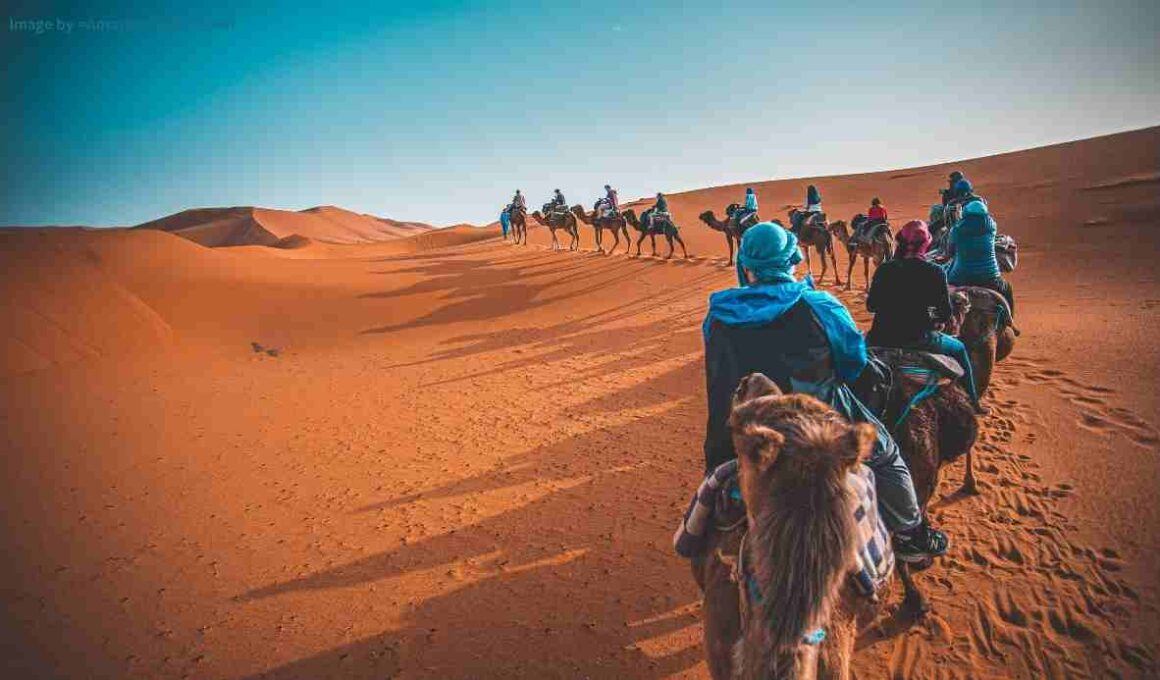
- Travel Guide
Best Time to Visit Morocco (Month-on-Month Guide) – (2024 Updated)
- 24 minute read
- December 27, 2023

Welcome to the mesmerizing world of Morocco ! This North African gem is a land of enchantment, where vibrant colors, rich history, and captivating landscapes converge. From bustling souks to ancient medinas, and from majestic landmarks to breathtaking natural wonders, Morocco has a plethora of popular attractions that will leave you awestruck.

About Morocco country: An overview

Morocco country, situated in North Africa, boasts a diverse cultural blend shaped by Arab, Berber, European, and African influences. Known for its hospitality and tolerance, Morocco is a captivating mix of history, art, and cuisine.
Its strategic location across the Strait of Gibraltar from Spain has influenced its rich heritage. The country’s terrain features striking mountain ranges and overlooks both the Mediterranean Sea and the Atlantic Ocean. Morocco was a French protectorate from 1912 to 1956.
The Kingdom of Morocco embraces a multifaceted identity, blending African, Arab, and Amazigh (Berber) elements, creating a unique cultural tapestry. The Sa’adi monarchy’s reign during the 16th century marked a prosperous era, notably under Ahmad al-MANSUR. This history, coupled with its diverse landscapes and vibrant culture, makes Morocco a fascinating destination for travelers seeking an enriching experience.
How to get to Morocco?
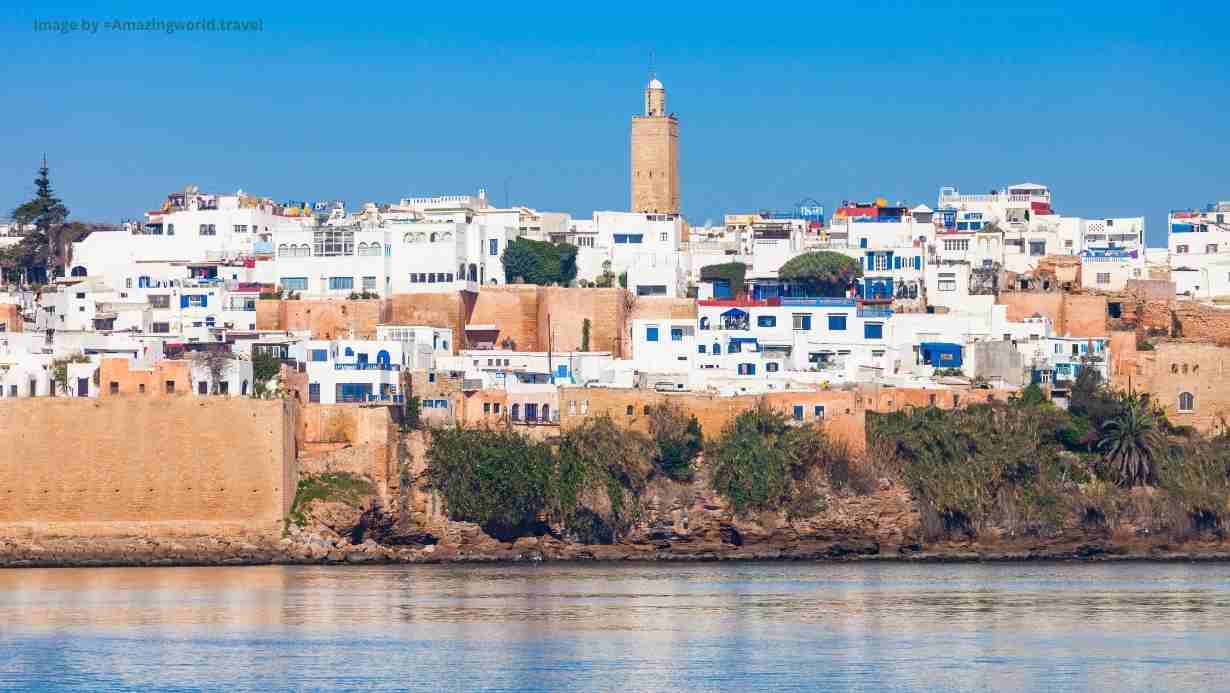
International Flights: Most visitors arrive in Morocco via international flights to major airports like Marrakech Menara Airport (RAK), Casablanca Mohammed V International Airport (CMN), and Fes-Saïs International Airport (FEZ). These airports have connections to numerous cities worldwide.
Airlines: Airlines such as Royal Air Maroc, Air France, Emirates, British Airways, and others operate flights to Morocco from major cities across Europe, North America, the Middle East, and other continents.
By Sea: Morocco has several ports along its coastline, and some travelers prefer to arrive by ferry. Popular ferry routes connect Spain (from ports like Algeciras, Tarifa, and Malaga) to Moroccan cities like Tangier and Ceuta.
By Land: Overland travel to Morocco is possible from neighboring countries such as Algeria and Mauritania. However, it’s essential to check border crossing regulations and travel advisories beforehand.
Visa Requirements: Visitors from many countries do not need a visa for short-term stays (usually up to 90 days) for tourism purposes. However, visa requirements vary by nationality, so it’s crucial to check the specific visa regulations for your country before traveling.
Transport Within Morocco: Once in Morocco, transportation options include domestic flights, trains, buses, and rental cars to travel between cities and regions. Major cities have well-connected transportation networks, and intercity travel is relatively efficient.
What is Morocco known for?

Morocco is known for its rich cultural heritage, stunning landscapes, vibrant cities, and one-of-a-kind experiences. Morocco is well-known for several things, including:
- Moroccan culture is a fusion of Arab, Berber, and African influences, which can be seen in its traditions, cuisine, music, and art. The diverse population of the country contributes to the country’s multicultural ethos.
- Historical Wonders: Ancient cities such as Marrakech, Fez, and Meknes have fascinating medinas (old towns) with labyrinthine streets, historic palaces, and architectural wonders such as the Koutoubia Mosque and the Medersa Ben Youssef.
- Moroccan artisans are well known for their intricate craftsmanship, which can be seen in items such as vibrant textiles, pottery, ceramics, leather goods, brass and metalwork, and the famous Moroccan carpets.
- Moroccan cuisine is celebrated around the world for its flavors and spices. Couscous, tagines (slow-cooked stews), pastilla (a savory pastry), and flavorful mint tea are popular dishes. Food markets and street vendors provide a delectable culinary experience.
- Morocco’s vast Sahara Desert is an iconic destination, offering camel treks, camping under the stars, and the chance to explore the mesmerizing dunes of Merzouga and Erg Chebbi.
- The Atlas Mountains offer breathtaking landscapes, trekking opportunities, and access to traditional Berber villages, providing insights into rural Moroccan life and culture.
- Beautiful beaches, coastal towns like Essaouira, and water sports like surfing and kiteboarding can be found along Morocco’s Atlantic and Mediterranean coasts.
- Moroccans are known for their warm hospitality, greeting visitors with traditional mint tea and genuine friendliness.
- Morocco’s varied landscapes have been featured in several films and television shows, including “Gladiator,” “Game of Thrones,” and “The Mummy,” among others.
- Colorful Festivals and Events: Morocco hosts several festivals throughout the year that celebrate music, dance, art, and religious traditions, such as the Mawazine Music Festival and the Gnaoua World Music Festival.
Morocco’s allure stems from its diverse offerings, which range from ancient history and cultural riches to natural wonders and warm hospitality, making it an enticing destination for travelers looking for an authentic and immersive experience.
Understanding Morocco Seasons
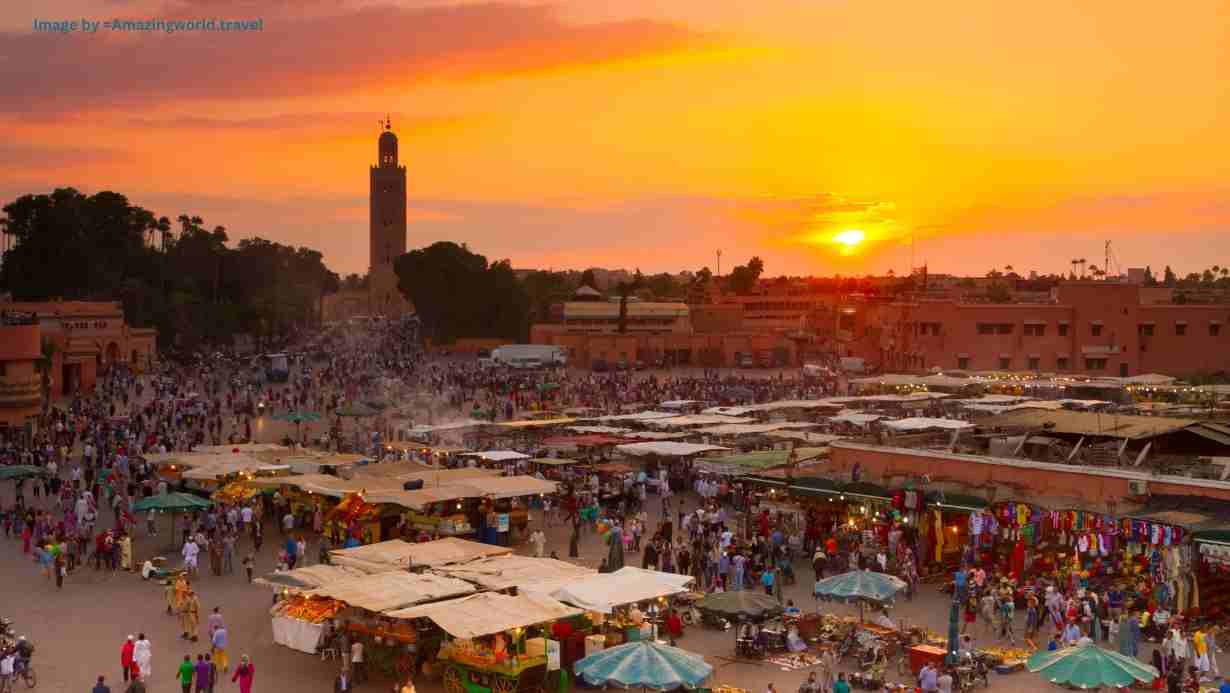
Morocco’s diverse climate offers something for everyone, no matter what season you choose to visit. Here’s a breakdown of each season to help you plan your perfect trip:
Spring (March to May):
- Weather: Pleasant and sunny, with temperatures in the 70s and 80s °F (21-27°C). Perfect for outdoor activities.
- Crowds: Moderate, with fewer tourists compared to summer.
- Ideal for Hiking in the Atlas Mountains, exploring cities, enjoying beaches, and attending festivals like the Rose Festival in Kelaat M’Gouna or the Mawazine Festival in Rabat.
Summer (June to August):
- Weather: Hot and sunny, with temperatures often exceeding 100°F (38°C). Expect scorching days, especially in inland areas.
- Crowds: Peak season, with bustling beaches and tourist hotspots.
- Ideal for: Relaxing on the beach, swimming in the ocean, enjoying nightlife, and attending festivals like the Essaouira Kite Festival or the Fantasia Horse Show in Meknes.
Autumn (September to November):
- Weather: Comfortable and sunny, with warm days and cool nights. Temperatures in the 70s and 80s °F (21-27°C).
- Crowds: Smaller crowds compared to summer, offering more peaceful exploration.
- Ideal for: Hiking, exploring cities, desert safaris, and attending the Fantasia Festival in Marrakech or the International Film Festival in Marrakech.
Winter (December to February):
- Weather: Mildest time of year, with temperatures in the 60s and 70s °F (15-21°C). Occasional rain and snow in the mountains.
- Crowds: Lowest number of tourists, ideal for those seeking solitude.
- Ideal for: Skiing in the High Atlas Mountains, exploring the Sahara Desert, visiting southern cities like Agadir, and experiencing Christmas and New Year’s celebrations in Marrakech.
Month-by-Month Guide for Traveling in Switzerland

January in Morocco

Best Places to Visit in Morocco:
January in Morocco offers a diverse range of destinations to explore, each with its unique charm and appeal:
- Marrakech: Marrakech, with its bustling souks, historical sites like the Jardin Majorelle, and the vibrant Djemaa el-Fna square, remains a top attraction. In January, the city experiences mild temperatures during the day, perfect for exploring its cultural treasures.
- Fez: Fez, known for its well-preserved ancient medina, offers a glimpse into Morocco’s rich history. The cooler weather in January allows visitors to wander through the narrow lanes, visit the tanneries, and explore the historic mosques and madrasas.
- Atlas Mountains: The Atlas Mountains present a breathtaking winter landscape during January. Travelers can engage in activities like hiking, skiing (especially in areas like Oukaimeden), or visiting traditional Berber villages.
Why Choose January for a Visit?
Visiting Morocco in January has its advantages:
- Mild Weather: January in Morocco generally experiences mild temperatures, making it comfortable for outdoor activities and sightseeing without the extreme heat of summer.
- Fewer Crowds: Compared to the peak tourist seasons, January sees fewer tourists, allowing visitors to enjoy attractions with less congestion and more tranquility.
- Winter Landscapes: The Atlas Mountains offer stunning winter scenery, with snow-capped peaks and picturesque landscapes, providing unique photo opportunities.
Activities and Things to Do:
- Sightseeing: Explore the historical sites, ancient medinas, and architectural wonders in cities like Marrakech, Fez, and Rabat.
- Outdoor Adventures: Engage in activities like hiking, trekking, or skiing in the Atlas Mountains, which showcase breathtaking winter vistas.
- Cultural Immersion: Attend local workshops, visit artisan markets, and experience traditional Moroccan culture, including mint tea ceremonies and local cuisine.
Events & Festivals:
- Imilchil Marriage Festival: Although it usually occurs in September, the Imilchil Marriage Festival in January might still offer glimpses into Berber traditions.
- Almond Blossom Festival: Some regions, particularly in the Tafraoute area, might celebrate the blooming of almond trees in January.
Things to Avoid:
- Unpreparedness for Weather: While it’s generally mild, weather variations might occur, especially in the mountains. Prepare with appropriate clothing for both mild and cooler temperatures.
- Underestimating Crowds: Although fewer tourists visit in January, popular attractions might still have moderate crowds, so plan accordingly to avoid disappointment.
Visiting Morocco in January presents an opportunity to explore diverse landscapes, experience cultural authenticity, and enjoy a relatively peaceful atmosphere while discovering the country’s treasures.
February in Morocco
February continues to offer a variety of enchanting destinations for travelers:
- Essaouira: Known for its charming coastal vibe, Essaouira beckons visitors with its historic medina, sandy beaches, and vibrant art scene. The mild February weather makes it an excellent time for beach walks and water sports.
- Chefchaouen: The “Blue City” of Chefchaouen captivates with its picturesque blue-washed buildings. February provides a quieter atmosphere, allowing visitors to explore its narrow streets and enjoy its tranquil ambiance.
- Sahara Desert: While the Sahara Desert can be chilly at night, February offers moderate daytime temperatures, making it an opportune time for camel treks, camping under the stars, and experiencing the vast desert landscape.
Why Choose February for a Visit?
February in Morocco presents several compelling reasons for travel enthusiasts:
- Moderate Climate: February brings pleasant temperatures across many regions, making it comfortable for outdoor activities without the summer heat.
- Off-Peak Season: It’s still relatively less crowded compared to peak tourist months, allowing for more intimate experiences at popular sites.
- Festival and Event Highlights: Some areas may host cultural events or festivals, offering a chance to witness local traditions and celebrations.
- Coastal Explorations: Enjoy beach activities, seafood dining, and exploring the laid-back atmosphere of coastal towns like Essaouira or Agadir.
- Hiking and Nature Trails: Take advantage of the milder weather for trekking in the Rif Mountains or exploring nature reserves like Toubkal National Park.
- Cultural Immersion: Engage with locals, visit art galleries, and immerse yourself in the unique ambiance of cities like Chefchaouen, known for its artistic community.
Events & Festivals: Almond Blossom Festivals: In some regions, February marks the continuation of almond blossom festivals, celebrating the beauty of blooming almond trees.
- Assuming Consistent Weather: While generally mild, weather fluctuations can occur, especially in mountainous or desert areas. Pack layers to accommodate varying temperatures.
- Overlooking Advance Bookings: Despite lower tourist numbers, popular accommodations or tours may still require bookings, especially in sought-after destinations.
February in Morocco offers a delightful balance between pleasant weather, cultural exploration, and diverse landscapes, making it an ideal time for travelers seeking an authentic Moroccan experience with fewer crowds.
March in Morocco offers a range of captivating destinations with pleasant weather and cultural richness:
- Meknes: Known for its imperial past, Meknes showcases architectural marvels like Bab Mansour and the historic granaries of Heri es-Souani. The moderate climate in March allows for exploration without the scorching heat.
- Tangier: Tangier’s unique position at the meeting point of the Atlantic Ocean and the Mediterranean Sea makes it a cultural melting pot. Visitors can explore its medina, art galleries, and historical sites while enjoying comfortable temperatures.
- Agadir: As a popular coastal resort town, Agadir beckons travelers with its sandy beaches, seaside promenades, and relaxing atmosphere. March offers pleasant weather for beach activities and strolls.
Why Choose March for a Visit?
March presents an ideal time to explore Morocco for several compelling reasons:
- Mild Weather: The weather in March is typically mild and comfortable across various regions, making it perfect for outdoor activities and sightseeing without the intensity of summer heat.
- Cultural Immersion: The moderate tourist season allows for more authentic interactions with locals and a deeper dive into Moroccan traditions and customs.
- Diverse Activities: From exploring historical sites to enjoying coastal escapes or engaging in outdoor adventures, March offers a diverse range of activities catering to different preferences.
- Exploring Historical Sites: Discover the rich heritage of cities like Meknes, Rabat, and Tangier by visiting ancient medinas, historic landmarks, and architectural wonders.
- Beach Relaxation: Enjoy the coastal charm of destinations like Agadir or Essaouira, indulging in beach activities, watersports, and leisurely walks along the shorelines.
- Hiking and Nature Excursions: Venture into the Atlas Mountains or national parks for scenic hikes, exploring nature trails, and immersing in Morocco’s natural beauty.
- International Nomad Festival: In certain regions, March might feature the International Nomad Festival, celebrating nomadic culture with music, dance, and traditional displays.
- Underestimating Sun Exposure: While the weather is mild, the sun can still be strong. Visitors should use sunscreen, hats, and protective clothing, especially during outdoor activities.
- Ignoring Local Customs: Respect local customs and dress modestly, especially when visiting religious sites or more conservative areas, to avoid any inadvertent cultural offense.
March in Morocco offers a delightful blend of moderate weather, cultural exploration, and a diverse range of activities, making it an opportune time for travelers to experience the country’s rich tapestry in a relaxed and enjoyable manner.
April in Morocco
April in Morocco invites travelers to explore various captivating destinations:
- Casablanca: As a bustling modern city, Casablanca offers a blend of contemporary life and historical landmarks like the Hassan II Mosque, Corniche Ain Diab, and vibrant markets. In April, the city experiences pleasant temperatures for exploration.
- Rabat: The capital city, Rabat, boasts historical sites such as the Kasbah of the Udayas, Chellah Necropolis, and the Royal Palace. April provides favorable weather for discovering its cultural treasures.
- Ouarzazate: Known as the gateway to the Sahara Desert, Ouarzazate is famed for its movie studios, ancient kasbahs like Ait Ben Haddou, and the stunning Atlas Film Studios. April offers comfortable temperatures for exploring the desert environs.
Why Choose April for a Visit?
April presents an enticing time to visit Morocco for several reasons:
- Springtime Blooms: April heralds the arrival of spring, adorning landscapes with colorful blossoms and lush vegetation, enhancing the scenic beauty across the country.
- Moderate Weather: The weather in April remains mild and pleasant, ideal for outdoor activities, sightseeing, and exploring various regions without extreme temperatures.
- Cultural Experiences: With the moderate tourist influx, travelers can immerse themselves more deeply in local culture, interact with residents, and witness authentic traditions and festivals.
- City Exploration: Discover the vibrant city life and historical landmarks in cities like Casablanca, Rabat, and Tangier, where moderate temperatures allow for comfortable walks and sightseeing.
- Sahara Desert Excursions: Venture into the Sahara Desert on camel treks or 4×4 tours, visit ancient kasbahs, and witness mesmerizing sunsets amidst the desert landscape.
- Cultural Immersion: Engage in local markets, savor traditional cuisine, and participate in cultural activities or workshops, gaining insights into Morocco’s diverse heritage.
Events & Festivals: Marrakech Popular Arts Festival: April might feature the Marrakech Popular Arts Festival, celebrating Moroccan traditional music, dance, and arts in the city’s vibrant atmosphere.
- Overpacking for Heat: While temperatures are mild, it’s advisable to pack layers for cooler evenings or if traveling to higher elevations like the Atlas Mountains.
- Underestimating Crowds: Though not as busy as peak seasons, popular tourist sites may still have moderate crowds, especially during holidays or festivals. Plan visits accordingly.
April in Morocco offers a delightful fusion of springtime beauty, moderate weather, and diverse cultural experiences, making it an excellent time for travelers seeking a balanced exploration of Morocco’s heritage and landscapes.
May in Morocco
May presents an array of captivating destinations to explore across Morocco:
- Marrakech: Known for its vibrant medina, historical sites like the Bahia Palace, and the lively Jemaa el-Fna square, Marrakech is a cultural hub. May offers pleasant temperatures for exploring its bustling streets and markets.
- Atlas Mountains: May provides an excellent opportunity to explore the stunning Atlas Mountains. Visitors can engage in hiking, trekking, or visiting Berber villages to witness the mountainous landscapes and local traditions.
- Merzouga (Sahara Desert): Merzouga, famous for its majestic sand dunes, offers an unforgettable desert experience. May offers relatively moderate temperatures for camel treks, camping, and enjoying the desert scenery.
Why Choose May for a Visit?
May is an appealing time to visit Morocco for several reasons:
- Mild Spring Weather: May signifies the arrival of spring in full bloom, offering mild and pleasant temperatures across most regions, making it ideal for outdoor exploration.
- Flourishing Landscapes: The countryside blossoms with greenery and colorful flora, creating picturesque landscapes and enhancing the natural beauty of Morocco.
- Festivals and Celebrations: Various cultural events and festivals take place in May, providing opportunities to witness traditional music, dance, and local festivities.
- Exploring Marrakech: Dive into Marrakech’s vibrant culture, visit historical sites, shop at souks, and experience the city’s energetic ambiance during the comfortable May weather.
- Atlas Mountains Adventures: Engage in hiking trails, nature walks, or cultural tours in the Atlas Mountains, interacting with local communities and enjoying the stunning mountain vistas.
- Sahara Desert Excursions: Experience the magic of the Sahara Desert through camel treks, camping, and enjoying the serene desert landscapes in places like Merzouga or Zagora.
Events & Festivals: Gnaoua World Music Festival: May may feature the Gnaoua World Music Festival in Essaouira, celebrating music and cultural diversity with performances and artistic showcases.
- Underestimating Sun Protection: Despite mild temperatures, the sun can be strong. It’s essential to use sunscreen, wear hats, and stay hydrated during outdoor activities.
- Overlooking Cultural Sensitivity: Respect local customs, particularly during festivals or in more conservative areas, by dressing modestly and adhering to cultural norms.
May in Morocco offers a vibrant tapestry of cultural experiences, natural beauty, and favorable weather conditions, providing an excellent opportunity for travelers to immerse themselves in the country’s diverse landscapes and rich heritage.
June in Morocco
June offers a spectrum of enticing destinations to explore:
- Essaouira: Essaouira’s coastal charm remains inviting in June, with its sandy beaches, historic medina, and art scene. The pleasant weather allows for beach activities and leisurely explorations.
- Chefchaouen: The “Blue City” of Chefchaouen maintains its allure in June with its picturesque blue-washed buildings. Visitors can explore its serene streets, visit local artisans, and enjoy the cooler mountain climate.
- Dades Valley: Dades Valley, known for its stunning gorges and picturesque landscapes, offers pleasant temperatures in June, making it an ideal time for hiking, exploring the valley, and experiencing its natural beauty.
Why Choose June for a Visit?
June presents unique reasons to explore Morocco:
- Coastal Escapes: Coastal towns like Essaouira offer a pleasant respite from the summer heat, with refreshing sea breezes and enjoyable beach activities.
- Moderate Temperatures: In regions like Chefchaouen and the Atlas Mountains, June offers comfortable temperatures for exploration without the scorching heat experienced in midsummer.
- Favorable for Outdoors: June allows for various outdoor activities, including beach outings, hiking, and exploring the diverse landscapes, thanks to the comfortable weather conditions.
- Coastal Relaxation: Enjoy beach activities, water sports, or simply unwind along the coastline in places like Essaouira or Agadir, taking advantage of the moderate temperatures.
- Cultural Immersion: Explore the unique atmosphere of Chefchaouen, wandering through its blue alleys, visiting local artisans, and experiencing the town’s artistic community.
- Outdoor Adventures: Engage in hiking trails, nature walks, or cultural tours in the Atlas Mountains or valleys like Dades, reveling in the scenic beauty and cooler climate.
Events & Festivals: Fes Sacred Music Festival: June might feature the Fes Sacred Music Festival, celebrating world music and spiritual traditions, offering unique musical performances and cultural experiences.
- Overpacking for Heat: While temperatures are generally moderate, it’s advisable to pack light clothing suitable for warmer days, especially in inland areas.
- Underestimating Sun Protection: Even with moderate temperatures, sun protection remains crucial. Apply sunscreen and stay hydrated during outdoor activities.
June in Morocco presents a wonderful opportunity for travelers seeking coastal escapes, mountain adventures, and cultural immersions amidst comfortable temperatures, making it an enjoyable time to explore the diverse facets of the country’s landscapes and heritage.
July in Morocco
July offers an array of captivating destinations across Morocco:
- Tangier: Tangier’s unique location at the crossroads of the Mediterranean and the Atlantic makes it a cultural hotspot. In July, the city experiences warm temperatures, perfect for beach visits and exploring its historical sites.
- Agadir: As a popular coastal resort town, Agadir beckons with its beautiful beaches and relaxed atmosphere. July provides ideal weather for beach activities and leisurely seaside strolls.
- Todgha Gorges: Todgha Gorges, known for its breathtaking canyon and natural beauty, offers slightly cooler temperatures in July, making it suitable for trekking, sightseeing, and enjoying the stunning landscapes.
Why Choose July for a Visit?
July brings forth certain advantages for exploring Morocco:
- Beach Getaways: Coastal towns like Tangier and Agadir offer warm weather, ideal for indulging in beach activities, water sports, and soaking up the Mediterranean and Atlantic vibes.
- Longer Days for Exploration: July brings longer daylight hours, allowing for extended explorations and activities, whether at the beach, in the cities, or exploring nature.
- Lively Atmosphere: The summer months attract a vibrant energy with locals and tourists alike, offering a lively ambiance and various entertainment options.
- Beach Escapes: Enjoy the sun, sea, and sand in coastal towns like Tangier and Agadir, engaging in activities like swimming, surfing, or simply relaxing by the shore.
- Exploring Cities: Wander through the historical sites, markets, and cultural landmarks of cities like Tangier or Rabat, taking advantage of the warm weather for sightseeing.
- Nature Exploration: Visit scenic spots like Todgha Gorges for hiking, nature walks, or photography amidst the impressive canyon landscape.
- National Throne Day: Celebrated on July 30th, National Throne Day commemorates the ascension of the King of Morocco to the throne, marked with patriotic events and ceremonies.
- Overexposure to the Sun: As July can be hot, it’s crucial to stay hydrated, use sunscreen, and seek shade during peak sun hours to avoid sunburn and heat-related issues.
- Crowded Tourist Spots: Popular tourist destinations may experience increased crowds during the summer months, so plan visits accordingly to avoid large queues or congestion.
July in Morocco offers a blend of coastal relaxation, cultural experiences, and opportunities to explore nature, catering to travelers seeking warm weather and a vibrant atmosphere during their Moroccan adventure.
August in Morocco
August boasts a variety of enchanting destinations for travelers to explore:
- Marrakech: Marrakech remains a vibrant hub, offering historical sites like the Koutoubia Mosque and the bustling souks of the medina. In August, while temperatures are high, the city’s cultural richness continues to attract visitors.
- Atlas Mountains: The Atlas Mountains present a cooler escape in August compared to lower-lying regions. Travelers can enjoy trekking, exploring Berber villages, and experiencing the mountainous landscapes.
- Merzouga (Sahara Desert): Despite the heat, Merzouga offers a unique desert experience in August. Camel treks, overnight camping, and experiencing the vast dunes of the Sahara remain highlights, albeit with the need for extra precautions due to high temperatures.
Why Choose August for a Visit?
August presents specific reasons for exploring Morocco:
- Summer Vibes: August offers a summertime atmosphere, ideal for beach visits, mountain retreats, and experiencing the vibrant culture of cities like Marrakech.
- Festive Atmosphere: The summer months often bring a lively ambiance with various entertainment options, events, and cultural activities across different regions.
- Extended Daylight: Longer daylight hours in August provide more time for sightseeing and engaging in activities throughout the day.
- City Exploration: Discover Marrakech’s bustling markets, historical sites, and architectural wonders while taking breaks in shaded areas to escape the heat.
- Mountain Adventures: Escape the summer heat by exploring the Atlas Mountains, engaging in trekking, visiting traditional villages, and enjoying cooler temperatures at higher altitudes.
- Desert Excursions: Experience the Sahara Desert with caution, engaging in camel treks, camping, and watching stunning sunsets, while being mindful of the high temperatures.
Events & Festivals: Imilchil Marriage Festival: In August, some regions may celebrate the Imilchil Marriage Festival, showcasing Berber traditions and cultural ceremonies.
- Heat-related Issues: August can be extremely hot, especially in desert areas. Travelers should stay hydrated, seek shade, and limit outdoor activities during peak sun hours to avoid heat exhaustion.
- Overpacking for Summer: Pack lightweight clothing, sunscreen, and hats, and stay hydrated to cope with the intense summer heat, especially in desert or lowland regions.
August in Morocco offers a blend of cultural experiences, outdoor adventures, and a lively atmosphere, catering to travelers seeking diverse landscapes and the allure of Moroccan heritage, albeit with considerations for the higher temperatures prevalent during this time.
September in Morocco
September invites exploration of diverse destinations across the country:
- Fez: Fez, renowned for its ancient medina and historical sites like the Al-Attarine Madrasa, offers a pleasant climate in September for immersive cultural experiences.
- Chefchaouen: The picturesque blue-hued streets of Chefchaouen retain their charm in September with milder temperatures, ideal for leisurely explorations and engaging with local artisans.
- Ait Ben Haddou: Ait Ben Haddou, a UNESCO World Heritage Site, showcases stunning kasbahs and desert landscapes. September offers favorable weather for touring this historic site.
Why Choose September for a Visit?
September presents appealing attributes for visiting Morocco:
- Transitional Weather: September marks the transition from summer to autumn, providing comfortable temperatures across various regions for outdoor activities and sightseeing.
- Reduced Crowds: With the peak tourist season winding down, September offers a quieter atmosphere at popular attractions, allowing for more intimate experiences.
- Favorable for Exploration: The mild weather makes it conducive for exploring cities, historical sites, and natural landscapes without the intense heat of summer.
- Historical Explorations: Discover the cultural treasures of Fez, explore its labyrinthine medina, and visit historical monuments, enjoying the moderate temperatures.
- Artisanal Encounters: Engage with local artisans in Chefchaouen, known for its vibrant arts scene, and explore the town’s picturesque streets and craft shops.
- Desert Tours: Explore the desert regions like Ait Ben Haddou or Merzouga, enjoying camel treks, discovering ancient kasbahs, and experiencing the desert landscapes.
Events & Festivals: Tan-Tan Moussem: September may host the Tan-Tan Moussem, a traditional festival celebrating local culture, music, and tribal traditions in the Tan-Tan region.
- Underpreparedness for Weather Changes: While temperatures are generally pleasant, regions like the desert or mountains might experience cooler nights, so it’s advisable to carry layers for temperature variations.
- Overlooking Early Bookings: Despite reduced crowds, popular accommodations or tours might still require early bookings, especially in sought-after destinations.
September in Morocco offers a delightful balance between mild weather, cultural exploration, and diverse landscapes, making it an opportune time for travelers seeking a relaxed and immersive experience in this captivating North African country.
October in Morocco
October offers a diverse range of captivating destinations:
- Marrakech: Marrakech continues to enthrall visitors with its vibrant souks, historical sites like the Bahia Palace, and the bustling Djemaa el-Fna square. In October, the city experiences comfortable temperatures for exploration.
- Essaouira: Essaouira’s coastal charm remains inviting in October, with its sandy beaches, art galleries, and laid-back atmosphere. The mild weather makes it an ideal time for beach activities and exploring the city’s culture.
- High Atlas Mountains: The High Atlas Mountains offer stunning landscapes and trekking opportunities. In October, the weather is pleasant for hiking, visiting Berber villages, and enjoying the mountainous scenery.
Why Choose October for a Visit?
October presents several enticing reasons to explore Morocco:
- Mild Autumn Weather: October marks the autumn season, providing comfortable temperatures across most regions, ideal for outdoor activities and sightseeing.
- Favorable for Various Adventures: The mild climate in October allows travelers to engage in diverse activities, whether exploring cities, enjoying beach outings, or trekking in the mountains.
- Cultural Experiences: With fewer tourists compared to the peak season, October offers opportunities for more intimate experiences, interaction with locals, and a deeper dive into Moroccan culture.
- Exploring Marrakech: Dive into Marrakech’s lively atmosphere, visit historical sites, and get lost in the vibrant souks while relishing the pleasant October weather.
- Coastal Relaxation: Enjoy the coastal charm of Essaouira, partake in water sports, or simply unwind on the beaches, soaking in the relaxed ambiance of the city.
- Mountain Adventures: Embark on hiking trails in the High Atlas Mountains, experiencing picturesque landscapes, interacting with local communities, and enjoying the cooler mountain climate.
Events & Festivals: Erfoud Date Festival: In October, Erfoud might celebrate the Erfoud Date Festival, honoring the date harvest with cultural events, music, and traditional performances.
- Underestimating Temperature Changes: While days are pleasant, evenings in mountainous areas can be cooler. Packing layers ensures comfort during temperature fluctuations.
- Unplanned Bookings: Despite fewer tourists, popular accommodations or tours may still require advance bookings, especially in sought-after destinations.
October in Morocco presents an ideal balance between mild weather, cultural exploration, and diverse outdoor activities, offering travelers an opportunity to discover the country’s heritage and landscapes in a relaxed and enjoyable manner.
November in Morocco
November offers a variety of captivating destinations to explore:
- Fes: Fes, known for its ancient medina and intricate architecture, maintains its allure in November. Visitors can explore historical sites, traditional markets, and the vibrant culture of this imperial city.
- Dades Valley: Dades Valley, with its stunning gorges and scenic landscapes, provides pleasant temperatures in November, ideal for hiking, sightseeing, and immersing in the natural beauty of the region.
- Tangier: Tangier’s unique position at the meeting point of the Mediterranean and the Atlantic Ocean remains inviting in November. The city offers historical sites, vibrant markets, and a pleasant coastal ambiance.
Why Choose November for a Visit?
November presents compelling reasons to explore Morocco:
- Mild Autumn Climate: November experiences mild temperatures across many regions, making it comfortable for outdoor activities, exploring cities, and visiting historical sites without the summer heat.
- Reduced Crowds: As the peak tourist season winds down, November offers a quieter atmosphere, allowing for more relaxed and intimate experiences at popular attractions.
- Cultural Immersion: With fewer tourists, visitors can engage more deeply in Moroccan culture, interact with locals, and discover traditions and customs authentically.
- Exploring Fes: Delve into Fes’ historical heritage by wandering through its medina, visiting mosques, and experiencing the city’s traditional craftsmanship and artisanal culture.
- Nature Excursions: Visit Dades Valley for hikes, exploring the gorges, and enjoying the breathtaking landscapes adorned with autumn hues in November.
- Coastal Strolls: Enjoy leisurely walks along Tangier’s coastline, visit historical landmarks, and savor the city’s cultural blend with pleasant November weather.
Events & Festivals: Independence Day: November 18th marks Morocco’s Independence Day, celebrated with patriotic events, parades, and cultural festivities across the country.
- Unprepared for Cooler Evenings: While daytime temperatures are comfortable, evenings in some areas might be cooler. Packing layers ensures comfort throughout the day.
- Assuming Availability: Despite fewer crowds, certain tours or accommodations might still require bookings, especially during specific events or in popular areas.
November in Morocco offers a delightful blend of mild weather, cultural exploration, and diverse landscapes, making it an opportune time for travelers seeking a tranquil and immersive experience in this enchanting North African country.
December in Morocco
December offers diverse and enchanting destinations to explore:
- Marrakech: Marrakech remains a cultural treasure trove in December with its bustling souks, historical sites, and vibrant atmosphere. Visitors can explore the city’s attractions while enjoying cooler temperatures.
- Sahara Desert (Merzouga): Despite cooler temperatures, the Sahara Desert in places like Merzouga retains its allure in December. Travelers can still experience camel treks, and desert camping, and enjoy the majestic dunes.
- Ourika Valley: The Ourika Valley, nestled in the Atlas Mountains, offers breathtaking scenery and Berber villages. In December, visitors can hike, explore waterfalls, and experience the region’s natural beauty.
Why Choose December for a Visit?
December provides several compelling reasons to explore Morocco:
- Mild Winter Climate: While some areas experience cooler weather, December generally offers mild temperatures across regions, making it comfortable for sightseeing and outdoor activities.
- Festive Atmosphere: December brings a festive vibe with Christmas and New Year’s celebrations, offering a unique cultural blend and a lively ambiance in various cities and towns.
- Scenic Landscapes: The landscapes, especially in mountainous regions, showcase a scenic charm with snow-capped peaks, adding an extra layer of beauty to the surroundings.
- Exploring Marrakech: Wander through Marrakech’s historic medina, visit architectural wonders like the Koutoubia Mosque, and immerse in the city’s bustling souks amidst cooler yet pleasant temperatures.
- Desert Adventures: Experience the Sahara Desert in Merzouga with caution due to cooler nights, enjoying camel treks, desert camps, and mesmerizing sunsets over the dunes.
- Mountain Escapes: Explore the Ourika Valley, engage in hikes, visit Berber villages, and witness stunning waterfalls amid the picturesque landscapes.
Events & Festivals: Christmas & New Year Celebrations: While not an official Moroccan holiday, cities like Marrakech and Casablanca often host festivities, events, and decorations for Christmas and New Year’s Eve.
- Underestimating Winter Weather: While generally mild, some regions experience cooler temperatures. Packing layers ensures comfort, especially for visits to higher elevations.
- Last-Minute Reservations: Due to holiday tourism, it’s advisable to secure accommodations and tours in advance, especially in popular destinations during the festive season.
December in Morocco presents a charming blend of mild winter weather, cultural celebrations, and diverse landscapes, offering travelers an opportunity to experience the country’s rich heritage and natural beauty in a unique and festive setting.
Beyond the Seasons: Worst Time to Visit Switzerland

Popular Attractions in Morocco
- Marrakesh Medina: Known for its vibrant souks and historical significance
- Chefchaouen: Famous for its blue-washed buildings and picturesque streets
- Erg Chebbi’s Dunes: A stunning desert landscape popular for activities like camel trekking and sandboarding
- Fes el Bali: One of the best-preserved old cities in the Arab-Muslim world, known for its medieval architecture and traditional atmosphere
- Ait Ben Haddou: A well-preserved ancient fortified village, a UNESCO World Heritage site, and a popular filming location
- Essaouira: A coastal town known for its beautiful beaches, historic medina, and artistic atmosphere
- Volubilis: An ancient Roman city and a UNESCO World Heritage site, famous for its well-preserved ruins
- Dades Valley: Renowned for its stunning natural scenery, including dramatic rock formations and picturesque oases
- Hassan II Mosque: Located in Casablanca, it is one of the largest mosques in the world and a significant religious and architectural site
- Atlas Mountains: A paradise for trekkers and nature enthusiasts, offering breathtaking landscapes and unique cultural experiences
These attractions offer a diverse range of experiences, from historical and cultural immersion to natural beauty and outdoor activities.
Safety tips for Traveling in Morocco

While Morocco is generally a safe country to visit, it’s important to take certain precautions to ensure a safe and enjoyable trip. Here are some safety tips to keep in mind:
- Avoid crowded areas: Like any popular tourist destination, crowded areas can attract pickpockets and petty thieves. Keep an eye on your belongings and be cautious in crowded markets, train stations, and tourist sites.
- Dress modestly: As mentioned earlier, it’s respectful to dress modestly in Morocco, especially when visiting religious sites or rural areas. This can help you avoid unwanted attention.
- Use licensed taxis: When taking a taxi, make sure it’s a licensed one. They are usually painted in a distinctive color and have meters. If the taxi doesn’t have a meter, negotiate the fare in advance.
- Avoid drinking tap water: It’s advisable to drink bottled water or use a water purifier. Avoid drinking tap water or consuming ice cubes in drinks to prevent stomach illnesses.
- Research local customs and traditions: Familiarize yourself with the local customs and traditions to avoid inadvertently offending. Respect the local culture and be mindful of your actions and behaviors.
Conclusion and Final Thoughts
Morocco is a country that offers a rich tapestry of experiences, from exploring ancient medinas to trekking through the Sahara Desert. With its vibrant culture, delicious cuisine, and breathtaking landscapes, it’s no wonder that Morocco has become a popular destination for travelers from around the world. By following our expert trip advice and using our comprehensive travel guides, you can make the most out of your Moroccan adventure and create memories that will last a lifetime. So, pack your bags, immerse yourself in the enchanting beauty of Morocco, and get ready for an unforgettable journey.
How much did you like Our Detailed Best Time to Visit Morocco (Month-on-Month Guide) – (2024 Updated) ? Review Also, please share these Blogs with your friends on social media.
Recommended
- Ridgevale Beach
- Ventnor City Beach
- Little Elm Beach
- Incline Beach
- Lake Tiorati Beach
- Gillson Beach

Meet David Hoper, a passionate travel Blog writer with 7+ years of experience in travel content. Through his exemplary storytelling and engaging narratives, he shares his experiences and brings destinations to life. With a keen eye for detail and a love for exploration, he has cultivated a diverse portfolio of travel blogs that inspire and inform readers worldwide.
In this article:

Post written by: David Hoper
Leave a reply.
Your email address will not be published. Required fields are marked *
Save my name, email, and website in this browser for the next time I comment.
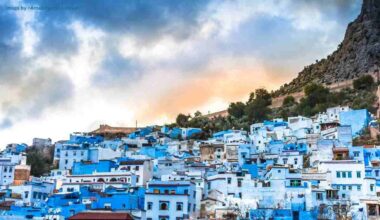
Itinerary Explore Morocco: A 7-Day Family Travel Itinerary (Updated 2024)

- December 28, 2023
United states Best Time To Visit Dallas, TX 2024 in 2025 (Our Take)
You may also like.

Top 17 Must-See Tourist Attractions in Des Moines, IA: Your 2024 Guide
- 31.4K views
- 15 minute read

22+ Must-Visit Instagram Travel Destinations in 2024 | Amazingworld
- 16 minute read

Uber vs Lyft: Pros and Cons of Each Rideshare Service
- 11 minute read

Top 12 Ride-Sharing Apps for Safe Travel in 2024

The Future of Taxi Services: Technology and Innovation on the Horizon
- 10 minute read

How to travel the world on a budget of $1,000 a month
Our latest instagram posts, @amazingworld.travel8.
THE JOURNAL
Travel Inspiration
The Best Time to Visit Morocco: An Expert Guide

The Modern Travel Agency
https://www.foratravel.com/the-journal/best-time-to-visit-morocco
The best time to visit Morocco depends on what you’re after? Maybe you want to avoid crowds in the Medina of Fes. Or perhaps you want to know when the conditions are perfect to surf along the Atlantic coast. What about the best time to go hiking in the Atlas Mountains? Or the best deals on Morocco's luxury hotels ?
We’re breaking down the best times to travel to Morocco by season and answering all of the above (and more). For tailored advice and recommendations, connect with a Fora Advisor , who will answer all your travel questions and score you A+ perks at the greatest places to stay across the country.
Morocco’s climate makes it a year-round destination (with exceptions)
While it’s probably best to avoid visiting the Sahara desert in August, for example, many destinations in Morocco are fun to visit any time of year. But there are nuances.
The best time to visit Morocco: seasonal breakdown
Read on for a more in-depth look at what makes Morocco special during each season.
Spring in Morocco (March–May)
Spring is when Morocco’s weather is at its best. Gorgeous wildflower blooms occur in the mountains while the northern regions are at their greenest. Many of Morocco’s best places to visit , especially the cities, see larger international crowds. This can be a deterrent — and traversing the souks (Moroccan open-air markets) in major cities, for example, can be a little overwhelming. But if you don’t mind crowds, spring is arguably the best time to visit Morocco overall.
Spring is the best time to visit the Sahara Desert (though visiting in fall makes sense, too)
If the Sahara desert is on your Morocco itinerary , visiting in April or May is a must. The temperature swings aren’t as stark as they are during winter and it doesn’t get quite as hot as it does in summer.
The Sahara is quite beautiful in its own way. There’s a serenity here that cities and towns lack. You can also partake in more adventurous activities like riding camels, off-roading and sandboarding.
Want details on tours or rentals? Ask a Fora Advisor . They’ll be able to connect you with trusted partners on the ground so you can enjoy an amazing, worry-free experience.
Spring is also the best time to hike the Atlas Mountains
The weather in the Atlas Mountains is much less extreme than that of the Sahara. You can have fun here any time of year, but spring is a special time to visit. Valley wildflowers bloom in spring, adding pops of color amid the snow-capped peaks and verdant valleys. The views are stunning, and make for an incredible backdrop for hiking (one of our favorite things to do in Morocco).
Early spring isn’t always the best time to visit the Atlantic coast, however
One caveat to visiting Morocco in spring, particularly around March: the Atlantic coast can be a little chilly. This isn’t as much an issue on the Mediterranean coast, which generally enjoys warmer temperatures year-round.
Summer in Morocco (June–August)
Summer can be a brutal time to visit Morocco’s interior if you’re sensitive to the heat. Most international travel grinds to a halt, while domestic travel actually peaks in summer as locals and expatriates tend to flock to the cooler coasts. There are a few reasons you might want to visit Morocco in summer, though.
July & August are Morocco’s hottest months
You may want to consider adjusting your Morocco itinerary if you’re visiting the country in July or August. Dry-bulb temperatures regularly exceed 100°F in major cities, and crowded, open-air markets aren’t exactly fun to explore when it gets that hot. Moreover, places like the Sahara can be outright dangerous to visit during summer.
Summer is the best time to visit Morocco’s Atlantic coast for experienced surfers
Beach towns like Essaouira, Morocco enjoy relatively comfortable temperatures in summer, but you’ll have to deal with crowds as domestic travelers escape the heat.
As always, there are exceptions. Some Atlantic beaches are less popular among your average traveler because of larger swells caused by the ocean’s trade winds. What’s not ideal for swimming or relaxed watersports tends to be great for surfers, kiteboarders and wakeboarders.
On a bright note: summer is the best time to travel to Morocco’s interior for affordable rates
Outside of the coastal resorts, experiences and hotels in Morocco tend to be more affordable during summer. If you’re okay with the heat, this is a great way to score a more affordable trip. Just be aware that not all resorts and experiences are available during this period (a Fora Advisor can help you sort this out).
Fall in Morocco (September–November)
Besides spring, Fall is the best time to visit Morocco. The temperatures are milder and the cities wake from their summer dormancy.
September is a sweet spot if you want to avoid the worst of the returning crowds. The temperatures are notably warmer than what you’ll experience in October or November, but they’re not as extreme as what you’ll find in August. At the same time, smaller crowds often mean good deals on accommodations and experiences.
(Want answers to common questions and a few niche tips? See our Morocco travel guide .)
Visiting the Atlas Mountains or Sahara can be pleasant in fall, too
In fall, the Atlas mountains lack the wildflower blooms and greenery that spring brings. But the comfier temperatures and still-lovely scenery make hiking a pleasant experience. The only downside is that rain is more common in fall, and can make some trails hazardous.
You won’t have to worry about rain in the Sahara, however, and the desert’s fall weather is similar to how it is in spring. Don’t forget: when you connect with a Fora Advisor , they can set you up with incredible experiences curated by trusted partners.
Winter in Morocco (December–February)
Winter is an interesting time to visit Morocco. Both international and domestic travel is at its lowest across the board, but the weather is actually pretty agreeable outside of the mountain regions.
This translates to decent rates across the country, but some experiences aren’t offered in winter. The Atlantic coast doesn’t necessarily shut down, but cold ocean temperatures make the beaches uncomfortable for anything but determined surfers, who can still enjoy good waves along some spots.
January and February are Morocco’s coldest months…
Between January and February, the average high in Morocco is around 60℉. The mountain regions are significantly colder, though, with temperatures sometimes dropping below freezing.
…which means they’re the best months to visit Morocco’s ski resorts
Morocco has a handful of ski resorts. They’re much smaller than the ritzy resorts of Europe or North America (check out our guides to the best places to stay in Colorado or skiing in the Swiss Alps ), and their season tends to be shorter. But skiing in places like Oukaimeden — arguably the top choice — makes for a unique day trip from Marrakech.
The best time to visit Morocco: FAQs
Have more questions about the best time to visit Morocco? Read on (or you can always ask a Fora Advisor ).
Overall, what’s the best time to travel to Morocco? How about Marrakech, specifically?
Ultimately, it depends on what you want to do. But most Fora Advisors agree that the best time to visit Morocco, including the city of Marrakech, is either spring or fall.
(Wondering about the best hotels in Marrakech or the top things to visit in Marrakech ? Our guides have ideas.)
Does Morocco have a rainy season? What’s the rainiest month?
Morocco does indeed have a rainy season. Between October and April, the country receives an average of two inches of rain per month. November is technically the rainiest month, but not by a huge margin. The rainy season is largely limited to the northern half of the country and along the coast. The Sahara, by contrast, receives very little or no rain most years.
When’s Morocco’s high season? Does Morocco get crowded?
Spring is peak travel season in Morocco, with fall not too far behind. During this period, the cities do indeed get crowded. That said, Morocco doesn’t receive the same kind of traffic as, say, the Caribbean or Europe (think Italy, Spain or France).
What’s the most affordable time to travel to Morocco?
Summer is easily the most affordable time to travel to Morocco’s interior. Unfortunately, it’s also extremely hot during this period. The coasts, however, tend to be most affordable during winter months.
When does Ramadan occur in Morocco? Can non-Muslims visit Morocco during this period?
Ramadan is the ninth month of the Islamic calendar, which doesn’t exactly line up with the Gregorian Calendar. As such, the dates change year to year (a Fora Advisor can totally let you know if your desired travel time falls within Ramadan).
Non-Muslims can certainly visit Morocco during Ramadan. However, many businesses and experiences operate during different or shorter hours during the month. On the flip side, Morocco experiences a drop in tourism during Ramadan, so rates may be more affordable.
Connect with Fora for help finding your best time to visit Morocco
Can’t decide when your best time to visit Morocco is? We can help. When you book and plan your trip with a Fora Advisor , they’ll help you figure out when to visit based on your travel preferences: budget, desired itinerary and / or accommodations — you name it. Plus, no matter when you travel to Morocco, your Fora Advisor will hook you up with expert recommendations and sweet perks at the best properties in Morocco.
Need more Morocco travel inspiration? Check out these guides, too:
The Amanjena Resort in Marrakech: A Design-Forward Oasis
The Traveler’s Guide to Food in Morocco
Royal Mansour Marrakech, a Regal Experience in Morocco
Fora Hotel Spotlight: Marrakech’s Mandarin Oriental Resort
5 Luxe Hotels in Casablanca, Morocco
Book with Fora
Tell us more about yourself to get matched with a Fora Advisor and start planning your dream trip today.
- Deutschland
Best Time To Visit Morocco
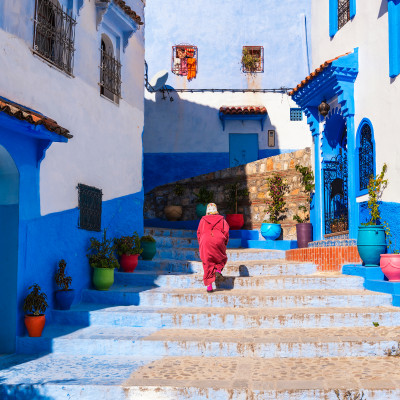
Decoding the weather across Morocco
Moroccan weather can be unpredictable from October through February and can vary from one year to the next; some winters are moderate and others are wet and cold. Although you may encounter rain, the odds of this are greatest between November and February.
Generally, the months April, May, October and early November are the best times to visit Morocco for a more comfortable, temperate climate – one that may be easier for you to maneuver around from day to day.It is during this period that tourists can take part in many of the country’s biggest celebrations. The Marathon Des Sables, the world’s toughest foot race, takes places in April in the Sahara Desert for example
Best Time To Visit
We recommend.
- Explore Agafay desert at the foothills of the Atlas Mountains with its white sand dunes and rocks and variety of frog and turtle species on a camel ride
- Get your fill of thrill with adventurous quad biking trips and exhilarating tent camping experiences in the desert
- Take a leisurely swim in Oualidia’s spectacular natural saltwater lagoon or go for a boat ride in the lagoon
- Feast on Oualidia’s famous oysters and enjoy fresh fish grilled for you right on the beach by local fishermen
- Enjoy bird watching, especially around the salt marshes of Oualidia
- Explore the rich natural and architectural history of Ouarzazate, known as a Gateway to the Sahara Desert
- Roam the cobblestoned alleys of the charming hilltop Andalusian-style village of Chefchaouen and don’t forget to photograph its striking sky-blue buildings
- When at Chefchaouen visit its medina and bustling bazaars, medieval fortress and ethnographic museum and sample the city’s goat’s cheese!
- There’s so much to see in the ancient city of Marrakech! Base yourself in a charming riad as you explore the city’s souks and alleys
- Admire Marrakech’s blend of Saharan and African traditions that give the city its unique architectural character
- Attend the Sufi festival of Fes (in April)
- Laze around on Agadir’s clean sun-kissed sands, a drink in hand from one of the sea-facing bars
- Visit its Souk el-had – a sprawling marketplace where you can find pretty much anything!
- Take a camel ride in the vicinity of the Kasbah, or even near the beach
- Head to Taroudant if you’d like to expand your understanding of Berber culture
- Walk along the ramparts of the walled city in windy and colorful Essaouira or explore the town on camels or horseback or go on quad-bike excursions
- Essaouira being a hub of artists, you will see plenty of handmade works of art in the modest souk
- Lunch at the port with fresh fish cooked right in front of you is yet another highlight of Essaouira!
- Head to the romantic city of Casablanca and marvel at its old French legacy reflected in its handsome Mauresque buildings
- There’s much to enjoy, from its Central Market to a bustling nightlife!
- Spend time in Skoura, counted among the most beautiful oases in Morocco
- Visit the impressive Amridil Kasbah, a citadel dating back to the 17th century
- There are several cultural festivals celebrated across the country during this month, so do check for exact dates in case you wish to attend them
- Experience the elegant fusion of medieval Islamic heritage and a French colonial legacy in the charming capital city of Rabat
- Don’t forget to sip on some Moroccan mint tea during your visits to the souks and immerse yourself in the region’s tea culture!
- Walk through Old Fes – trawling the intact medieval city is a surreal experience
- There are several cultural festivals happening across the country during this month, so do check the exact dates in case you want to be part of them!
- Stay in a riad in Fes and explore the city’s bustling souks, drenched in the smell of warm bread and spices
- Ensure you sign up for a food tour in the city you are in to sample Morocco’s rich, flavorful cuisine. Don’t forget the tagine!
- Head to the village of Imli from where you can attempt to scale Jbel Toubkal, North Africa’s highest mountain!
- Head to High Atlas mountain range of Morocco for an exciting trekking vacation with its many trails and stunning views of the valley
- Explore the surrounding villages with their local crafts and produce as well as trekking supplies
- Head for a camel safari among the mystical sand dunes of Merzouga
- Get a glimpse into the Berber way of life as you explore the hamlets in the region
- Look upwards in stunned silence at millions of stars crowding the night sky when you camp overnight, with Bedouins, on the undulating red-tinged dunes of the Sahara
Climate in Morocco
Summer temperatures are high from June to early September. Most of the desert camps in the south are closed during the summer, as the heat can be unbearable. Although Marrakech is usually the first stop for culture travelers, Casablanca, Morocco’s largest city, and Rabat, the capital, use their coastal positions and beaches, which are much cooler, to draw in huge numbers every year.
In general, the north and northwest have more of a Mediterranean climate . Central or inland Morocco is usually always warm and arid with temperatures often reaching into the high 90s. This climate feeds into the west Saharan coast in the southwest with temperatures ranging around 70-80° F all year round.
What to Pack
When is comes to dressing, remember that Morocco is still a predominantly Islamic country even if it has a more relaxed atmosphere than some of its neighbors. This means that as a foreigner you are not expected to adopt the local dress but doing so tends to show more respect. Think about where you are and where you are traveling to before dressing. If it is a central city like Casablanca or Marrakesh, western clothing is perfectly fine as long as it is smart but of course, if you journey into the desert or up into the highlands or a faraway rural village, you may need to reconsider your choice of apparel.
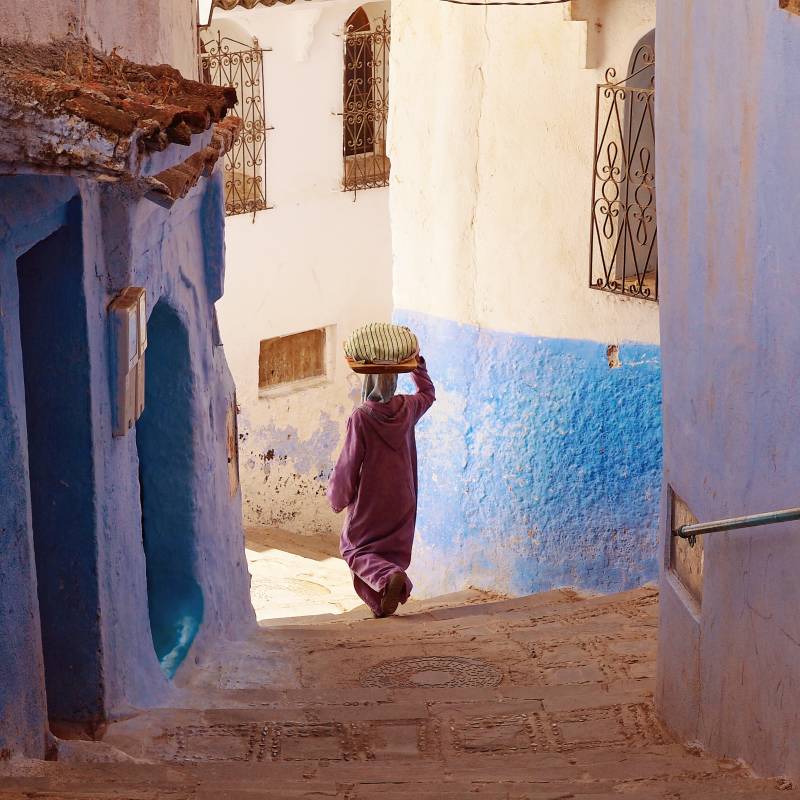
Popular Trips to Morocco
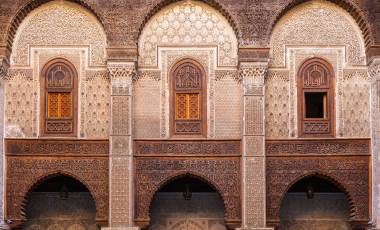
Best of Imperial Morocco
Delve into Morocco’s fascinating history and culture on this lovely self-drive tour. Explore the fabled port city of Casablanca, and marvel at the architectural wonders of three of Morocco’s Imperial Cities – Rabat, Fes and Marrakesh. Walk through quaint neighborhoods, soak in the ambience of bustling markets, and sample the irresistible local street food. Experience…
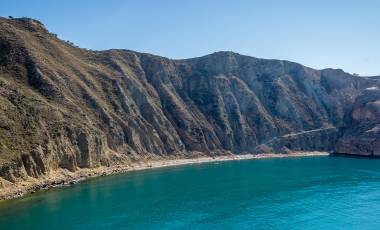
Morocco: Coast, Countryside and Royalty
Go off the beaten track and explore some of Morocco’s hidden gems on this guided tour. Soak in the rich history and culture of Tangier. Stroll through the turquoise alleys of Chefchaouen, a fortress town. Experience life in the countryside at Akchour, admire the picturesque scenery at Talassemtane National Park, and unwind at one of…
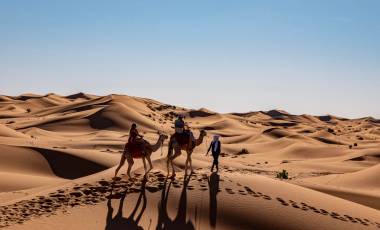
Luxury Morocco: Tales from the Sahara
Live your Arabian Nights dream on this luxury Morocco desert tour! Look forward to charming riads and heritage hotels done up in authentic local style, enjoy white-glove service, and embark on guided activities that are tailored to your wishes. Start your trip in Marrakech and explore the sights of the ‘Red City’ on a privately…
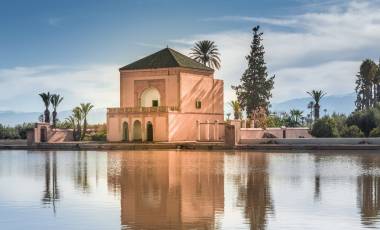
Morocco: Medina Magic and Beni Mellal
This week-long custom Morocco tour is your ideal introduction to the rich culture that thrives in the country’s ancient, Imperial cities. Explore cosmopolitan Casablanca with its bustling Central Market and the beachside suburb of Ain Diab on a private tour. In Rabat, marvel at the architectural grandeur of landmarks such as the Hassan Tower, along…
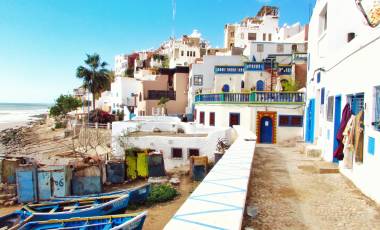
Southern Morocco and Coastal Gems
On this tailor-made Morocco vacation, discover beautiful southern towns, seaside villages and age-old customs on the Atlantic Coast. Beginning in Marrakech, take a private tour of the red city with an experienced local, exploring its busy souks and Arab and Jewish architecture. Visit the fortress city of Taroudant in the fertile Souss Valley, and discover…
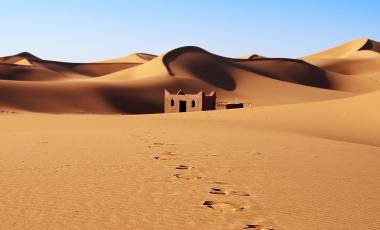
Imperial Morocco and the Sahara Desert
Discover the many shades of Morocco, from the splendor of the Imperial Cities of Fes and Marrakesh to the rugged beauty of the countryside. Admire Casablanca’s neo-Mauresque architecture and the Hassan II Mosque, Africa’s largest mosque. Get a glimpse of life in the desert at Merzouga, where you can also enjoy a leisurely camel ride…
Best Places To Visit
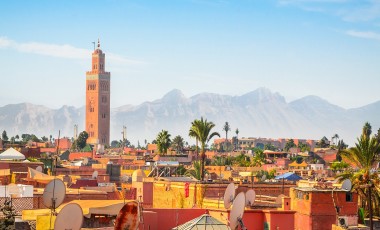
Marrakech, with its aura of mystery and exoticism, begs to be explored! From its humble origins as a garrison of the Almoravid desert warriors, Marrakech today is a vibrant city where modernity meets tradition.
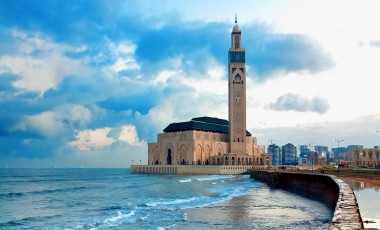
Casablanca – the very name conjures up romantic images of a French colonial past, not to mention the wartime classic. Set up by the French as a key commercial port in Morocco, it’s old French legacy is reflected in its handsome Mauresque buildings.
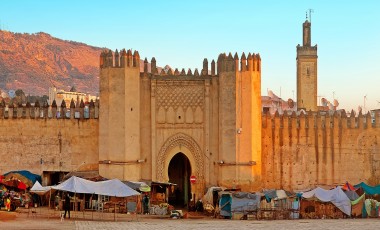
Fes, or Fez, the grandest royal city created by Morocco’s early Muslim rulers in the 9th century, is the country’s cultural capital and spiritual heart.
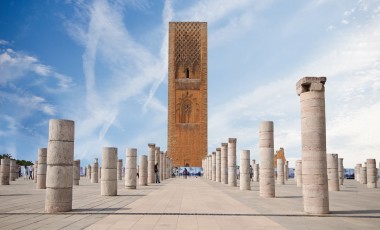
Rabat, the charming capital of Morocco, was granted its UNESCO Heritage site status in 2012. Standing at the confluence of the Bouregreg River and the Atlantic, it’s an elegant fusion of Islamic heritage and French colonial legacy.
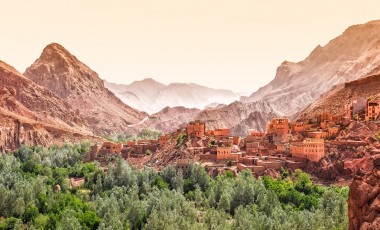
High Atlas mountain range of Morocco, invites you on an exciting trekking vacation. The region offers you a visual treat with the majestic countryside dotted with walnut and cherry trees stretching as far as the eye can see.
High Atlas Mountains
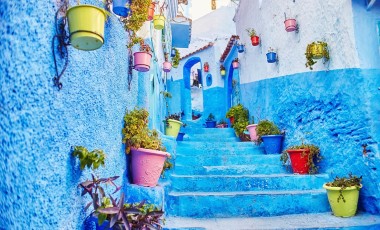
Think shady alleyways, blue-washed rough-hewn stone walls hung with potted plants, and wrought iron windows that offer a peek into steep hilly lanes – Chefchaouen is all this and more.
Chefchaouen
Travel guide.
From the most important traditions to visa and health information, what to eat, safety and more – find all the answers from our experts before you visit, in our Morocco travel guide.
Things To Do
From colorful souks and medinas to sampling Moroccan mint tea and witnessing Sufi music festivals, striking old towns, Roman ruins and incredibly beautiful riads, discover the top ten things to do and see in Morocco.
Morocco has more of a laid back feel to it for visitors and is, generally speaking, safer than its neighboring countries. Learn more information and general safety tips from our experts.
From the Blog

Top 5 Reasons To Travel To Morocco Now
From diverse landscapes and desert adventures to vibrant souks, hammams and historical sights – here are the top five reasons why you should visit Morocco now.

Your Ultimate Guide to the Top 10 UNESCO World Heritage Sites of 2019
They are stunning feats of architectural genius, historic centers of ancient cities, or incredibly rich habitats that are fast disappearing. Curated by our experts, discover 2019’s top 10 UNESCO World Heritage sites from our exotic world.
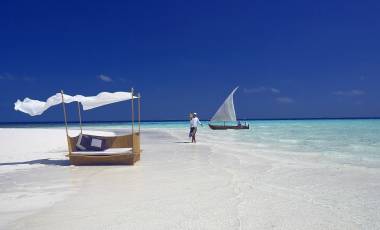
Winter Travel: Best Destinations For A Warm Escape
Put on your traveling shoes and go exploring this winter because we have a list of warm and sunny destinations that are begging to be explored!
What Our Guests Say
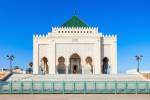
The Enchanting Difference
Authentic & unique.
Our award-winning, licensed local guides provide incredible insights and exclusive experiences for you.
Personalized & Private
Our experts completely customize your private tour to match your interests and preferences.
High-Quality Experiences
All our accommodations and services are personally tested by our team.
Fully Supported Travel
You’ll have a personal and dedicated trip coordinator, backed by 24/7 support in case of emergencies while you’re traveling.

Financial Protection & Flexibility
Your booking is flexible and completely secure with us.
Safe & Secure
Your safety and well-being are our top priorities.
Do you have a vacation in mind? Personalize your itinerary with our Trip Builder.
Travel to Morocco: A Complete Guide (Tips + Morocco Itinerary).
- By Sarah Steiner
- Updated On April 22, 2024
Welcome to our Morocco Travel Guide! It’s safe to say we love Morocco. It’s April 2024 and we are just wrapping up SIX months of travel to Morocco.
We arrived by ferry from Spain and have hugged and surfed the beautiful Atlantic coastline. We loved the contrast of the famous imperial cities (Fes, Marrakech, Chefchaouen) and desert towns (Ouarzazate, Merzouga and Zagora) heading all the way inland to the Sahara Desert. And we ventured way down south to camel markets (Guelmim), historic settlements (Sidi Ifni) and surfing hotspots (Taghazout, Tamraght and Dakhla).
So now; after six incredible months of travel to Morocco here is our complete Morocco Travel Guide and itinerary with everything you need to know for an epic trip to Morocco of your own!
In this Morocco travel guide you will find:
- Travel to Morocco
- Best time to visit
- Visas
- Traveling to Morocco
- Data, WIFI and connectivity
- Safety in Morocco
- Money and ATM’s
- Food and alcohol
- Transportation within Morocco
- Morocco itinerary
- Places to visit in Morocco – Tangier – Chefchaouen – Fes – Rabat – Casablanca – Essaouira – Marrakech – Agadir – Merzouga – Ouarzazate – Ait Ben Haddou
- Accommodation in Morocco
- More about travel to Morocco
About Morocco, just quickly
- Full Name: The Kingdom of Morocco
- Capital: Rabat
- Official languages: Arabic and Moroccan Berber
- Religion: 99% Islam
- Currency: Moroccan Dirham (MAD)
- Population: 37,080,000 (2021)
- Time Zone: National Standard Time (UTC+1)
- Calling Code: +212
- Drives On: Right
- Credit Cards: Visa/MC accepted
- Outlets: Plug Type C and E (220 V / 50 Hz)
Travel to Morocco – the country, the people and its culture
Morocco has a unique history that has largely been influenced by its geographical placement in between Europe and Africa and bordering the entrance to the Mediterranean Sea.
Size-wise it is a large country and has an incredibly varied landscape and culture in the different directions of each border. But one thing that is constant all over the country is the Moroccan culture and warm hospitality.
On the northern Atlantic coast the first cities that welcome any traveller are the coastal towns of Tangier and Asilah.
Inland, the famous imperial cities of Marrakesh and Fez do not disappoint. Marrakesh is more modern and popular as a starting point, but Fez is iconic and traditional and definitely worth adding to your Morocco itinerary.
Agadir, Rabat and Casablanca are Morocco’s other large cities and offer the coastline as well as street food and the famous Hassan II Mosque (the only mosque you can visit as a tourist in Morocco).
The Atlas Mountains provide truly stunning scenery and are popular as a destination for trekking and exploring or just as a daytrip from Marrakech.
And hidden away in the Rif Mountains, Chefchaouen is arguably Morocco’s most iconic and prettiest town.
Read more about options to choose the best Morocco itinerary below.
Do I need a visa to travel to Morocco?
Citizens of the following countries and territories can enter Morocco visa-free for up to 90 days (unless otherwise noted):
- All European Union member states, Algeria, Andorra, Argentina, Australia, Bahrain, Brazil, Burkina Faso, Canada, Chile, China, Colombia, Cote d’Ivoire, Dominican Republic, Gabon, Indonesia, Japan, Kuwait, Liechtenstein, Macao, Malaysia, Mexico, Monaco, New Zealand, Niger, Norway, Oman, Peru, Philippines, Qatar, Russia, San Marino, Saudi Arabia, Senegal, Singapore, South Korea, Switzerland, Togo, Tunisia, Turkey, United Arab Emirates, United Kingdom, United States.
Visa-free entry for Morocco is valid for both airport and land borders for the countries listed above.
Other foreign nationals wishing to enter Morocco must obtain a visa prior to arrival.
On July 10, 2022, the Moroccan government launched an e-Visa system to facilitate the granting of visas to foreign nationals subject to this formality.
Best time to visit Morocco
Traditionally, the best time to visit Morocco in terms of the weather is during the spring (April and May) and autumn (September and October) months. This is when the climate is pleasant and summery throughout the country without being too hot for day-time exploration.
However, in our experience we would also recommend the wintertime (December, January and February) as a perfect escape from the Northern-hemisphere. And to make the most of the sunshine and pleasant day-time temperature. Winter is also a good time to explore the south and the Sahara fringes and further inland without overwhelming heat. Albeit do remember that even in the desert it can get bitterly cold during the night.

Getting to Morocco
Morocco is geographically located in North Africa. It is possible to travel to Morocco by air, land and sea.
Travel to Morocco by air
Morocco has 8 main international airports. Casablanca is the country’s major airport and hub for the national carrier, Royal Air Maroc.
International airports in Morocco:
Travel to Morocco by land
If you want to travel to Morocco by land, know that it shares a border with two countries: Algeria and Mauritania.
The border between Morocco and Algeria is closed and has been closed for years. But it is possible to cross the border from Morocco to Mauritania.
- Read all about crossing the Morocco – Mauritania border from Dakhla to Nouadhibou here.
Travel to Morocco by sea
It is also possible – and easy – to enter Morocco at the port borders in the north of the country at:
- Tangier Med
It is possible to bring a vehicle or motorhome with you to Morocco on the ferry from Europe. (This is what we did).
- Read all about how to travel to Morocco with a motorhome on the ferry from Algeciras, Spain to Tangier Med .
Is it safe to travel to Morocco?
Morocco is regarded as a safe country to travel to. Crime rates are relatively low. And in all our travel to Morocco we have never felt unsafe or questioned our safety.
The country has seen a huge rise is visitor numbers in recent years as tourists – especially from Europe, UK and USA – are looking for an off the beaten track and unique travel experience. And along with travel anywhere that is more adventurous, aspects such as public safety, hygiene standards, and societal norms may be different to what you are used to.
It is expected that you respect and understand its laws and cultural customs and adhere to the status quo.
Unfortunately Morocco does sometimes have a reputation for scams and pickpockets, especially in the public spaces of tourist hotspots like Marrakech, Fes and Essaouira. Much of Morocco’s economy depends on tourism and petty crime and ‘tourist traps’ can catch a visitor by surprise. Keep your valuables safe and carry small amounts of cash. And as with any travel around the world it is important to be aware of your surroundings.

Internet connectivity and WIFI in Morocco
In general, internet and WIFI connection is good (surprisingly so by travel standards) across the country. Hotels and accommodation in the cities will have WIFI available (at varying speeds). In the desert regions and further south in Morocco the connection is often weaker.
If you rely on WIFI for work I suggest tethering to your SIM card with data. See below, but the mobile networks are often faster and more reliable.
SIM cards and data
There are three mobile network operators: Maroc Telecom, Orange and INWI.
It is easy to buy a prepaid SIM card on arrival at the airports and at Tangier Med (ferry port). And in the cities you will see roving vendors wearing branded t-shirts of the different network providers selling SIM cards and recharge vouchers.
Data is inexpensive and it is straightforward to recharge prepaid connections using scratch cards that can be purchased at kiosks and convenience stores all over the country.
- Read all about buying a SIM card in Morocco and how to get unlimited data.
Get a VPN for traveling in Morocco
You should always use a VPN when you travel. And especially when you connect to public Wi-Fi networks.
Your connection with a VPN will be much safer. And you will be able to access any content that is typically censored or blocked in Morocco.
Money, currency and cash when you travel to Morocco
The Moroccan dirham is the official currency of Morocco.
- 10 MAD = 1 USD
- 100 MAD = 10 USD
- 1000 MAD = 100 USD
Dirham are available in banknotes of 20, 50, 100 and 200. Coins are available in denominations of 1/2, 1, 2, 5 and 10 dirham.

ATMs in Morocco
You can find ATMs in the main cities and towns in Morocco.
Credit cards (VISA and Mastercard) are accepted at mainstream city accommodations, high-end restaurants, large supermarkets and shopping malls.
However, Morocco is a cash-based society. You will need to always carry cash with you in Moroccan Dirham.
ATMs in Morocco will give you a maximum of 2,000 – 4000 MAD per transaction (approximately 200 – 400 EUR/USD.)
These are the ATM’s in Morocco we have used (mostly successfully) to withdraw local currency:
- Societe Generale
- Attijariwafa Bank
- Banque Populaire
Morocco has fairly high withdrawal charges with a standard withdrawal fee (regardless of amount withdrawn) of 35 MAD.
How much does it cost to travel to Morocco?
It really depends on how long you have, where you go and ultimately your Morocco itinerary.
Typically, meals costs somewhere between 5 and 10 USD. Accommodation in Morocco usually includes breakfast.
- Bottle of water (1.5L): 6 MAD
- Bread: 1.5 MAD
- Tagine (2 person): 50 MAD
- Cappuccino: 15 MAD
- Orange juice (fresh): 10 MAD
- Sprite or Coke (330ml): 6 MAD
- Sandwich/Panini: 35 MAD
- Meal at McDonalds: 65 MAD
- Bananas (1kg): 15 MAD
- Milk (1L): 8 MAD
- Beer (330ml): 25 – 40 MAD
- Wine (750ml): 60 – 110 MAD
- Petrol (1L): 14 MAD
- Diesel (1L): 13 MAD
Food and alcohol in Morocco
There’s a lot more to Moroccan cuisine than couscous and tajines. The traditional foods of Morocco are mouth-watering.
Moroccan dishes are influenced by Berber, Jewish, Arab, Spanish and French cultures. And food plays a very important role in traditional Moroccan culture and is seen as a symbol of hospitality.
Alcohol isn’t readily available around the country. But it is legal to drink alcohol in Morocco. Many larger hotels will serve alcohol and in the cities (Marrakech, Fes, Essaouira, Agadir) there are restaurants and bars in and around the medina that serve alcohol.
Food in Morocco you need to try
The most common food items you will come across on your travel in Morocco include slow-cooked meats, couscous, bread, dates and sweets and of course, Moroccan mint tea. LOTS of mint tea.
- Tagine: Slow-cooked meat and vegetables cooked and presented in a conical-shaped clay pot.
- Couscous: Originally from Morocco and typically served with meat or vegetable stew. Traditionally prepared on Friday and served for special occasions.
- Harira: Lentil soup usually served as a starter or used during Ramadan to break the fast at dusk.
- Bastilla: Flaky pie traditionally made with pigeon or chicken.
- Khobz: Crusty bread typically baked in communal wood-fired ovens and served with meals.
- Bissara: Hearty soup made from dried fava beans and commonly served during breakfast
- Tanjia: Like tagine, meat slow-cooked in a covered clay pot.
- Chebakiya: Flower-shaped, fried sesame cookie dipped in honey.
- Kaab el Ghazal (Gazelle Horns): Crescent-shaped pastires made with almond paste, orange flower water and cinnamon.

Language for your travel to Morocco
Arriving in Morocco you’ll quickly discover that the language spoken amongst Moroccans is an amazing blend of Arabic, French, Berber (Amazigh) and sometimes a little English (or even Spanish). And without doubt the people you encounter and interact with will appreciate your effort at speaking a bit of their language.
- Hello: As-salaam Alaykum (literally means peace be with you)
- And unto you peace – Walaykum As-salaam (said in response to the above)
- Thank you: Shukran
- You’re welcome: Al ‘afw
- How are you? Labas?
- Good: Mezya
- How much? Be kam?
- Please: Afak
- Delicious: Hadshi bneen
- Yes: Wah
- No: La
A greeting of ‘Salam’ is always received with a smile.

Transportation for your travel to Morocco
Public transportation is an adventure in itself when traveling in Morocco. It can be hit or miss with taxis and buses between cities or taking a shared taxi. The bigger cities like Marrakech and Casablanca have public bus routes within the city but the buses are often old and overcrowded and don’t necessarily follow a route or timetable…
But, travel to Morocco is an adventure and that is what we are here for; right?
Travel in Morocco by train
The best way to travel between Moroccan cities is by train. Morocco now has Africa’s fastest trains traveling at 300km/h (186mph) linking Tangier, Rabat and Casablanca every hour over a new high-speed line. Classic trains link northern Tangier and Casablanca with Meknes, Fes and Marrakech.
Travel in Morocco by rental car
Renting a car in Morocco gives you the ultimate freedom to explore in any direction and at your own pace of travel. Car rental in Morocco costs between 15 and 50 USD a day. The price will depend on the company that you rent with and the model you rent. Don’t be put off by concerns of self-navigating Morocco.
- Read our complete guide to driving in Morocco .
Travel in Morocco by plane
RAM (Royal Air Maroc) operates domestic flights from Casablanca to six major cities in Morocco. You will usually have to change planes at Casablanca, unless both points are stops on a single Casa-bound flight. In general domestic flights are expensive, but it will save you a lot of time.
Travel in Morocco by bus
Intercity buses are the most common mode of transport between cities in Morocco and are a cheap and efficient way to get around.
The most popular bus companies are:
- Ghazala
It is possible to book tickets online for Supratours and CTM or you can book in person at the bus station (easier; and definitely more reliable).
Buses between cities are reasonably priced with a ticket between Marrakech and Casablanca between 80 – 110 MAD ($8 – $11 USD) per person for the 4-hour bus ride.
Travel in Morocco by taxi
There are different types of taxis to get around Morocco. The most common are shared taxis (which in essence operate a bit more like a mini-bus system):
- Petit taxis: These are small cars to get around town and can hold up to three people (yes; only three passengers are allowed at a time). They’re very cheap to use and you can just wave one down and check with the driver where he is going and negotiate your price upfront.
- Grand taxis: These are shared taxis that can carry up to six passengers. They often won’t leave the taxi station until the taxi is full but because they are so popular the wait is not usually long. You can locate a grand taxi near any taxi stand.
- Private taxi: Operates the same as any taxi anywhere. Not all taxis are metered so make sure to negotiate and agree on a fare before driving.
Morocco itinerary options
This is the juicy part of our Morocco travel guide. From here we are going to talk about our itinerary in Morocco as well as the unmissable and best things to do in Morocco and places you need to see.
It really depends what you want to see in your travel to Morocco. Because Morocco really seems to have it all!
So whether you are looking for a relaxing riad, and Instagram-worthy vacation, history, a desert adventure or sunshine and surf. Morocco truly has it all.
Ready?

Three 10-Day Morocco itinerary options
Here are three Morocco itinerary options for a 10-day adventure (or vacation) in Morocco. All of the places to visit in Morocco are listed below with highlights and things to do in each place so you can adjust and adapt your Morocco itinerary accordingly.
North to Sahara 10-Day Morocco Itinerary – Option 1
- Day 1 : Arrival in Tangier (1 Night)
- Day 2 : Chefchaouen (1 Nights)
- Day 3 : Volubilis & Meknes (Day Trip)
- Days 3 – 4 : Fes (2 Nights)
- Days 5 – 6 : Sahara Desert – Merzouga (2 Nights)
- Day 7 : Ouarzazate and Ait Ben Haddou (1 Night)
- Day 8 : Marrakech (2 nights)
- Day 10 : Departure from Marrakech
Coast to Desert 10-Day Morocco Itinerary – Option 2
- Day 1: Arrival in Agadir – Tamraght (1 Night)
- Day 2: Tamraght and Taghazout (1 Niight)
- Day 3: Tamraght to Marrakech (1 Night)
- Day 4 – 5: Sahara Desert Trip (2 Nights)
- Day 6: Ouarzazate and Ait Ben Haddou (1 Night)
- Day 7: Return to Marrakech (1 Night)
- Day 8: Marrakech (1 Night)
- Day 9: Day trip Marrakech to Ourika Valley (1 Night)
- Day 10: Departure from Marrakech
Imperial 10-day Morocco Itinerary – Option 3
- Day 1: Casablanca (1 Night)
- Day 2: Chefchaouen (1 Night)
- Day 3: Fez (stopping off at Volubilis en route) (1 Night)
- Day 4: Marrakech
- Day 5 – 6: Sahara Desert Trip (2 Nights)
- Day 7: Ouarzazate and Ait Ben Haddou (1 Night)
- Day 8 – 9: Marrakech

Travel to Morocco – Places to visit on your Morocco itinerary
Travel to Morocco is unlike anywhere else in the African continent. Geographically the country is long and thus the culture is diverse and different from top to bottom. We have spent more than six months travel in Morocco. And we’ve seen a LOT.
But to summarise travel to Morocco in one Travel Guide we have chosen the likely main stops on your Morocco itinerary and the three best things to do in Morocco for each place.
Tangier is a port city in the north of Morocco steeped in history and entangled in the literal maze of streets in the old medina. It’s hard to fathom that this magical escape to Africa is barely an hour’s boat ride away from Europe.
Things to do in Tangier
- The Kasbah: Pass under Bab Haha gate and enter the Kasbah in Tangier with the maze of cobbled alleyways and sweeping hilltop views of the Atlantic Ocean and Mediterranean sea.
- Tangier Grand Mosque: Originating in the 5 th century the mosque was once the site of a Roman temple. During the 8 th century it became a place for Muslim prayer until the Portuguese conquest in the late 15 th century when it was converted to a cathedral and subsequently back again to a mosque.
- Petit Socco: A hub of activity – historic and otherwise – in the centre of Tangier. The best choice to plonk yourself and drink mint tea and watch the world go by.
Chefchaouen
Chefchaouen is a city in the Rif Mountains to the northwest of Morocco and known for the striking, blue-washed buildings of the old town. There are many different theories to why Chefchaouen is so blue.
Things to do in Chefchaouen
- Take in all the BLUE: Chefchaouen is the ultimate Moroccan medina for wandering and photography. There are endless enchanting squares, doorways and dead-end alleys that are all very photogenic.
- Visit the Souk: If you happen to be in Chefchaouen on a Monday or a Thursday you should definitely visit the souk.
- See the view from the Spanish Mosque: The best place for a beautiful panoramic view of Chefchaouen is at the Spanish mosque. This mosque sits on the hillside and it is a pleasant 45-minute walk to get there.
Fes is a UNESCO world heritage site and home to the oldest and largest medina in North Africa. The city was once the capital of Morocco and is now regarded as the cultural epicentre of the country.
Things to do in Fes, Morocco
- Jnan Sbil Gardens (Bou Jeloud): This peaceful slice of nature is the only public garden in Fes medina. Relax, cool down and join Fes locals enjoying the park too. The park is open Tuesday – Sunday between 8AM – 7:30PM.
- Bou Inania Madrasa: Opposite the Grande Mosquée, this religious school, completed in 1358 is a historic madrasa (Islamic learning centre) in the city of Fes.
- Fes Tanneries: Be sure to check out the iconic tanneries of Fes! Take in the world-famous smells and discover hundreds of earthen pits full of coloured dye used to colour animal skins. The tanneries are a unique part of Fes culture and a must-see in travel to Morocco.
The capital city of Rabat is often overlooked as a destination for travel to Morocco. It is a modern city today but like it’s neighbours it boasts a rich history with another lively Moroccan medina.
Things to do in Rabat
- Visit the medina: The medina and kasbah of Rabat are two different but connected areas. While much of Rabat is extremely modern, the medina still has reminders of a historic and different kind of life.
- Try a street food sandwich: Eenter the medina and hunt down the viande hache (mincemeat) sandwich in fresh Moroccan bread.
- City of Sale: Just across the Bou Regreg River from Rabat lies the smaller sister city of Salé; another interesting and often forgotten place. Salé has a fascinating history that is deeply linked to a past with dreaded pirating famed since the 1600’s.
- Visit Chellah: Overlooking the lush Bou Regreg River on the Rabat city side is Chellah, a picturesque fort that dates back to the Phoenician times in the third century B.C.

Casablanca is a port city and commercial hub in western Morocco and the largest city in the country.
Things to do in Casablanca, Morocco
- Hassan II Mosque: No trip to Casablanca is complete without visiting the spectacular Hassan II Mosque; the only mosque in Morocco open to non-Muslims.
- Morocco Mall: Located at the end of La Corniche area is Morocco Mall – the biggest shopping mall on the African continent.
- Old Medina: Starkly contrasting the modern mall; the old medina of Casablanca is a vibrant and fascinating place to wander (and drink tea and eat fresh, hot M’smen).
Marrakech
Morocco’s most well-known city is a sensory experience of vibrant colours, flavours, smells, sounds and unique sights. It’s world-famous for the maze of markets and shopping in old city medina but there are plenty more things to do in Marrakech.
Things to do in Marrakech
- Jamaa el Fnaa: The main square of the Marrakech medina is the literally-bustling heart and hub of the city and an experience of culture, chaos and shopping like nowhere else!
- Try a Moroccan hammam: This is a must-do during your travels in Morocco. A hammam is a public bathhouse and the experience really is one of the highlights (and out-of-comfort-zone adventures) of the culture.
- Jardin Marjorelle: Visit the famous gardens and vibrant blue house once owned and restored by Yves St Laurent. A truly tropical desert oasis in the midst of the busy city.

Essaouira
Essaouira is a port city on the Atlantic coast. Just a walk in the port vicinity feels like more than a world away from Europe.
Trade winds make Essaouira popular for surfing, kitesurfing and windsurfing. And it isn’t as overcrowded as Marrakech or Fes. It is one of the most underrated destinations for travel to Morocco.
Things to do in Essaouira
- Essaouira medina: The labyrinth of alleyways in the old city are an assault on the senses (in a good way) with colourful souvenirs, handicrafts, Moroccan rugs and shoes.
- Surfing: Trade winds make Essaouira a fantastic alternative for a Morocco vacation away from the big touristy cities. There are plenty of surf shops, windsurfing and surfing schools that are great for beginners.
- Fish market and port: Essaouira was the main fishing port for Morocco in the 1900’s and today fishing boats line the harbour where each day they sell their catch. It’s interesting for a walk or choose your own seafood to be cooked fresh at the many restaurants.
The Hollywood of Africa! Ouarzazate really is like a mini-Hollywood in Morocco. There are many cool sites to visit and the city is just a hop, skip and a jump from the even more iconic Ait Ben Haddou.
Things to do in Ouarzazate
- Visit Ben Haddou: A 30 minute drive from Ouarzazate, Ait Ben Haddou is an ancient village of earthen clay buildings that dates back to the 1600s.
- Atlas Film Studios: With cheap production costs and desolate scenery, Ouarzazate has been a Hollywood base for over 200 movies and television programmes filmed at Atlas Studios including, Gladiator, Ben Hur, Game of Thrones, The Mummy, Passion of Christ, and Black Hawk Down.
- Kasbah Taourirt: A citadel in the centre of Ouarzazate set up as a museum showcasing the historic vantage point of the city on the trade routes from Sub-Saharan Africa.

Agadir
Agadir is a city on Morocco’s southern Atlantic coastline connecting to the foothills of the Anti-Atlas Mountains.
Things to do in Agadir
- Souk el Had: Agadir’s main souk with over 6000 vendors selling everything from spices, fruits and vegetables through to clothes, perfumes, carpets, pottery, and electronics.
- Taghazout and Tamraght: Just a short drive north to the beach towns of Taghazout and Tamraght for surfing and sunshine. Anchor Point often considered to be Africa’s best surf spot.
- Agadir Beach (Plage d’Agadir): A seaside resort with deep, fine sand, cafes and restaurants galore.
Accommodation in Morocco
Riads – A Riad is a traditional Moroccan house of palace with an indoor garden and courtyard. Riad accommodation is generally located withing the old city medinas.
Hostels – Popular especially on the coast in surfing spots like Imsouane, Taghazout and Tamraght.
Hotels – In the bigger cities you can find high-end and mid-range to budget hotel options.
Desert Camps – In the Saharan region you will find nomad style camping and glamping offered in the desert.
Campsites – Morocco has an abundance of camping and motorhome campsites. Read our complete guide to campsites in Morocco.
- Booking.com – We book all our accommodation in Morocco and all over the world on Booking.com. There is a great selection of budget accommodation, beautiful riads, desert camps, hostels, and hotels. Be sure to check the filters and make the most of cancellation flexibility that we love!
Souks and markets in Morocco
Once you have refined your Morocco itinerary and chosen the direction for your travel in Morocco it is time to add in some unique things to see and do for a truly memorable trip. The weekly markets and souks in Morocco are a fascinating way to get a glimpse of traditional, rural and day-to-day life.
Here are some of our favourites:
- Zagora Weekly Market
- Tabounte Weekly Market
- Guelmim Camel Market
- Sidi Ifni Weekly Market
- Tafraoute Weekly Market
- Tamraght Weekly Market
- Agadir Weekly Anza Souk
- Ouarzazate Weekly Souk

Planning travel to Morocco – more information
These are the companies we use while traveling fulltime as a family (for five years now) and ones that we would recommend to anyone booking travel to Morocco.
- Booking.com – The best all-around accommodation booking site that constantly provides the cheapest and lowest rates. There is a great selection of budget accommodation and be sure to check the filters and cancellation flexibility that we love!
- Skyscanner – We use this for all our flights. They are able to search small websites and budget airlines that larger search sites often miss.
- GetYourGuide – Get Your Guide is a huge online marketplace for tours and excursions offered all around the world.
- SafetyWing – A global travel insurance that covers people from all over the world while outside their home country. You can buy it short or longterm; and even if you are out of the country.
- World Nomads – Travel insurance tailored for longterm travel and nomads (including those who have already left home). Make sure you have travel insurance before traveling to Morocco!
Read our other guides and articles for traveling in Morocco
- Taking the ferry from Spain to Morocco.
- Everything you wanted to ask about driving in Morocco.
- Crossing the Morocco Mauritania border from Dakhla to Nouadhibou.
- Motorhome services in Morocco.
- A guide to campsites in Morocco.
- Buying a SIM card in Morocco (and how to get unlimited data).
Wondering about itineraries? Questions about schooling? See our Family Travel Guides and FAQ here .
Top Destinations
- Cook Islands
- New Zealand
Latest Posts
20 things to do in podgorica, montenegro and why it is worth visiting., how to do the ceuta border crossing from f’nideq, morocco to ceuta (spain)., 18 fantastic things to do in rabat, morocco. , 18 things to do in the art deco-famous town of sidi ifni, morocco. , 13 top things to do in tiznit, morocco., 20 top, historic and tasty things to do in taroudant, morocco..

We are the Steiners: Sarah, Gavin, Harry and Oscar – a family from New Zealand with a love of travel and adventure together… Especially where it takes us off the beaten track!

Away with the Steiners uses affiliate links. That means that if you buy something through these links, we may earn a commission at no extra cost to you.
Leave a Comment Cancel Reply
Your email address will not be published. Required fields are marked *
Save my name, email, and website in this browser for the next time I comment.
Notify me of new posts by email.
The Best Time to Visit Morocco

Morocco is a land of diverse landscapes, majestic architecture, vibrant colours and heady spices. From the white-topped Atlas Mountains and the azure seas to the rich orange-gold hues and unpolluted starlit skies of the Sahara, the explosion of colours are reflected in the rich culture and heritage of this ancient and exotic land.
The diversity of the landscape however, lends itself to varying temperatures and climatic conditions, so if you’re planning a trip to Morocco, it’s wise to choose the right time of year so you can make the most of your trip.
Here’s a guide to the seasons, climate, festivals and most popular destinations to help you decide the best time of year to fully enjoy your Moroccan experience.
Depending where you go, Morocco can be a land of extreme temperatures – from blisteringly hot days to freezing cold nights. The diversity of the landscape also means that the climate varies from region to region. The mildest climate can be found on the coast, which is moderate and sub-tropical. The further inland you go, the more extreme the temperatures become.
As a general guide, if you want to avoid the hottest and coldest times, spring and autumn are the best seasons to enjoy Morocco.
In the spring you’ll find pleasant temperatures that aren’t too harsh, especially on the coast. Temperatures range from around 18 to 28 degrees, whereas the interior still reaches 35 degrees. Spring offers ideal hiking weather in the Atlas Mountains from around mid-March to May.
The Moroccan summer lasts from June to August. July is the hottest month and, with bearable temperatures and little humidity, it’s the time of year when many escape to the coast to avoid the stifling heat in the cities and the harsh sirocco winds coming off the Sahara
With similar temperatures to spring, autumn is also a good time to visit as the heat of summer dies down and the cold winter nights have yet to set in.
At Essaouira on the coast, the Atlantic swell peaks in October, offering perfect surfing conditions. Autumn temperatures also make city sightseeing far more pleasant. The markets in Marrakech are far less hectic than in the summer so it’s a great time of year to fit in some early Christmas shopping. As the evenings start to get chilly, you’ll find a cosy, log fire in most Riads, where you can warm yourself, sip on mint tea and savour spicy and rich Moroccan dishes.

The north coast has a Mediterranean climate and conditions tend to be cool and rainy in the winter months with an average daily temperature of around 12 degrees. Although the cities of Marrakech and Fez are comfortably warm during the day, night-time temperatures can plummet to around 5 to 7 degrees.
The winter is when the Sahara is at its most extreme: hot, dry days followed by freezing, bitterly cold nights. From November to February, the Atlas Mountains are blanketed in snow. Trekking boots are replaced with skis and snowboards, and snow trekking is available for experienced hikers.
Festivals are an integral part of the country’s culture and provide a great opportunity for visitors to experience the ‘real’ Morocco.
When planning your trip, if possible, try and make the dates coincide with at least one of the many festivals held throughout the year to add an extra special touch to your holiday. Here are some of the most popular festivals worth attending.
INTERNATIONAL NOMAD FESTIVAL (MARCH)
This 4-day festival is a celebration of Saharan culture and heritage, which takes place in the desert near the village of M’hamid in the Draa Valley. You can enjoy a rich and varied programme of music, theatre, folk stories and ethnic art in specially constructed tents and in the open air. Highlights of the festival are camel racing and nomadic hockey.
ROSE FESTIVAL (MAY)
Roses are an integral part of the Moroccan culture, and the buds and petals can be used in various ways. Dried buds are used in cosmetics, home decorations and cooking, while distilled rose water and oil are key ingredients for many globally produced perfumes and serums.
Nestled in the Atlas Mountains is the Vallée des Roses. Each May over 700 tonnes of rose petals are harvested and, to celebrate, a 3-day festival is held. The event attracts over 20,000 visitors to the small town of El-Kelaâ M’Gouna every year. The highlight of the festival is a procession through a shower of rose petals and the annual crowning of the ‘Queen of Roses’.
You’ll also have the opportunity to feast on mouthwatering traditional Moroccan dishes while being entertained by local Berber music, songs and dances.
GNAOUA AND WORLD MUSIC FESTIVAL (MAY)
The annual festival is held at Essaouira where you can enjoy a range of free concerts featuring an eclectic mix of international music and traditional Moroccan Gnaoua music. Gnaoua music goes back thousands of years and is thought to create healing powers. Mystical Gnaoua masters use rhythmic, hypnotic music to evoke their ancestors to draw out ill-health and cure the afflicted.
Every year over 500,000 visitors, including worldwide jazz, pop and rock performers, come to the festival to learn from and perform with the great Gnaoua masters.
TANJAZZ FESTIVAL (MID-SEPTEMBER)
The world-famous Tangiers Jazz Festival runs over 4 evenings and features some of the best jazz artists in the world, performing in various hotels throughout the city. If you love jazz then this festival is a truly unmissable event.
Berber Migration
Berbers are ancient, North African tribes people and the nomadic population of Morocco. Twice a year the Berber tribes walk in the footsteps of their ancient ancestors and undertake a long journey, herding their goats, sheep and cattle between summer and winter pastures from the edge of the Sahara to the foothills of the Atlas Mountains. The bi-annual migration heads towards the mountains in May and back down again in September.
Visitors have the chance to accompany a traditional Berber family for part of the journey and experience the everyday life and culture of this fascinating tribe.
Geminids Meteor Shower
If you want a change from the traditional run up to Christmas, then head to Morocco instead to witness the Geminids Meteor Shower spectacle from the Sahara desert. The clear and unpolluted Saharan skies guarantee a breathtaking cosmic display and a once-in-a-lifetime experience you’ll never forget. The meteor shower is at its most intense in mid-December, so why not finish your trip with some last-minute Christmas shopping at the markets of Marrakech? Be aware though, night temperatures in the Sahara at this time of year are bitterly cold, so make sure you wrap up warm.
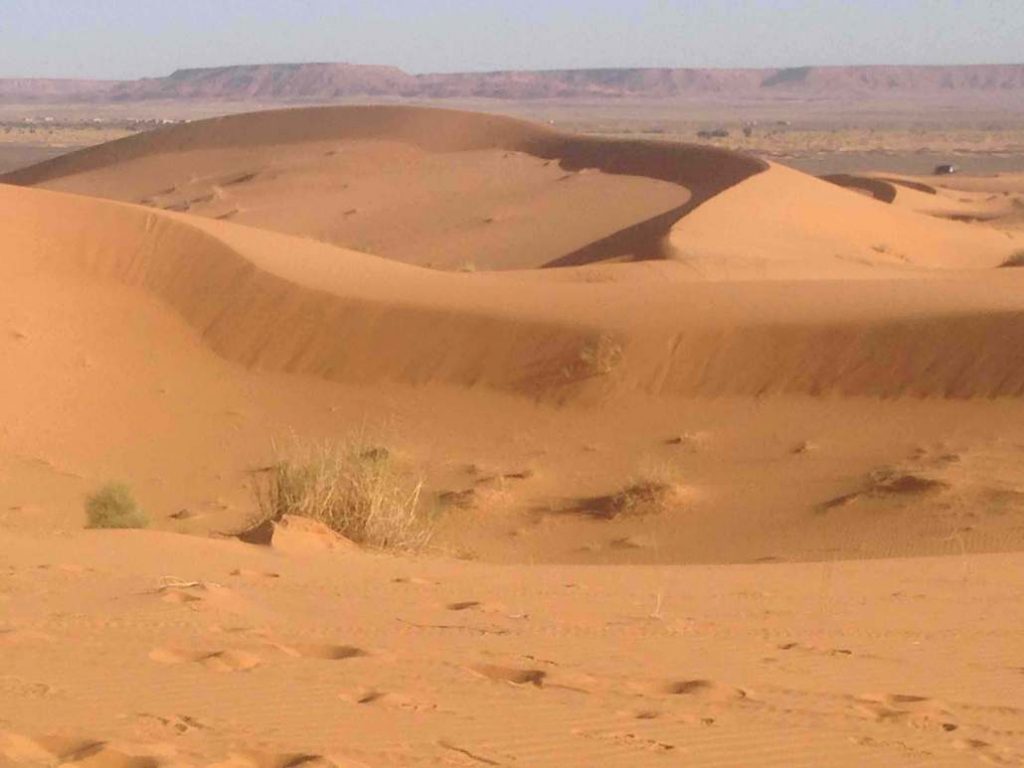
Spanning 50 km from north to south and with wind-blown sand dunes reaching up to 150 metres high, the endless views of the golden-orange sands of the Sahara desert are just as they appear in the movies.
Camel trekking and camping out under the stars is the best way to experience the Sahara. For a short trip, Erg Chebbi is easily accessible from Marrakech. Alternatively, for those with a true spirit of adventure, head to Erg Chigaga where you’ll find the largest, wildest and least visited dunes of the Sahara. However, Erg Chigaga is not for the faint-hearted. It involves a good 2-day camel ride from the nearest village and your only accommodation choice is an elaborately decorated tent camp in the Saharan wilderness.
Daytime heat is most bearable in April and October, whereas night temperatures in December and January can reach below freezing. Whatever time of year you plan your trip, ensure you pack suitable clothing.
Atlas Mountains
The magnificent Atlas Mountains offer a range of activities throughout the seasons: from hiking in the spring, summer and autumn, to skiing and snowboarding in the winter.
In the spring and early summer, a 5-hour trek will take you through the mountains, from Marrakech to the walled city of Taroudant. You’ll pass traditional Berber villages, kashbahs (a type of ancient fortress where local leaders lived) and some of the most spectacular scenery in Morocco.
The Tizi n’Tichka Pass is the highest and most impressively paved pass in Morocco, linking Marrakech with Quarzate. The landscape varies from lush green foothills to stark, rocky outcrops before reaching the edge of the vast Saharan landscape. Along the way be sure to visit Kasbah Aït Benhadou, the most celebrated Kasbah in Morocco that featured in Lawrence of Arabia and Gladiator .
Snow and Morocco may seem an unlikely coupling, yet the Oukaimeden ski resort is easily accessible from Marrakech and offers skiing, snowboarding and sledging activities for all levels. You may not find it up to European standards, but the fact that you can say, ‘I’ve skied in Africa’ definitely makes the resort worth a visit. The skiing season lasts from early January to mid-March.
Two of the most frequented coastal towns in Morocco are Essaouira and Agadir. The cooler ocean breezes make them popular destinations with native Moroccans trying to escape the summer heat. July and August coincide with European school holidays. It’s the peak tourist season, so early booking is essential.
If you’re not restricted by school holidays, late spring and early autumn provide pleasantly warm weather so you can top up your tan without the crowds.
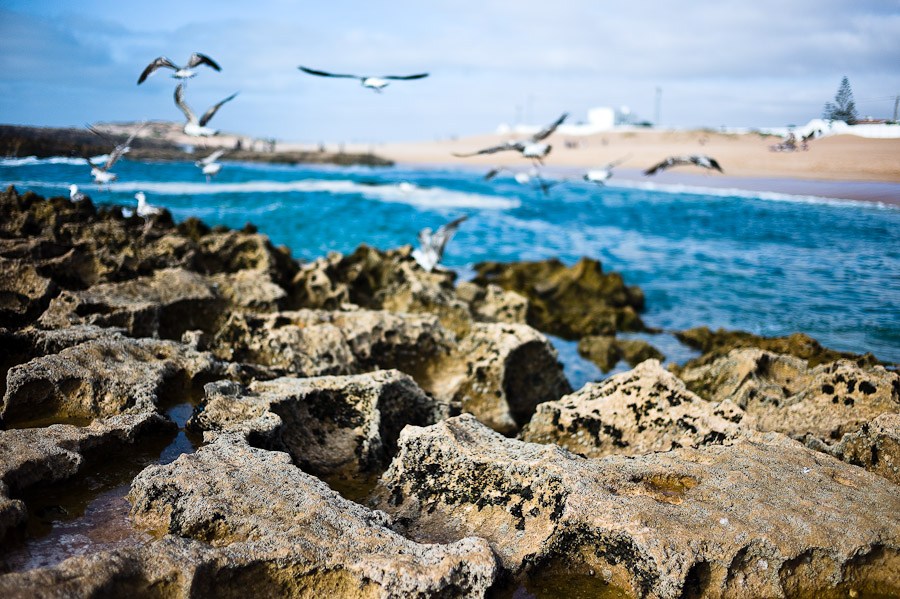
Essaouira has a long sandy beach and a good choice of pavement cafés and restaurants for alfresco dining. The laid back atmosphere provides the perfect spot to relax. Windsurfing here is also popular. When you’ve had enough of the beach, the old town is delightful and small enough to explore on foot.
This modern city features palm-adorned promenades, an immense sandy beach and premier hotels and resorts. The beach is pleasantly sheltered from ocean winds and is well patrolled, clean and safe. However, the ocean undercurrent is sneakily strong, so it’s best for children and weak swimmers to rely on hotel pools for swimming.
The markets, fishing port and impressive new marina are also worth a visit.
To fully appreciate this buzzing and vibrant city, visit the main square in the evening where you can soak up the atmosphere and drink in the intoxicating aromas of exotic spices from the food vendors and various Moroccan street food stalls that line the square. It’s also the perfect place to buy quality leather goods, handcrafted objects, decorative homeware and jewellery. Just don’t forget to barter – the stallholders expect it and it’s all part of the experience.
Marrakech is stiflingly hot and cloying at the height of summer, so if you want to avoid the heat, go in spring or autumn when the markets will be less crowded without losing its vibrant buzz.
Founded in the 9th Century, Fez is the largest and oldest medieval city in the world. The jewel of this imperial city is the ancient medina, which provides a delightful and fascinating escape from the modern world where donkeys are still used for transporting goods. Filled with narrow, winding streets, the colour-coded routes are theme-related and will take you on a discovery of palaces, gardens, markets and mosques.
Another site worth a visit, although non-Muslims are not permitted to go inside, is the Kairaouine Mosque, site of the largest mosque in Africa and the oldest university in the world.
The sacred period of Ramadan takes place for 30 days from early June to early July. During this time, Muslims fast and pray from dawn to dusk. Expect to find museums closed, services affected and most cafés, bars and restaurants closed during daylight hours. As night descends and fasting comes to an end for the day, the city streets are filled with revellers, feasting long into the night. You’ll find many eateries stay open longer during this time. However, if you’re concerned that Ramadan could affect your trip, then avoid booking your holiday over June.
If you’d like to find out more about the seasons in Morocco, or you’re ready to book a trip now, contact Epic Travel or send an email to [email protected]
Subscribe to the “Epic edit ”
Join the mailing list for our newsletter.

- 2 Day Tour from Marrakech to Merzouga
- 2 Day Tour from Marrakech to Fes
- 3 Day Tour from Marrakech to Merzouga
- 3 Day Tour from Marrakech to Fes
- 4 Day Tour from Marrakech to Merzouga
- 4 Day Tour from Marrakech to Fes
- 5 Day Tour from Marrakech to Merzouga
- 5 Day Tour from Marrakech to Fes
- 6 Day Tour from Marrakech to Fes
- 7 Day Tour from Marrakech to Casablanca
- 8 Day Tour from Marrakech to Tangier
- 5 Days Tour from Casablanca to Marrakech
- 6 Days Tour from Casablanca to Marrakech
- 7 Days Tour from Casablanca to Marrakech
- 8 Days Tour from Casablanca to Marrakech
- 10 Days Tour from Casablanca to Marrakech
- 11 Days Tour from Casablanca to Essaouira
- 12 Days Tour from Casablanca to Essaouira
- 13 Days Tour from Casablanca to Essaouira
- Two weeks in Morocco from Casablanca
- 2 Day Desert Trip from Fes to Merzouga
- 2 Day Desert Tour from Fes to Marrakech
- 3 Days Tour from Fes to Merzouga
- 3 Day Fes to Marrakech Desert Tour
- 4 Day Tour from Fes to Merzouga
- 4-Day Fes to Marrakech Desert Tour
- 5-Day Tour from Fes to Marrakech
- 5 Day Tour from Tangier to Merzouga
- 6 Day Tour from Tangier to Marrakech
- 7 Day Tour from Tangier to Marrakech
- 10 Day Tour from Tangier to Marrakech
- 3 Day Desert Tour From Errachidia
- 3 Day Desert Tour From Errachidia To Fes
- 3 Day Sahara Tour from Errachidia to Marrakech
- 4 Days Tour from Errachidia to Marrakech
- 2 Day Desert Tour from Ouarzazate to Fes
- 3 Days from Ouarzazate to Fes Desert Tour
- 3 Day Sahara Tour from Ouarzazate to Marrakech
- 1-DAY Trip To Ourika Valley & Falls
- 1-DAY Trip To Ouzoud Waterfalls
- 1-Day Trip to Ait Benhaddou & Ouarzazate
- 1-Day Trip to Essaouira Mogador
- Marrakech Sightseeing Tour
- Hot Air Balloon Ride in Marrakech
- 1-Day trip to Chefchaouen
- 1-Day Fes Sightseeing Tour
- 1-Day trip to The Blue City
- 1-Day Trip to Marrakech (Ocher City)
- 1-Day Trip To Rabat (Morocco’s Capital)
- Merzouga Desert Activities
Best Time to Visit Morocco: Unlock Magical Moments
Discover Morocco’s charm at the perfect moments. Our travel guide reveals the best time to visit Morocco for unforgettable experiences. Plan your journey now!
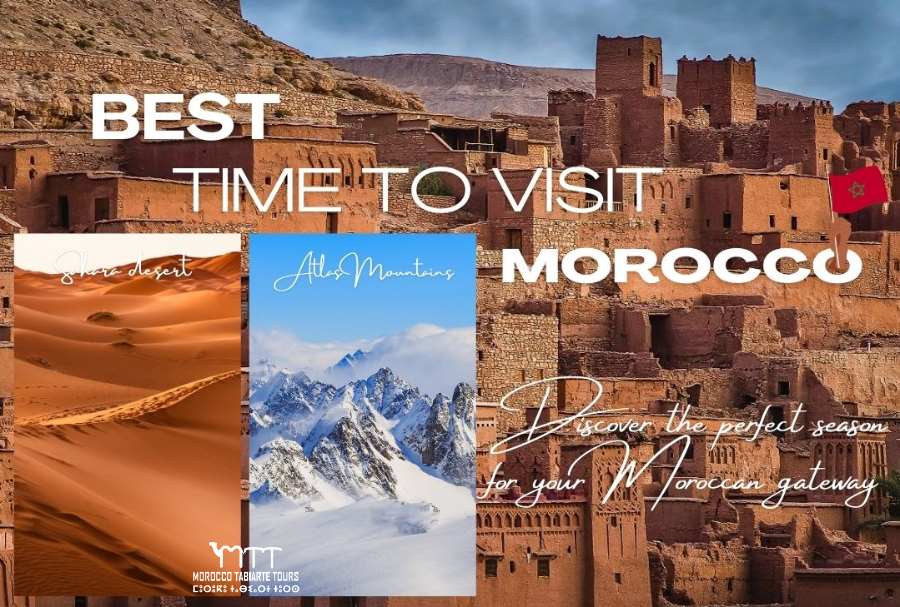
Unlocking the Best Time to Experience Morocco: A Comprehensive Guide
When it comes to experiencing the enchanting beauty of Morocco, timing is everything. At Morocco tabiarte tours, we understand the importance of choosing the perfect moment to explore this captivating destination. In this comprehensive guide, we unveil the best time to visit Morocco , ensuring an unforgettable travel experience.
Understanding Morocco’s Seasons
Morocco experiences diverse climatic conditions throughout the year, making it crucial for travelers to plan their visit wisely. Let’s delve into the distinct seasons:
Spring (March–May) Spring unveils Morocco’s landscapes in a burst of colors, with blooming flowers and mild temperatures. It’s an ideal time for outdoor activities, cultural exploration, and trekking in the Atlas Mountains. Summer (June–August) While the summer months bring warm temperatures, they are also marked by vibrant cultural festivals and lively street markets. Coastal areas provide a refreshing escape, offering a perfect blend of sun and sea. Fall (September–November) Fall welcomes cooler temperatures, creating a pleasant atmosphere for sightseeing and desert adventures. The famous Marrakech International Film Festival in November adds a cultural allure to this season. Winter (December–February) Winter in Morocco is diverse, with coastal regions enjoying milder temperatures while the Atlas Mountains receive snowfall. It’s an excellent time for skiing enthusiasts and those seeking a unique winter experience.
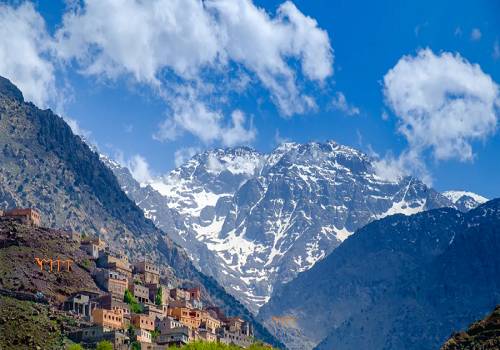
Key Events and Festivals
Understanding Morocco’s cultural calendar enhances the travel experience. Here are some notable events:
Fes Festival of World Sacred Music Held annually in May, this festival celebrates diverse musical traditions, offering a unique cultural immersion. Eid al-Fitr Marking the end of Ramadan , this festival brings Morocco to life with joyous celebrations and vibrant parades.
Navigating Tourist Hotspots
Morocco boasts a rich tapestry of attractions, and the timing of your visit can significantly impact your exploration. Let’s explore some must-visit destinations:
Marrakech: Known for its bustling medinas and historical landmarks, Marrakech is best explored in the fall and spring when temperatures are mild. Chefchaouen: The blue-hued city comes alive in spring when the weather is perfect for leisurely strolls through its charming streets.
Insider Tips for the Perfect Trip
- Booking Accommodations: Secure accommodations in advance, especially during peak seasons, to ensure availability and favorable rates.
- Local Cuisine Exploration: Try Moroccan cuisine at local eateries for an authentic taste of the country’s culinary delights.
- Cultural Sensitivity: Respect local customs and traditions, enhancing your cultural immersion.
Embark on a journey to Morocco at the optimal time, ensuring a seamless blend of cultural exploration and natural beauty. At Morocco Tabiarte Tours, we strive to provide insightful guides, enriching your travel experiences. Plan your visit wisely and unlock the magic of Morocco like never before.
Read More Articles

Best Morocco Tour Packages

4 Days Morocco Itinerary from Fes to Marrakech Desert tour

3 Days desert tour itinerary from Fes to Marrakech

5 Days tour from Marrakech to Merzouga Desert

4 Days tour from Marrakech to Fes | Morocco Desert Trip

3 Days Desert Tour from Marrakech to Fes – Morocco Sahara Trip

10-Day Morocco Tour Itinerary from Casablanca
Get your quick reply now.

- Boating Holidays
- Asia & Pacific
- Australia & New Zealand
- Central America
- Indonesia & Indian Ocean
- Middle East
- Scandinavia
- South America
- Business Travel
- Culinary Travel
- Wellness Travel
- Golf Travel
- Travel Style
- Travel Gear
- Travel Fashion
- Real Estate
- Destination Weddings
- Fishing Holidays
- Tricks & Hacks
- Travel News
- #WHERETONEXT
- Read All the Issues
- Working with DRIFT Travel
- Submit Your Photos to DRIFT Travel
- DRIFT Travel Magazine Media Kit

Trip to Morocco, what should you plan?
A journey to Morocco promises an unforgettable adventure filled with vibrant culture. Mesmerize landscape and tantalize cuisine. Whether you’re drawn to the souk of Marrakech. The serene beauty of the Sahara Desert or the historic allure of Fez. Planning your trip to Morocco requires careful consideration to ensure a seamless and enriching experience. Here is a comprehensive guide to help you plan your Moroccan escapade. that car rental companies operating in 11 cities

Morocco’s Diversity:
Morocco is situated in North Africa, the land of strike diversity. the snow-cap peak of the Atlas Mountain to the golden sand of the Sahara Desert. from medina to coastal town. This country offers an array of experiences to suit every traveler’s taste.
Best Time to Visit:
Morocco boasts a Mediterranean climate with hot summers and mild winters. The best time to visit depends on your preference and plan the activity. Spring (March to May) and autumn (September to November) are generally considered ideal with pleasant temperature and fewer crowd. Summer (June to August) can be scorching particularly in inland areas. While winter (December to February) bring cooler temperatures, especially in the mountainous region.
Essential Destinations:
1. marrakech:.
Known as the “Red City” for its distinctive building. Marrakech is a sensory delight. Lose yourself in the labyrinthine alley of the medina. Where vibrant souk brim with spice, textile, and handicraft. Don’t miss the iconic Jamaal el-Fnaa square. Where snake charmer, street performer, and food stall. Create a lively atmosphere.
Step back in time in the ancient city of Fez. Home to the world’s largest car-free urban area. The medina of Fes el-Bali. Wander through its maze-like street adorned with ornate mosque madras and palace. Be sure to visit the tanneries. Where leather has been dyed, use an age-old method for centuries.
3. Chefchaouen:
The Rif Mountain Chefchaouen is renowned for its striking blue-wash building. Creating a picturesque backdrop for exploration. Stroll through its charm street, browse artisanal shops and hike to the nearby Rif Mountain for a breath take view.
4. Sahara Desert:
A trip to Morocco would be incomplete without experiencing the awe-inspiring Sahara Desert. Embark on desert safari to witness the majestic dune of Erg Chebbi or Erg Chigaga. Spend night under the starlit sky at desert camp to immerse yourself in Berber culture and enjoy the traditional music and cuisine.
Practical Considerations:
1. visa requirements:.
Most visitors to Morocco do not require a visa to stay up to 90 days. However, it is essential to check the specific requirements based on your nationality before travel.
2. Health and Safety:
Ensure you’re up-to-date with routine vaccination and consider vaccination for disease like hepatitis A and typhoid. Exercise caution in crowd areas and be vigilant against petty theft. Drink bottle water and avoid consuming tap water to prevent gastrointestinal issue.
3. Cultural Etiquette:
Respect local custom and tradition particularly in religious site. Dress modestly especially in rural areas and religious site. ask for permission before taking photos of people.
4. Currency and Language:
The official currency is the Moroccan dirham (MAD), and Arabic and Berber are the official languages. However French is widely spoken, especially in urban areas frequented by tourists.
Conclusion:
A trip to Morocco is a voyage of discovery. Where ancient tradition blends seamlessly with modern influence with the plan ahead and immerse yourself in the rich tapestry of Moroccan culture. You’ll create memories to last a lifetime. explore imperial city to camel trek in the desert. Morocco offers a myriad of experiences that will captivate and inspire every traveler. So pack your bag, open your heart to adventure and prepare to be enchanted by the land of Morocco.
RELATED ARTICLES MORE FROM AUTHOR
Virgin Limited Edition Welcomes Finch Hattons: Expanding Luxury with a Kenyan Safari Adventure
Five surprising facts about Sierra Leone: Why travelers should visit this undiscovered African gem in 2024
Stylish Luxury Eco Lodge Stays in Kenya
Privacy overview.
‘Dueling Dinosaurs’ Exhibit and Paleontology Lab Unveiled in Raleigh
8 Reasons Why June Is The Best Time To Visit Alaska
These activities, attractions and features of Alaska are best enjoyed in June. Check out why June is the best time to visit Alaska.
Sarah Rand • May 14, 2024
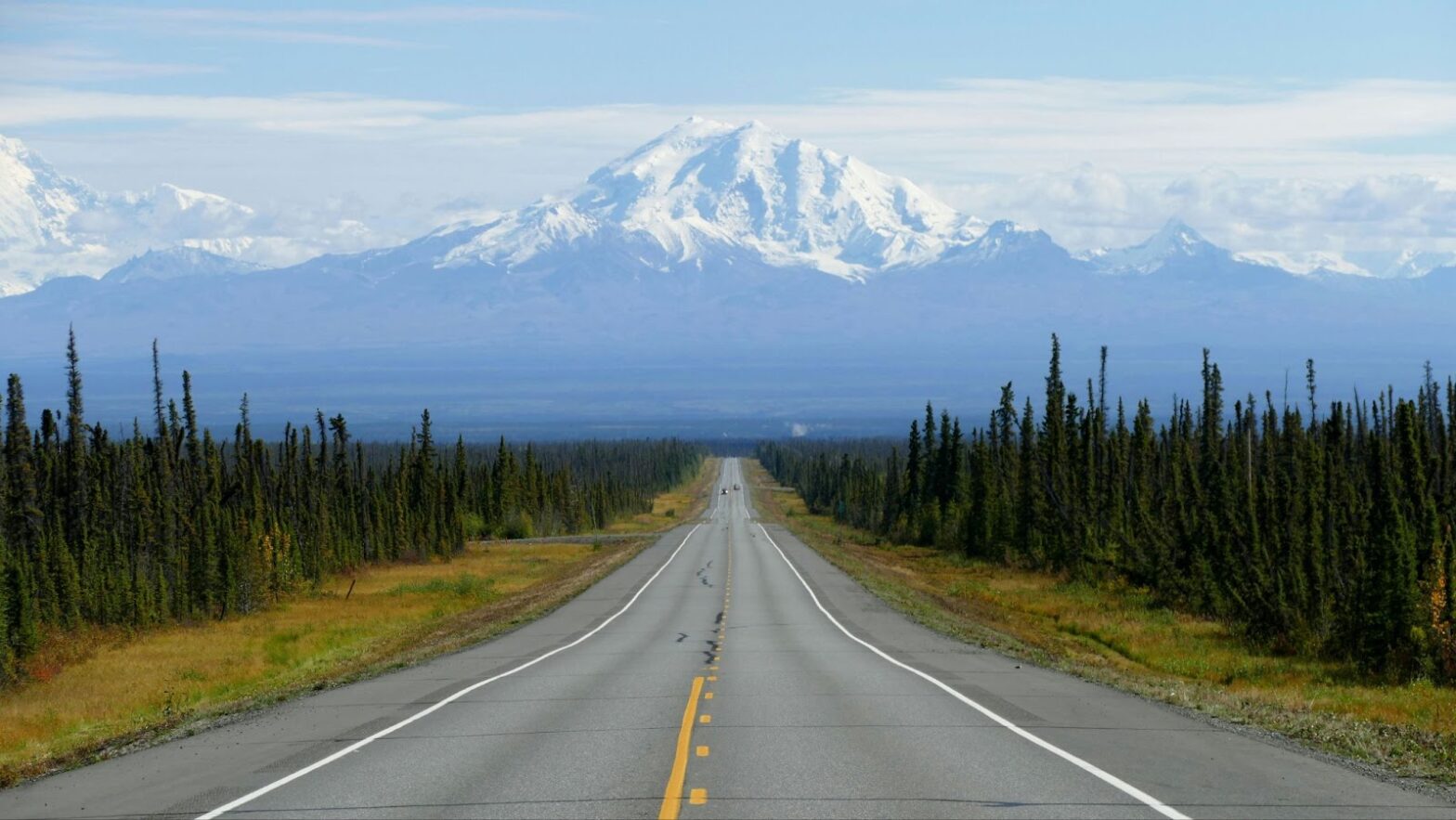
Alaska, also known as the “last frontier,” is a stunning state in the United States. With its thriving wildlife and striking landscapes, it has become an immensely popular tourist destination. Travelers who want to experience the great outdoors would find it wise to visit Alaska. Its estimated 100,000 snowy glaciers , tall mountains, over three million lakes, large moose and over 6,600 miles of coastline are just a few things travelers can experience during their visit. But, of course, there are times when the uncut beauty of Alaska is at its most stunning. June is the best time to visit Alaska for some of the best views and the most vibrant natural environment. Check out some of the top reasons travelers should visit Alaska in June.
Average Temperature This Time of Year
- 50-70 Degrees F
The weather in Alaska is quite lovely in June. However, the temperature varies depending on the area in which travelers stay. The coastal, inland and arctic temperatures can vary, but in June, the temperature generally stays between 40 and 70 degrees in Alaska. There is also a lot of daylight during June, allowing travelers plenty of time to enjoy outdoor activities. Additionally, in June, Alaska experiences less rainfall, making rain less likely to impact travelers’ plans while visiting.

- Travel Tip : When the weather is pleasant, Juneau is a top sightseeing destination in Alaska. However, it is the only U.S. state capital that is inaccessible by road, so travelers will need to arrange their own transportation (via a ferry or plane).
Hiking is a very popular tourist activity in Alaska. This is especially true in June when there are suitable temperatures and weather conditions for outdoor activities. Less rain (and fog) and plenty of sunlight are great indicators that hikers will enjoy the great outdoors of Alaska in June. One of the most popular places for hiking in Alaska is Rendezvous Peak. It is considered one of the less crowded places to hike and has excellent views from the summit. To get to Rendezvous Peak’s breathtaking views, travelers must hike up 1,500 feet.

- Travel Tip : Although June’s weather conditions are better for hikers than other times, it is best that hikers bring gear for an array of conditions. Also, many people suggest that first-time Alaska hikers prepare with cardio and strength training before embarking on their adventure.
Wildlife Sightings
Alaska’s natural beauty is unmatched, creating the perfect environment for the local wildlife to flourish. Since temperatures are higher and the animals are out and about, many travelers anticipate enjoying wildlife sightings in Alaska during June. There are many animal sighting opportunities to get excited about, too. For example, seals, sea lions, otters, humpback whales, orcas and migratory birds are some of the wildlife that travelers are most likely to see in June.

- Travel Tip : Travelers can take wildlife sightseeing tours while visiting Alaska in June. This is recommended for visitors who want to learn from experienced guides, but self-guided tours are possible, too. One way to easily see Alaska’s wildlife (from afar) is by riding the Alaska Railroad.
Photography Opportunities
Due to the decreased chances of fog and rain in June, many photographers enjoy visiting the state of Alaska. With clear skies and manageable temperatures, photos are bound to come out much more beautifully than if travelers visited during many other times of the year. Pictures of the landscape and even selfie opportunities with a striking backdrop are why many image-makers visit Alaska. People visiting in June will want to make sure they bring their cameras and keep their eyes peeled for inspiring scenes.
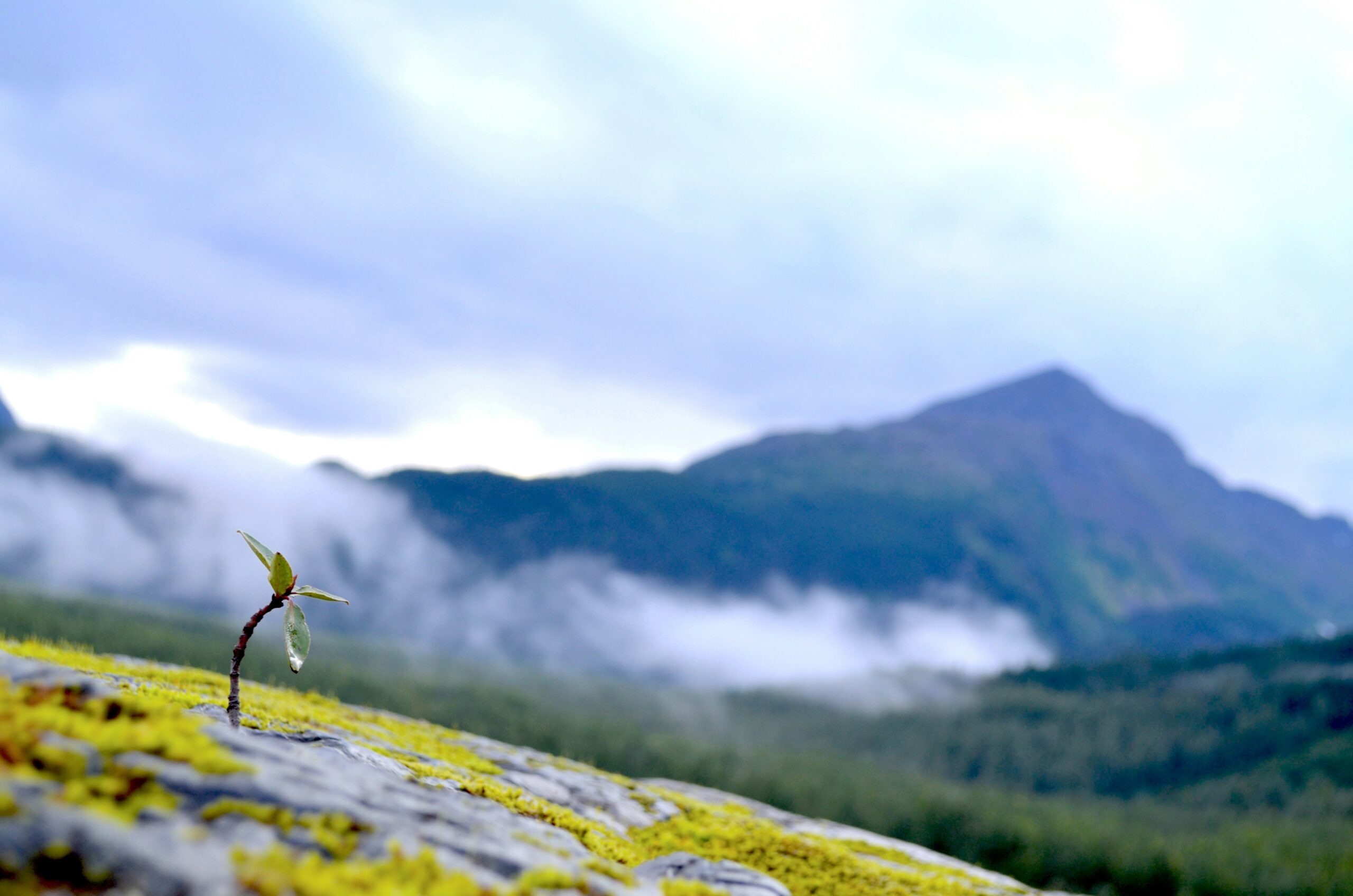
- Travel Tip : Many photography tours are available to tourists since sightseeing is a major appeal of Alaska. These tours are recommended since they efficiently provide tourists with some of the most exciting views of Alaska.
Denali National Park
Alaska has 54 million acres of national parkland, which equates to about two-thirds of the National Park System . There is plenty to see at Alaska’s national parks, but there is one in particular that is very popular. Denali National Park is one of the top national parks, and its six million acres of national parkland make it an excellent pick for travelers. It has Mount Mckinley, which is North America’s tallest mountain peak. It also has varied terrain, including glaciers, tundra and forest, and many visitors enjoy biking on the park’s trails. Spring is one of the most enjoyable times to visit Denali National Park, making June the best time to visit Alaska. In June, the crowds should also be minimal, which many travelers will appreciate. The (relatively) warm Alaskan sun will also be out in the spring, allowing visitors to observe the lush green hillsides.
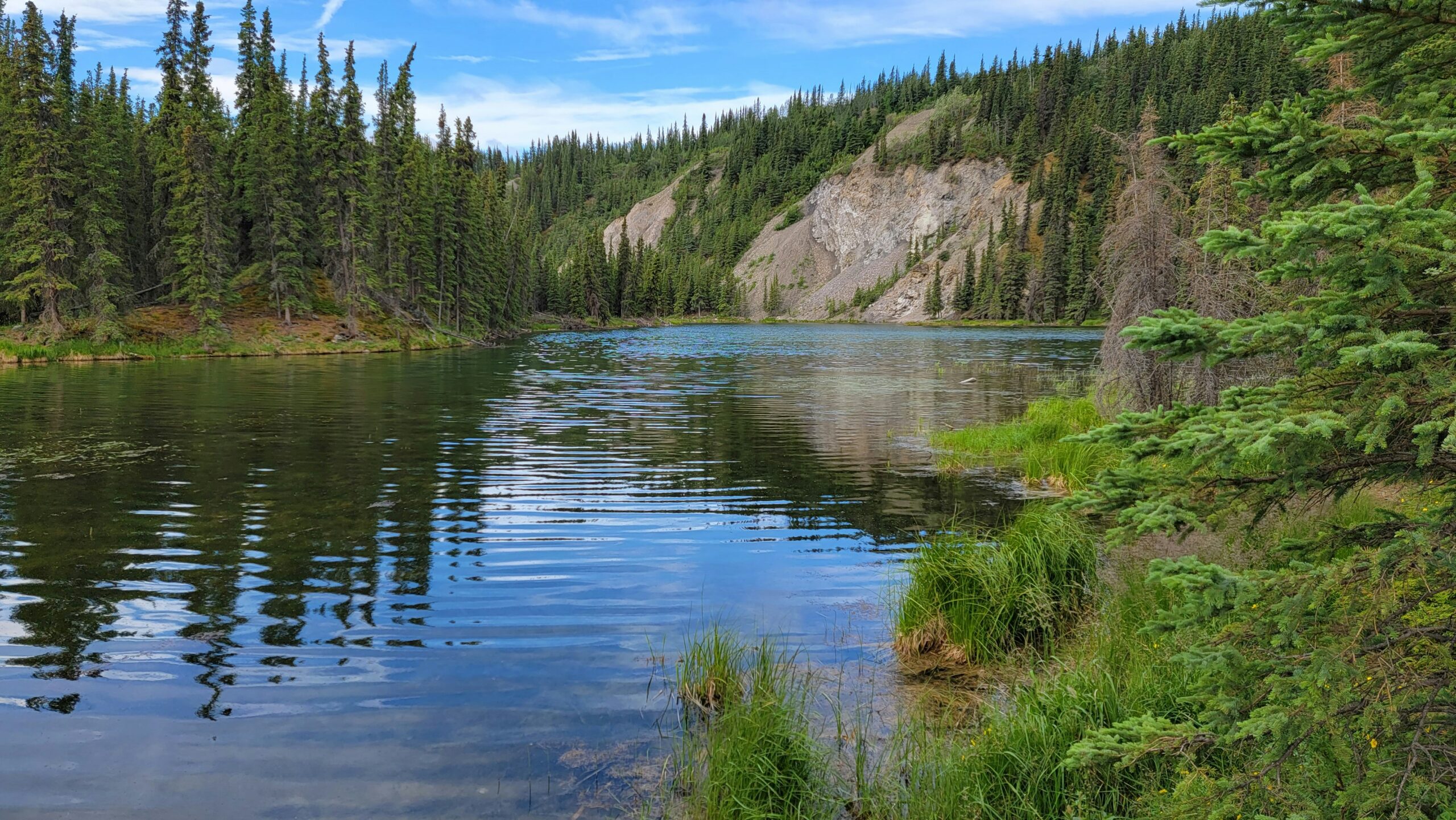
Travel Tip : Denali National Park is a nature preserve, so travelers should consider that it’s relatively remote. Travelers coming directly from the airport or surrounding cities may need to commute for a significant amount of time, which should be factored into visiting plans.
Glacier Day Cruises
A scenic cruise may be the best opportunity for some travelers to sightsee. They can sit back and relax to view some of Alaska’s most dramatic scenery. Travelers may even be able to view glaciers and waterfalls up close. If cruisers are lucky, they may be able to see whales, otters or birds on their boat ride. Cruise options include a few hours to a full-day adventure. There are plenty of choices for visitors who want to stay in Alaska and simply take a cruise excursion. Some popular ports and sites for cruises are Sitka, Glacier Bay National Park, Juneau or Vancouver.
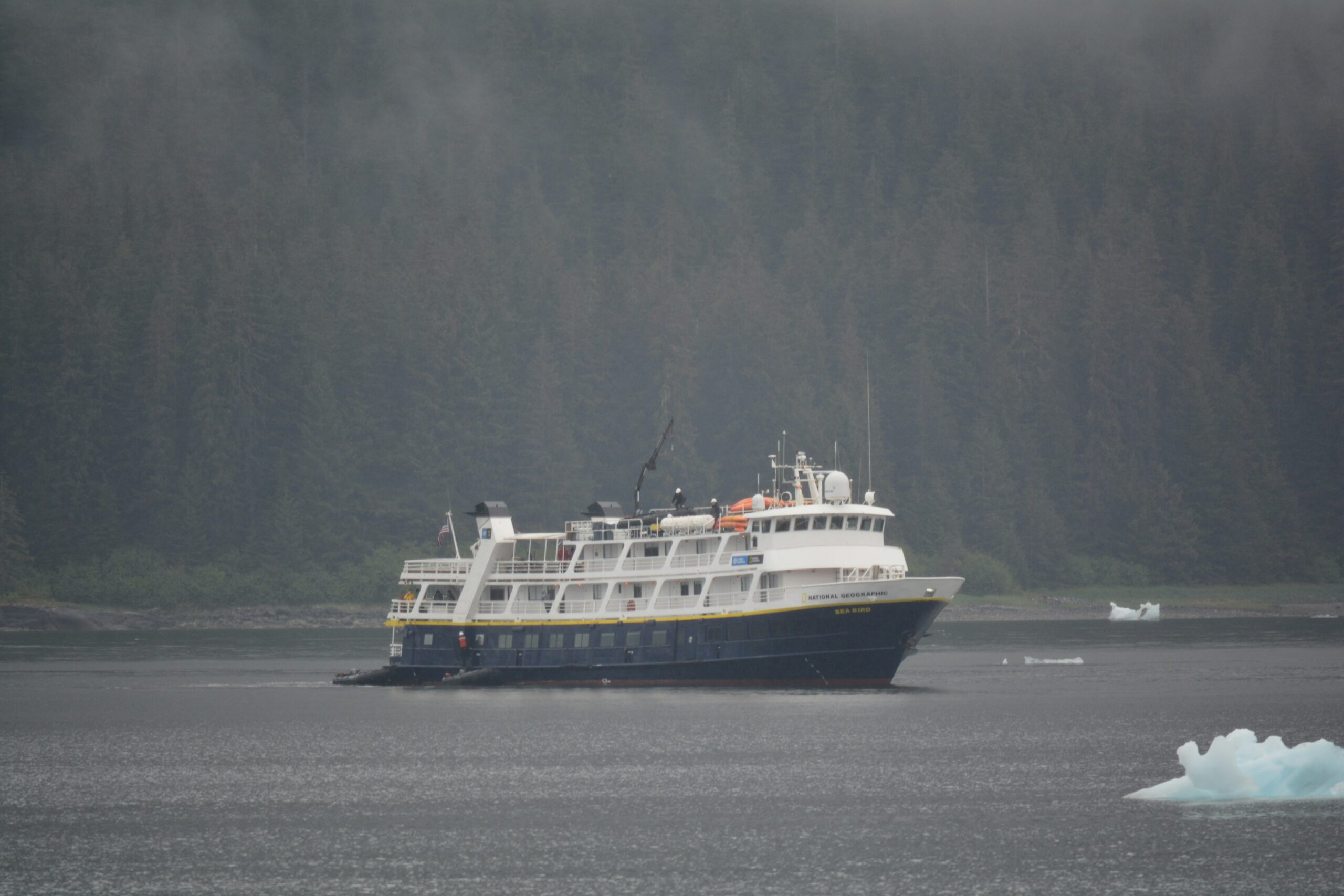
Travel Tip : Travelers who take a day cruise should bring layers to wear since the temperatures can vary on the water. Another wise buy would be a waterproof cell phone protector for taking pictures.
Dog sledding
Dog sledding is one of Alaska’s most iconic cultural activities, often associated with winter. However, visitors might be surprised to learn that this exhilarating experience is available year-round, even during the warmer months. In fact, June is an ideal time to visit Alaska if you’re looking to engage in this quintessential activity, as dog sledding tours operate both on glaciers and through lush forest landscapes. As you speed through the stunning Alaskan scenery, the thrill of the ride is enhanced by the company of adorable, energetic dogs. These tours typically take place at professional racing dog camps, where visitors can also learn about the region’s rich history of dog sledding and racing. Whether you’re a history enthusiast or simply looking for an unforgettable adventure, dog sledding in Alaska offers a unique and memorable experience.

- Travel Tip : Travelers that go dog sledding in June should be sure to wear sturdy footwear, especially if they opt to take a helicopter ride to get to snowy areas during June. Also, it is customary for tourists to tip their dog sledding guide for their ample knowledge and experience.
The Midnight Sun
Visiting Alaska in June offers a unique appeal largely due to the extended daylight hours. During this time, travelers can experience up to 18 hours of sunlight in a day, thanks to the phenomenon known as the Midnight Sun, where the sun barely sets. The peak of this extraordinary season coincides with the summer solstice, occurring on either June 20 or 21. These prolonged daylight hours create perfect conditions for sightseeing and exploring the vast Alaskan landscape. Additionally, visitors can immerse themselves in local culture by attending the Midnight Sun Festival, typically held in late June from noon until midnight.
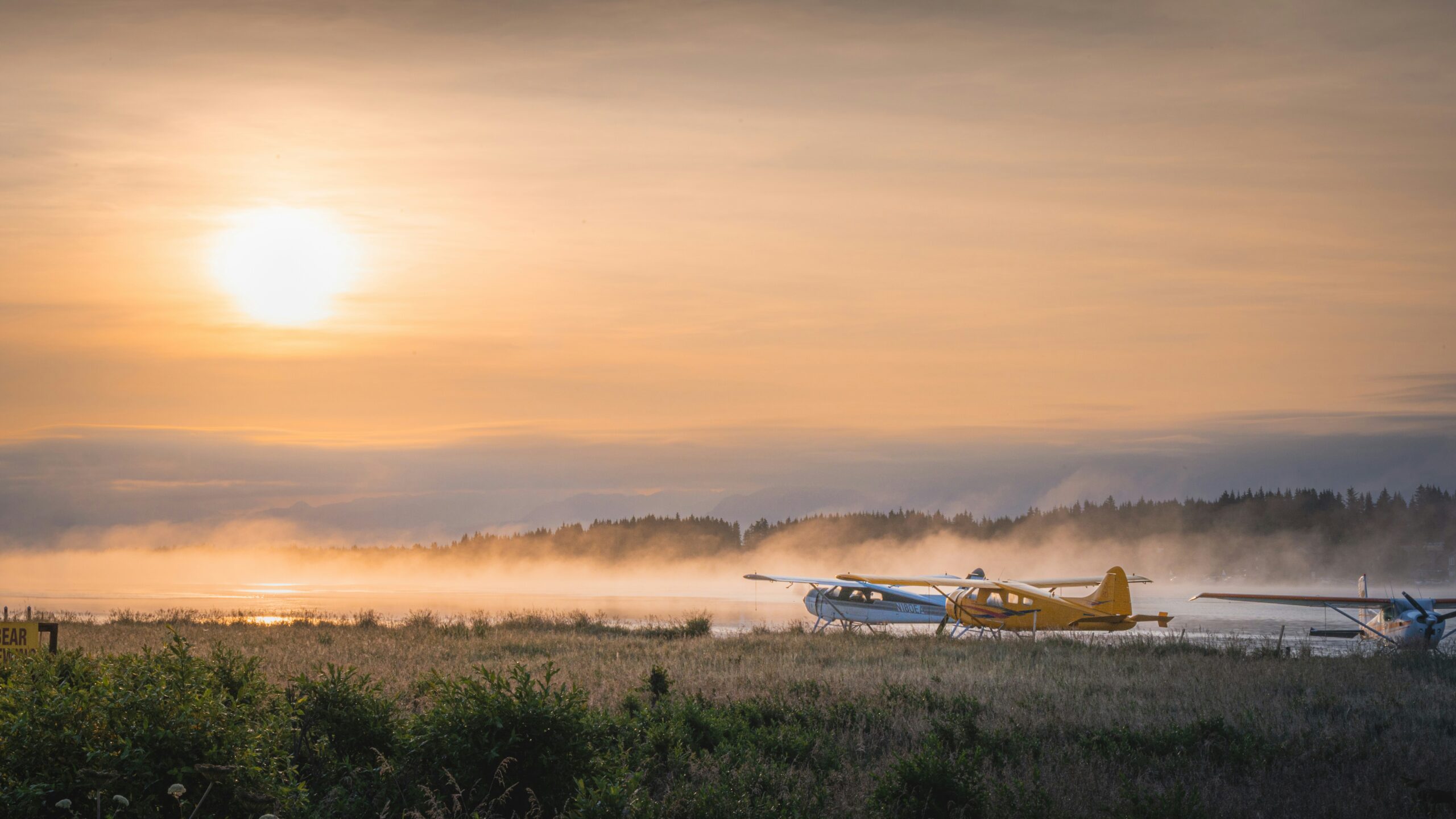
Travel Tip : Fairbanks, often referred to as the Land of the Midnight Sun, attracts many travelers in June who wish to witness this spectacular phenomenon. However, visitors concerned about the Midnight Sun disrupting their sleep patterns, along with the effects of jet lag, should consider bringing a sleep mask or opting for accommodations equipped with blackout curtains.
In June, Alaska comes alive with vibrant wildlife, rich cultural offerings and countless exciting activities . This makes the month an ideal time to visit. Travelers should be sure to take advantage of some of the best attractions and experiences Alaska has to offer during this season.
Subscribe to travel noire
Get more travel content
Subscribe to Travel Noire, a free daily newsletter that features the best of travel, destinations, and guides to the cities you love from a new point of view — yours.
By subscribing to this newsletter, you agree to our terms of service and privacy policy.
Popular posts
Trending stories in world travel
- Airport Transfer
Things to Do

Traveloka Team
15 May 2024 - 5 min read
The Best Time to Visit Beijing: A Guide for Every Traveler
The capital of China, Beijing is known for having a long history that stretches back more than 3,000 years which can be seen from the historical architecture and buildings that still stand strong to this day including the majestic Forbidden City complex, which will take you back to Ming and Qing dynasty in the past where the royally once live inside those massive complex full of reds. Not only rich in History, but Beijing is also known for being rich in culture as can be seen from their traditional houses, foods, and festivals that are held throughout the year.
Four Seasons in Beijing
Before visiting the exciting and bustling city of Beijing, it is recommended that you know more about the seasons, weather along with the periods of those seasons to help you in deciding on when are you going to plan your visit based on your needs and preference on this historical city which is also rich in Culture.
1. Spring (March-May)
Temperatures: The temperatures during Spring can be said to be quite pleasant from around the 50s to 70s Fahrenheit (10-24 degrees Celcius)
Weather: Generally Sunny with occasional dust storms, and relatively low rainfall compared to the other season. It is considerably the perfect weather to explore the city, do various outdoor activities, and enjoy the beautiful sight of the blooming flowers.
2. Summer (June-August)
Temperatures: The temperatures during summer can be Hot and Humid with temperatures over 85 degrees Fahrenheit (30 degrees Celsius)
Weather: It is the wettest season in Beijing with frequent rain showers sometimes accompanied by thunderstorms. During this period, you might expect the heat of sunshine which is sometimes mixed with rain showers. But other than that, it is a perfect time for those nature enthusiast where they can experience the lush greenery to the fullest and participate in various vibrant summer festivals held all around Beijing.
Singapore to Beijing flight

Start from US$ 158.68
Singapore (SIN) to Beijing (PEK)
Tue, 11 Jun 2024

Sichuan Airlines
Start from US$ 168.81
Fri, 14 Jun 2024
Start from US$ 170.24
Mon, 20 May 2024
3. Autumn (September-November)
Temperatures: Another season with comfortable weather with temperatures around the 60s to 70s Fahrenheit (15-21 degrees Celcius)
Weather: Autumn has less rain compared to Summer with most of the time having sunny weather where you can experience the world of golden, orange, and red making a golden carpet under your feet. You can also participate in the National Day Celebration that is held in the city that is held around early October.
4. Winter (December-February)
Temperatures: During the winter you would feel the cold and dryness of the country with temperatures dropping below the freezing point which is around 0 degrees Celcius.
Weather: During the Winter season you might experience occasional snowfall with mostly dry and sunny skies. During this period you will be able to experience the magical winter scenery of Beijing with much fewer crowds, except for around New Year's.
Best Time to Visit Beijing
The best time to visit Beijing would depend on what are you looking for in Beijing. But in general, two seasons are considered the best seasons to visit Beijing, which are Spring and Autumn. Here is a further explanation of why those seasons are the best choice to plan your next visit to Beijing.

Spring boasts its comfortable weather and temperatures that usually range from around 50 to 70 Fahrenheit which makes this period the ideal time to explore the bustling city of Beijing and do some outdoor activities without getting caught in the summer heat or the frozen cold in the winter.
Besides, Spring is the time when you can fully experience the full blooms of numerous beautiful flowers. You can try to imagine for yourself where you take a leisure stroll while being surrounded by beautiful peonies, azaleas, and cherry blossoms while some of the petals might flutter around making an unforgettable scene. It is a perfect time when you can take a beautiful picture of yourself with the beauty of nature, or nature itself with the other living beings.
Moreover, during the spring, you can also enjoy various interesting offers from cheaper prices on hotel accommodations, flights,s and even some of the tourist attractions that you plan to visit. There are also some combos or packages that you can take. For further information, you should check on Travekloka, which often gives discounts and promotions that will cater to your needs and preferences.
2. Autumn (September-November)
Similar to Spring, Autumn also has comfortable temperatures which are around 60s to 70s Fahrenheit which is also a perfect time to explore the town and do various outdoor activities. However, during this time you could participate in their National Holiday Perk which is The Chinese National Day that falls on October 1st, which makes the town filled with various festive decorations and special events that are held around the city.
Autumn is a beautiful season where you will get a glimpse of the world painted in shades of gold, orange, and red as the leaves begin to change color and fall, making a beautiful carpet with a golden hue beneath your feet. During this period you could witness the transformation of the landscape especially in an exceptional park such as the Fragrant Hills Part is another breathtaking experience that will leave you with unforgettable memories.

[Beijing Attractions] Badaling Great Wall. Simatai Great Wall|Tickets
Festivals in Beijing Throughout the Year
Several Festivals annually held throughout the year in Beijing
1. Spring Festival

Late January/ Early February: One of the biggest and the most important Chinese Festivals. Spring Festival is a time for families to gather and have an elaborate fest while holding a lively celebration. During this Festival you would be able to witness for yourself various traditional performances, acrobatics, and vendors who are selling festive treats to fulfill both of your stomach and palate.
2. Peony Festival
April/May: An annual festival held to celebrate the delicate and beautiful peony flower which is also China’s national flower that is held at the enhancing Beijing Botanical Garden. It is a pleasant festival where visitors would be able to immerse themself in the fragrant blooms of various peony flower species and all different color.
3. Shichahai Boat Festival
Late July: This traditional and long-lasting custom is one unique festival where that will transform the Shichahai Lake area into a lively place with several dragon boats that will race through the Lake, numerous folks who perform, and bustling markets. Here you will be able to enjoy various attractions along with the cool summer air and a slice of Beijing’s cultural heritage.
4. Mid-Autumn Festival
September: Another annual festival which is also known as the Moon Festival is celebrated by gathering around with your friends and family under the full moon while eating some traditional Chinese foods and snacks such as Mooncake, and pastries with savory fillings.
5. Emperor’s Birthday Celebration
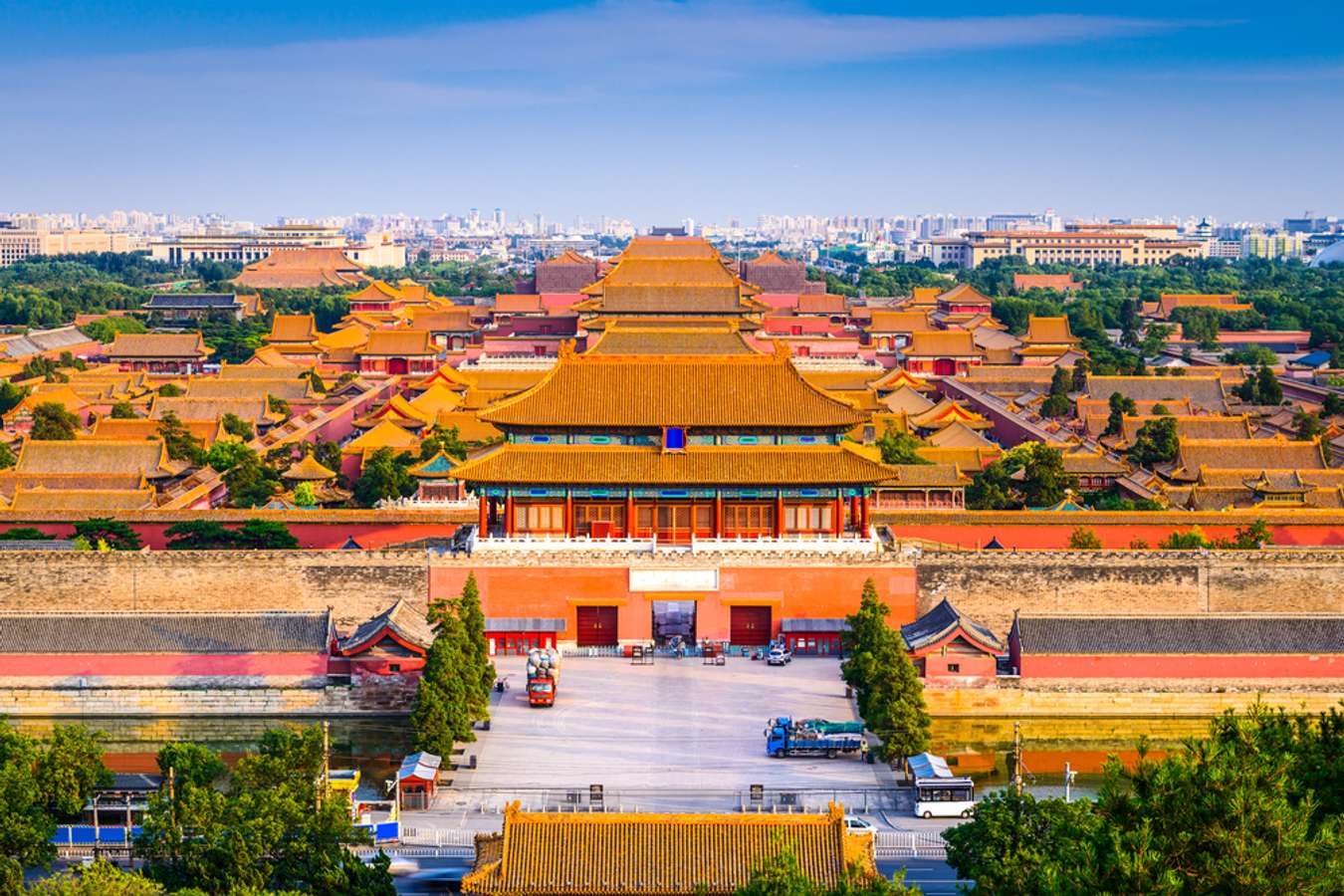
Early November: Held at the iconic Palace Museum which is also known as the Forbidden City, this specific event is held to commemorate the birthday of the Qing Dynasty Emperor where visitors would be able to witness for themself the colorful imperial procession with musicians and performers, each wearing traditional costumes which would make you feel as if coming back in time.
Here are all the pieces of information about the best time to Visit Beijing, along with the weather as well as the festival held throughout the Year. If you plan to visit Beijing soon, Traveloka is more than willing to help you book your accommodations , flight tickets, as well tourist attractions that catch your eye with the best price. Besides, Traveloka often gives out some discounts and promos as well as combos to make your trip more memorable with a more friendly budget.
Payment Partners
About Traveloka
- How to Book
- Help Center
Follow us on
- Traveloka Affiliate
- Privacy Notice
- Terms & Conditions
- Register Your Accommodation
- Register Your Experience Business
- Traveloka Press Room
- Vulnerability Disclosure Program
Download Traveloka App
8 best places to visit in Morocco

Oct 11, 2023 • 7 min read
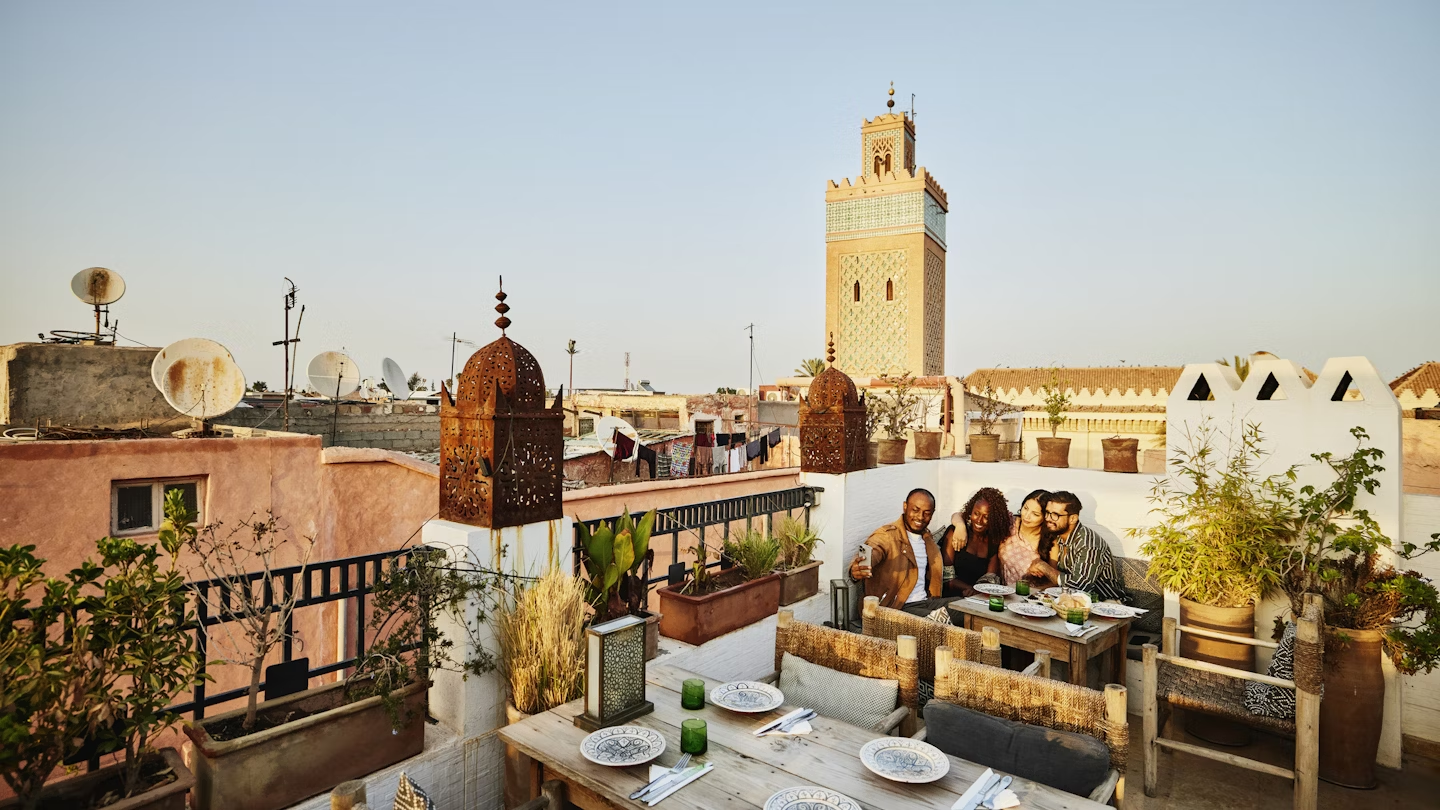
Marrakesh is the most popular city for travelers, but the country has many more best places to visit © Thomas Barwick / Getty Images
From Unesco World Heritage–listed cities to modern metropoles, arid deserts to snowy peaks, wild Atlantic beaches to secluded Mediterranean coves, Morocco has a place for all types of travelers.
Within easy reach of Europe, many come to Morocco for the year-round sunshine, all-inclusive beach vacations and a rich cultural heritage with historic cities so well preserved that it seems time travel is possible. Travel a little deeper to discover wilderness areas and a sense of remoteness.
Morocco has invested heavily in modernizing its tourism offerings. Traveling around the country is easier thanks to domestic flights, high-speed rail, new roads and luxury coaches covering long distances.
This country has a ton of beautiful places to visit, but don't try to see it all at once. Instead, select a few places based on your interests and start making plans for your next trip.
Editor's note: On September 8, 2023, a 6.8 magnitude earthquake struck central Morocco, centered on the Atlas Mountains and the area southwest of Marrakesh. Travel to other parts of the country, including Essaouira , is largely unaffected, but we encourage travelers to check bulletins and monitor reliable local news sources for the latest information.
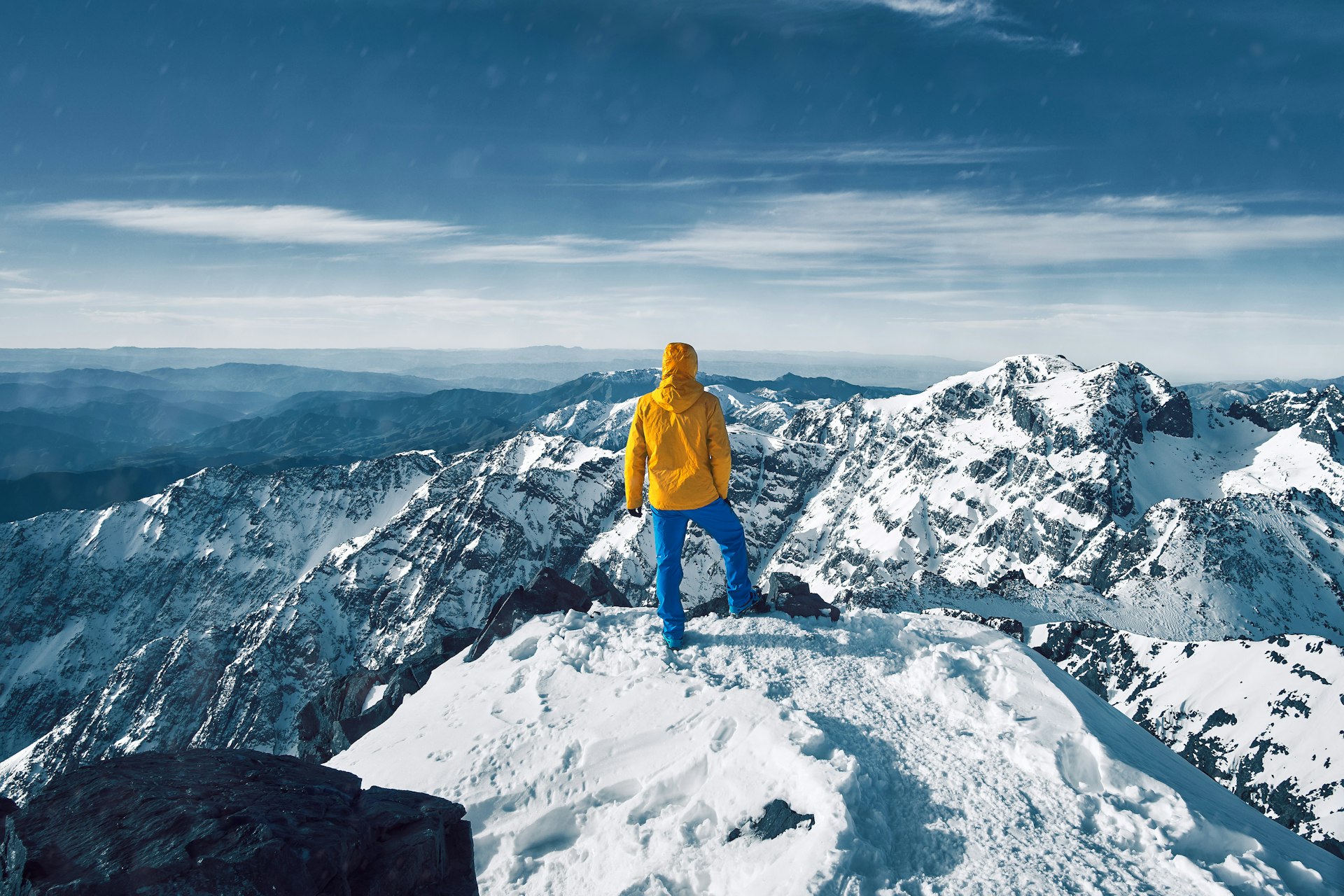
1. Anti-Atlas
Best for hiking and outdoor adventures
The Anti-Atlas is Morocco's lesser-explored mountain playground with plentiful plateaus, valleys and soaring peaks to explore. Travelers here can blaze new hiking trails, unearth empty archaeological sites and connect with locals who share their timeless valleys with generosity and warmth.
Plentiful short hikes and climbing routes are available in the Ameln Valley, home to Jebel Lkest - Jebel meaning mountain - and Tafraoute’s dramatic granite boulder-strewn landscapes, including Napoleon’s Hat and the Painted Rocks . Drive or pedal your way along winding mountain passes to the date-palm filled Ait Mansour Gorges.
Longer treks at Jebel Siroua (3,305m) include a dramatic volcano for those hardy hikers looking to spend several nights wild camping.
Take some time to connect with the Imazighen people living in the region. A glimpse into their simple life and grounding way of being is food for the soul.
2. Marrakesh
Best place for romance
The 'pink city' is one of Morocco's must-sees – all your senses come to life here, and there are plenty of things to do in Marrakesh . Soak up the city's charm with the rosy hues of the medina wall at sunset and the heavy scent of citrus trees in season. Weave your way past the horse carriages into Djemaa el Fna , packed with performers and street food vendors. Explore the lantern-lit alleys of the medina and the walled gardens of Jardin Majorelle , as well as flamboyant historic palaces and a flourishing art scene in the Ville Nouvelle.
Treat yourself to a stay in a charming Marrakesh riad, such as Dar Attajmil , where every detail has been thoughtfully created and attentive hospitality awaits. Marrakesh has some of the country's best spas and hammams , from Royal Mansour to Hammam de la Rose . Watch the sunset over the Atlas Mountains from the exquisite roof terrace of El Fenn and enjoy cozy candlelit dinners in this gastronomic city with international chefs from Australia to Japan.
For a touch of desert romance, the Agafay Desert and its luxury glamping options are within easy reach of Marrakesh, perfect for a night under the stars.
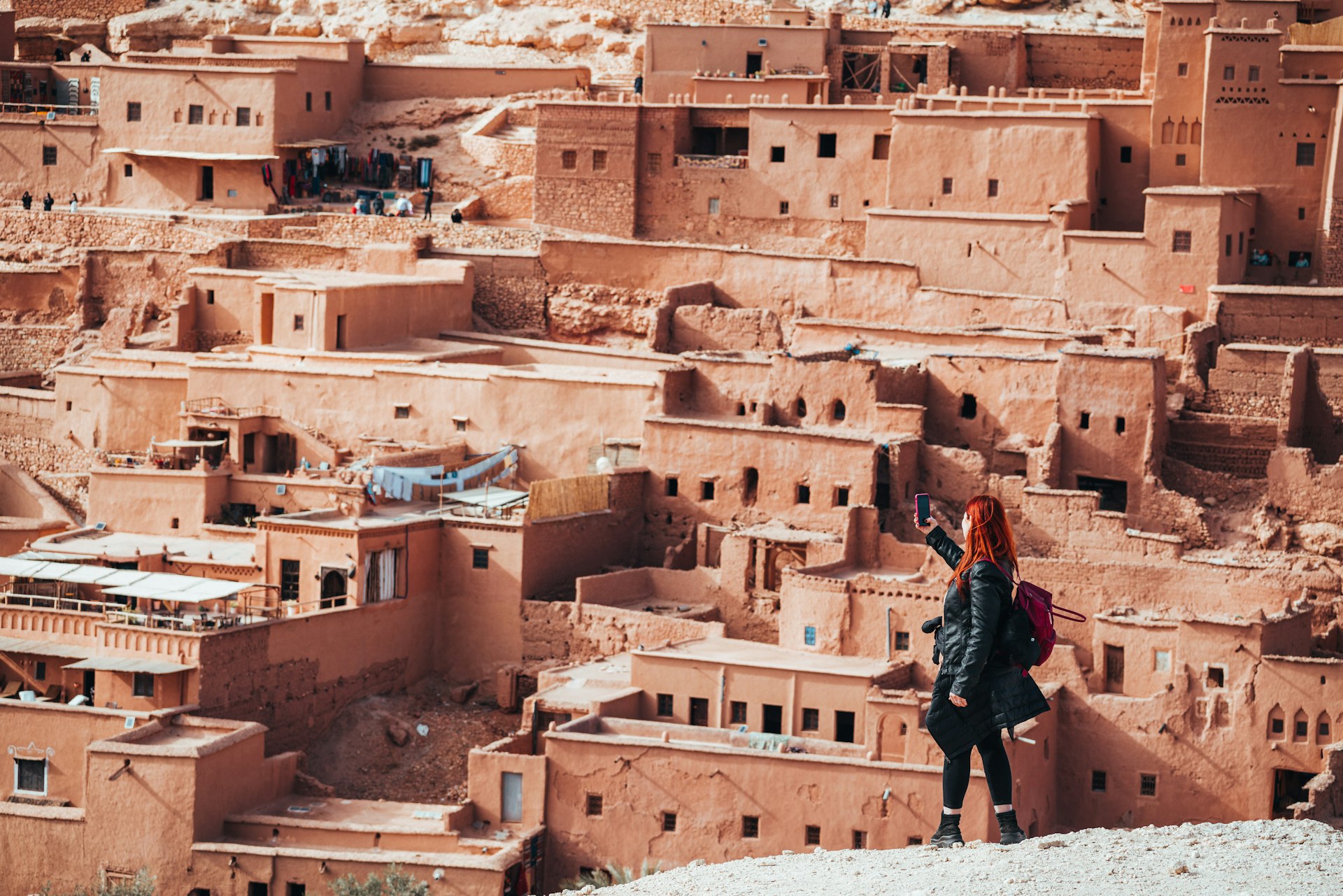
3. Aït Ben Haddou
Best place for blockbuster movie scenes
Travel on the former trading route from Marrakesh to the Sahara and you’ll reach sun-scorched Ouarzazate . The region is home to majestic Aït Ben Haddou , an 11th-century mudbrick ksar (fortified village) that's one of Morocco's most striking, well-preserved ancient sites. Still inhabited and now protected by Unesco, it was made famous in the TV show Game of Thrones .
The region, dubbed 'Ouallywood,' is Morocco's version of Hollywood, and Atlas Film Studios has been the setting for such classics as Gladiator , Prison Break and Kingdom of Heaven .
Planning tip : Aït Ben Haddou is best visited at sunrise or sunset. Walk through the village to take in the incredible views and scale of this remarkable ancient site.
4. Taghazout Bay
Best place for chill beach vibes
The stretch of the Atlantic Ocean from Essaouira to Sidi Ifni is where you'll find the largest concentration of Morocco's surf beaches. At its heart is the quaint village of Taghazout , a fishing and surfing community with painted steps, colorful houses and an eclectic mix of cafes, grills and surf shops. With the surf comes yoga, and days here flow easily between sunrise and sunset rooftop yoga classes.
Even if you're not into surfing, Taghazout Bay, with its 5km sandy beach, offers year-round summer vacation vibes and an excellent choice of accommodations ranging from five-star beach resorts to bohemian homestays, making it one of the best places in Morocco for a beach vacation.
Planning tip: Travel in January or February to watch the world's best surfers competing at Taghazout’s showstopper wave, Anchor Point. Come in September for quieter, mellower and warmer waves.
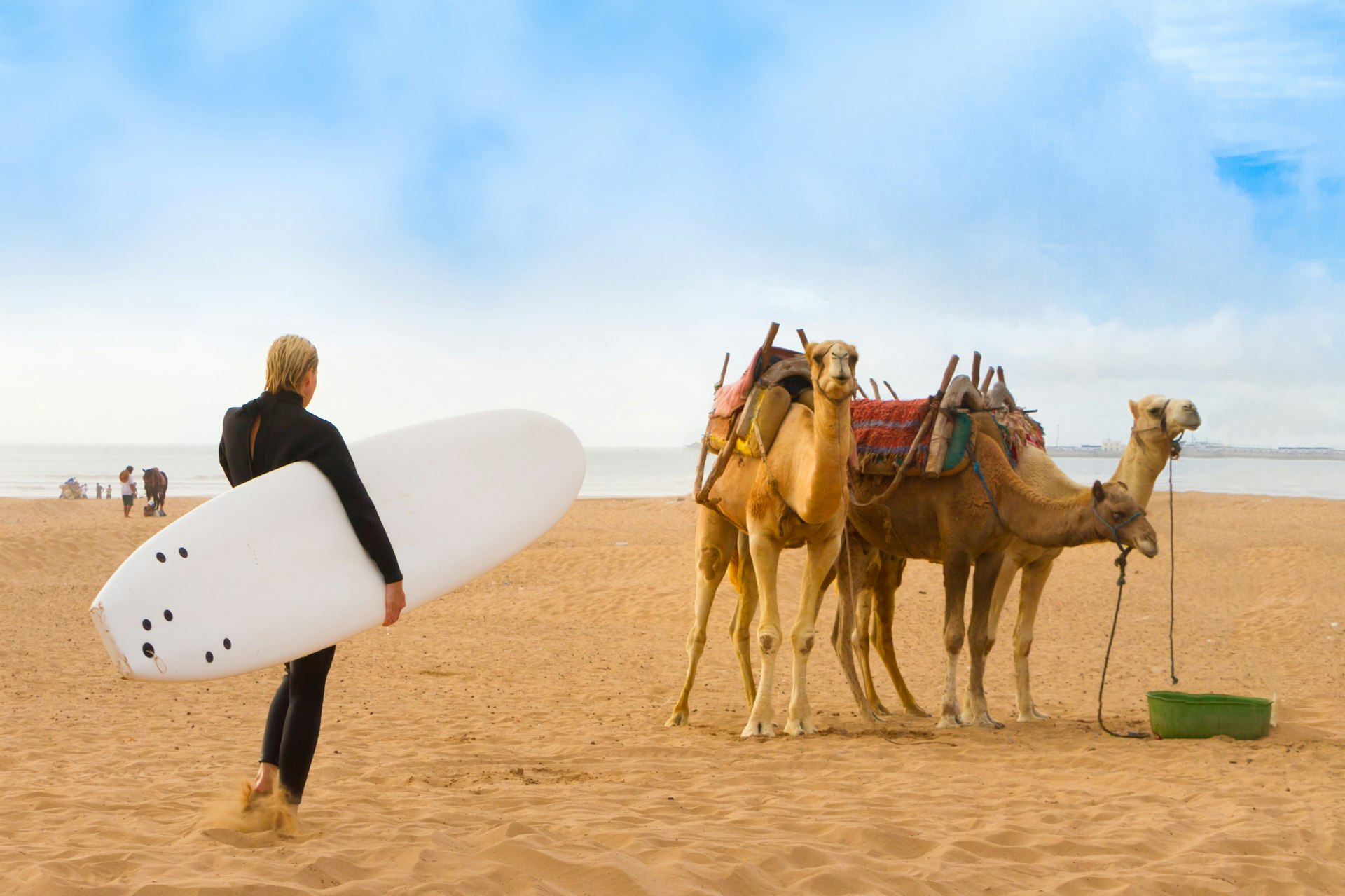
5. Essaouira
Best place for a one-stop city and beach vacation
If you have to choose one place to enjoy the broad spectrum of everything Morocco offers, Essaouira is a great pick. This relaxed city has an oceanfront location with a sandy beach, watersport centers, a working fishing port and a noisy fish market for fresh-off-the-boat seafood.
At its historic heart is a pedestrianized medina with markets selling ceramics and traditional riads to sleep in. Many riads have been upgraded to suit the artsy crowd attracted to this charming city. Essaouira's annual Gnaoua music festival , galleries and historic ramparts sit alongside contemporary restaurants , cocktail bars and a variety of shopping experiences .
Planning tip: Many come to Essaouira for the wind, and it's one of the country's best places to kitesurf. If it's too windy for the beach, nearby countryside retreats offer pool day passes to non-guests.
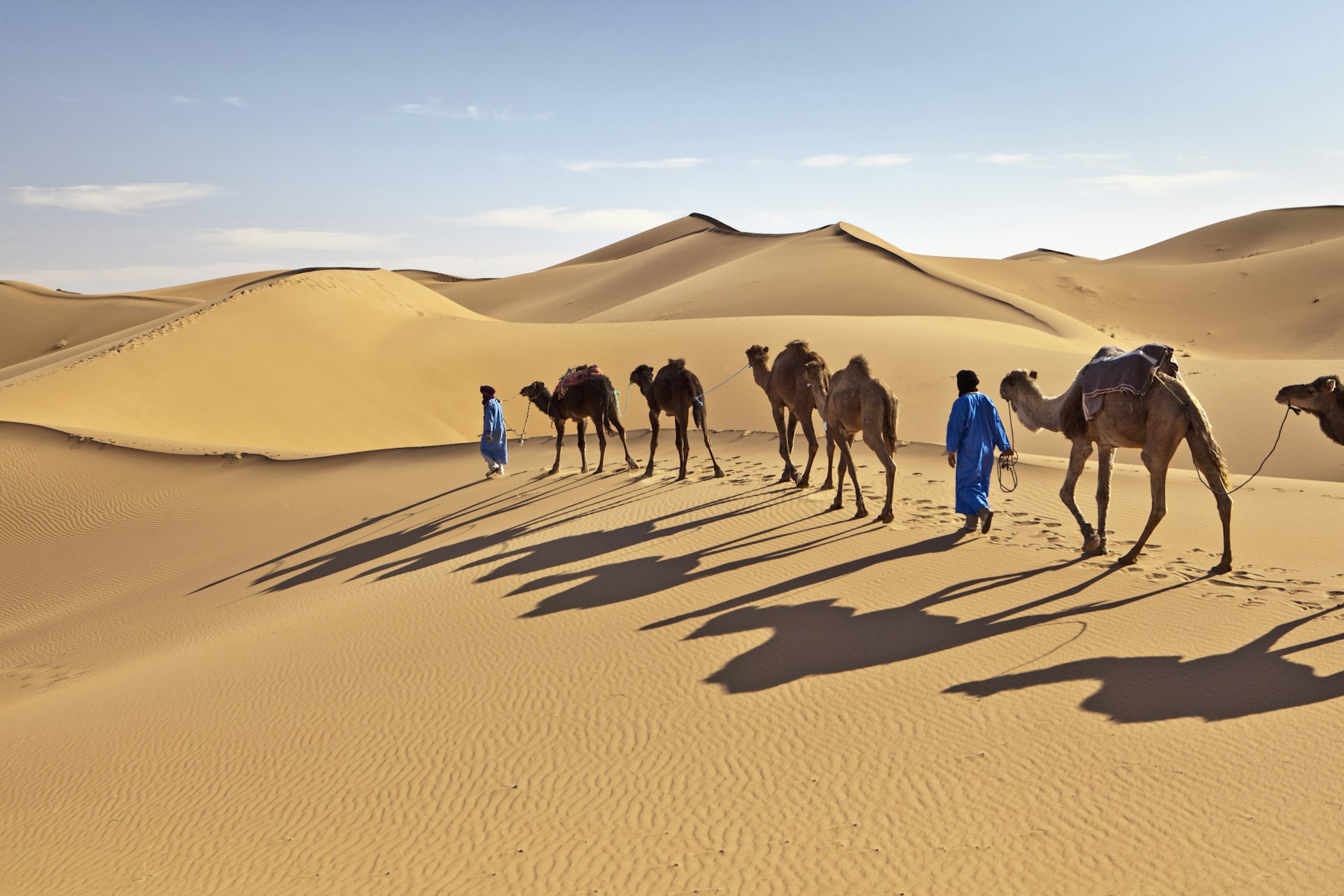
6. Sahara Desert
Best place for getting away from it all
The drive to the Sahara is long, but when you arrive on the edge of the world's largest hot desert, the pavement stops and the sand begins with an endless ocean of dunes ahead. Whether you choose to travel by 4WD or camel deeper into the desert, the emptiness of the Sahara can bring a sense of remoteness that's rare to find these days.
Visiting the Moroccan Sahara is an opportunity to disconnect, empty your mind and enjoy being in the middle of nowhere. This stark and barren environment comes to life with a good guide, especially at night when the night sky free of light pollution fills with stars.
Planning tip: Pick a camp away from the crowds. Erg Chigaga has some of the highest sand dunes and the most remote places to stay.

Best place for history buffs
As the oldest city in Morocco, Fez proudly keeps one foot firmly planted in the past. Its crumbling medieval medina is vast, and it's almost guaranteed that you will get lost wiggling your way through a maze of workshops, apothecaries and market stalls. The Kairaouine Library and Mosque houses the world's oldest library and is Morocco's renowned spiritual and study center.
Planning tip: While you're in the area, visit the imperial city of Meknes and the fantastically preserved ancient Roman ruins of Volubilis .
Best place for a sense of geographical location
The ferry between Spain and Tangier takes just one hour, and seeing Spain from Africa's coastline brings to light Morocco’s proximity to Europe. The 'white city,' so-named for its whitewashed buildings, has a buzzing art scene, tapas restaurants and cafe culture – Cafe Hafa has some of the best ocean views. Spanish is still widely spoken, adding to the Euro-Afro vibe, and open plazas such as Grand Socco and beautiful Mediterranean beaches make it a smooth entry point for travelers to Morocco.
Combine your time in the city with a trip to Hercules Caves and Cape Spartel’s lighthouse and rugged coastline. You could also use Tangier as a base for a road trip to the famously blue city of Chefchaouen and Spanish-infused Asilah . Hop on Al Boraq, the high-speed train , and you’ll be in the capital city of Rabat in an hour and a half.
This article was first published Apr 29, 2021 and updated Oct 11, 2023.
Explore related stories
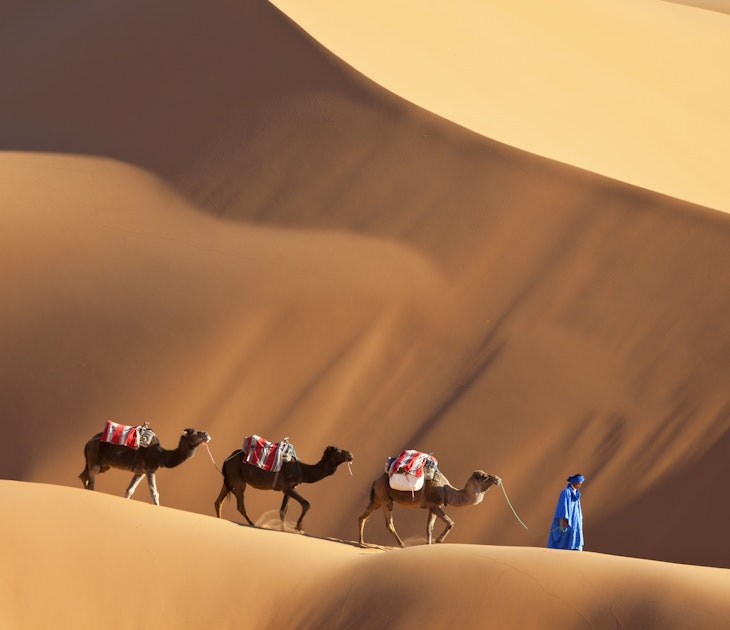
Festivals & Events
Mar 11, 2024 • 5 min read
Morocco is a fantastic year-round vacation destination, but the best time of year to travel will depend on your interests and holiday needs.

Feb 7, 2024 • 5 min read
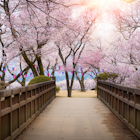
Jan 31, 2024 • 6 min read

Jan 27, 2024 • 15 min read

Jan 17, 2024 • 8 min read
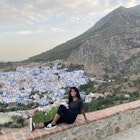
Jan 17, 2024 • 6 min read
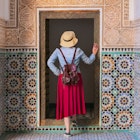
Nov 29, 2023 • 6 min read
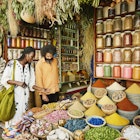
Nov 24, 2023 • 8 min read
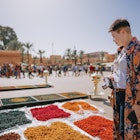
Nov 20, 2023 • 5 min read

Oct 15, 2023 • 7 min read

May Is The Best Time To Visit These 5 Insane Destinations
M ay is a magical time for travel, especially to some of the most incredible destinations around the world. The month of May offers the perfect blend of favorable weather, fewer crowds, and plenty of natural beauty coming to life as flowers bloom and greenery bursts with color.
Here, you’ll find the best destinations to travel to in May for memorable getaways full of delicious foods, stunning views, fewer crowds, and even cultural events.
1. Tuscany, Italy
Taking in the stunning views of endless rows of vineyards and rolling hills in one of the world’s top wine regions is an experience that defines a trip to Tuscany, Italy. The region’s landscape is like a beautiful painting, with hills covered in vineyards and olive trees creating an incredibly picturesque scene.
Having personally explored Italy during May, I can say firsthand how amazing Tuscany is during this time of year. The weather in Tuscany in May is just right, not too hot and not too cold, usually ranging from the mid-50s to upper 70s Fahrenheit.
It’s perfect for leisurely walks and enjoying the fantastic wines the region is known for. Plus, May brings the landscape to life with blooming flowers and lush greenery, making it even more beautiful.
One of the best things about visiting Tuscany in May is that it’s less crowded than it can be in the peak summer months. Fewer visitors are around, so you can enjoy popular spots, historical sites, and scenic views without dealing with large crowds.
It also makes it easier to find accommodations and creates a more relaxed vibe overall, allowing you to soak in the charm of Tuscany truly.
2. Santorini, Greece
Imagine strolling around a small Greek island bursting with color, sunlight, and warm weather. There’s nothing quite like Santorini, Greece, with its famous white buildings against the backdrop of the beautiful Aegean Sea. The island’s charm lies in its stunning architecture and the dramatic cliffs overlooking the blue waters.
The weather in Santorini during May is just right, with temperatures ranging from around the mid-60s to upper 70s. This makes it perfect for enjoying the island without the intense summer heat. It’s a beautiful time to wander through the narrow streets of Oia and Fira, each offering breathtaking views and countless shops and restaurants to explore.
One of the best things about visiting Santorini in May is the peaceful atmosphere compared to the busier summer months. With fewer tourists around, you can thoroughly soak in the beauty of the caldera, savor leisurely meals at local restaurants, and embrace the laid-back island vibe.
May also brings out the vibrant colors of spring, with blooming flowers and lush greenery enhancing the island’s natural beauty. My personal favorite is the bright pink flowers that bloom on Bougainvillea Trees.
Exploring Santorini in May allows you to experience the best of the island, from its famous sunsets in Oia to boat trips to the volcanic hot springs. It’s a time when you can truly enjoy the essence of Santorini without the crowds and intense heat.
3. Marrakech, Morocco
Experiencing the lively atmosphere of Marrakech, Morocco, is like stepping into a vibrant world of colors and culture. Marrakech is famous for its bustling markets, lively streets, and historic sites that showcase its rich heritage.
May is perfect for exploring the city because it’s not too hot, with temperatures ranging from the upper 60s to the mid-80s Fahrenheit. It’s a fantastic time to wander through the maze-like streets of the old city, where you’ll discover a treasure trove of spices, textiles, and local crafts.
One of the best things about visiting Marrakech in May is the relaxed vibe compared to busier times of the year. With fewer tourists, you can enjoy the city’s attractions, such as the Bahia Palace, the Jardin Majorelle, and vibrant souks without crowds.
4. Nassau, The Bahamas
Nassau is famous for its beautiful beaches, vibrant markets, and historical sites. It is also home to the world-famous Atlantis Paradise Island Bahamas Resort.
Having personally visited Nassau, I can say it’s a fun-filled place overflowing with a vibrant atmosphere and endless things to do. The weather in Nassau during May is absolutely perfect, with temperatures ranging from the upper 70s to mid-80s Fahrenheit, making it incredible for enjoying outdoor adventures and water activities without feeling too hot.
It’s the perfect time to lounge on the beautiful beaches, wander through the bustling Straw Market for local crafts, and explore historical landmarks like Fort Charlotte and the Queen’s Staircase.
One of the best things about visiting Nassau in May is that the temperature is just right, and it’s between spring break and summer crowds. With fewer tourists, you can fully enjoy the beach life, indulge in Bahamian cuisine at beachfront restaurants, and discover the underwater world through snorkeling or diving without the hustle and bustle.
5. Brighton, United Kingdom
Brighton is known for its iconic pier, lively beachfront, and colorful neighborhoods that reflect its creative spirit.
The weather in Brighton in May is pleasant, with temperatures ranging from around 50 degrees to the mid-60s Fahrenheit. This makes it ideal for seaside strolls without the summer crowds.
It’s a wonderful time to wander along the pebbled beach, explore the quirky shops and cafes in the North Laine district, and marvel at architectural gems like the Royal Pavilion.
One of the highlights of visiting Brighton in May is the lively atmosphere and cultural events. With the city coming to life after winter, you can experience the Brighton Fringe Festival, featuring a vibrant mix of performing arts, music, and comedy.
May also brings opportunities to enjoy traditional fish and chips by the beach, take leisurely bike rides along the promenade, and discover local art galleries and museums.
Exploring Brighton in May allows you to embrace its seaside charm and artistic flair. Brighton captures the essence of a British seaside getaway, whether you’re relaxing by the sea, immersing yourself in cultural events, or savoring local cuisine.
Why You Should Visit These 5 Epic Destinations In May
May is an excellent time to explore each of these unique places known for their charm and experiences.
Whether you’re captivated by Tuscany’s stunning vineyards, Santorini’s scenic cliffs, Marrakech’s bustling markets, Nassau’s tropical paradise, or Brighton’s seaside appeal, May brings a perfect mix of pleasant weather, cultural events, and fewer crowds.
So, grab your bags and head off on an unforgettable vacation full of all the excitement these destinations offer.


IMAGES
VIDEO
COMMENTS
A diverse country with something for all kinds of travelers, there is no bad time to visit Morocco.Still, generally, the best time to visit is during April and May or September to November, the country's shoulder seasons. During these months, the climate is neither too hot nor too cold, and there are fewer tourists to contend with than there would be during the peak summer or winter vacation ...
September to November and March to May are best for hiking and visiting Marrakesh. For sunny days and temperatures that aren't too hot or cold, visit Marrakesh in spring (March to May) or fall (September to November). Avoid the summer months of June to August unless you have a love affair with air conditioning and 38°C (100°F) heat; nights ...
Best time to visit. The best time to visit Morocco is during spring (mid-March to May) or fall (September to October). The weather is warm but pleasant, unlike the cold temperatures and snow of winter, or the scorching heat of summer. The coastal regions can be visited year-round. In the winter they are pleasantly mild, while in the summer they ...
The best time to visit Morocco. Mar 11, 2024 • 5 min read. Morocco is a fantastic year-round vacation destination, but the best time of year to travel will depend on your interests and holiday needs. Sports. How to get tickets to the 2026 World Cup games in North America. Feb 7, 2024 • 5 min read.
The best time to visit Morocco largely depends on your interests and the regions you plan to explore. In Morocco, the peak tourist season typically spans from April to October, with the highest influx of visitors occurring during the spring (April to June) and autumn (September and October) months. These periods are favored due to the mild and ...
Best time to visit Morocco. The best time to visit Morocco is generally during the autumn (September-November) or early spring (March-April), but Morocco is a year-round destination. The weather is warm, but you'll avoid the scorching heat and cold nights. Whatever time of year you visit, there's always something special about Morocco.
Each year, millions of people from around the world visit Morocco to experience its unique sights, tastes and sounds. This number has increased steadily over the last 20 years, with a record-breaking 12.3 million visiting in 2018.With direct air service from Boston to Casablanca by Royal Air Maroc set to begin on June 22, traveling to Morocco from the US is easier than ever.
Fall in Morocco. September to November. As the summer heat wanes, autumn steps up as one of the best times of year to visit Morocco. From September to November, temperatures become more agreeable, ranging between 64 and 82°F (18 and 28°C) in Marrakech.
Morocco. Africa. Check out this year's Best in Travel winners. A country of dazzling diversity, Morocco has epic mountains, sweeping deserts and ancient cities, and it greets travelers with warm hospitality and the perfect glass of mint tea. Best Time to Visit. Best Places to Visit.
Best Places to Visit in Morocco: January in Morocco offers a diverse range of destinations to explore, each with its unique charm and appeal: Marrakech: Marrakech, with its bustling souks, historical sites like the Jardin Majorelle, and the vibrant Djemaa el-Fna square, remains a top attraction.
Another one of the best times to visit Morocco is in February. Filled with sunny days, February may be one of the colder months of the year, but it also marks the beginning of things hotting up (slightly) for Morocco. Temperatures average out at about 21°C, with around 11 hours of sunshine per day.
Morocco is often promoted as a winter sun destination but temperatures average around 14°C in December and early January - good for culture vultures, so long as you weren't hoping to get bronzed in the process. If you want to ski, the season can be brief. The best time for pretty much guaranteed snow is mid-January to mid-February.
For adventure seekers, the coastal town of Taghazout offers excellent conditions for surfing and water sports. Average Temperature: 21°C to 33°C. 9. September. It's a pleasant time to visit Morocco's cultural hubs, such as Marrakech and Fes, where you can explore historic sites without the intense summer heat.
Fall in Morocco (September-November) Besides spring, Fall is the best time to visit Morocco. The temperatures are milder and the cities wake from their summer dormancy. September is a sweet spot if you want to avoid the worst of the returning crowds. The temperatures are notably warmer than what you'll experience in October or November, but ...
The best time to visit Morocco is from mid-April to May and September to October. These mild-to-warm months offer the best weather, events, and affordable pricing for a stellar Moroccan trip. May, November, and December are the cheapest months to visit with the lowest average hotel prices and round trip airfare costs.
The best time to visit Morocco is in spring, March to May, or fall, September to October. Plan your tour with our month-by-month Morocco climate guide. ... January is essentially the coldest and wettest month in Morocco. But it is also a good time to travel there if you want to escape the crowds, especially in the second half of the month ...
The best way to travel between Moroccan cities is by train. Morocco now has Africa's fastest trains traveling at 300km/h (186mph) linking Tangier, Rabat and Casablanca every hour over a new high-speed line. Classic trains link northern Tangier and Casablanca with Meknes, Fes and Marrakech.
To have the best experience when visiting Morocco, particularly for first-timers, plan a trip in the spring or fall, with May and September being the most optimal months. The weather is consistently pleasant, not too cold in the mountains nor too hot in the deserts, and the crowds along the coasts and in the cities are more manageable. Stick to the mountains and the beaches during the heat of ...
The Best Time to Visit Morocco Morocco is a land of diverse landscapes, majestic architecture, vibrant colours and heady spices. From the white-topped Atlas Mountains and the azure seas to the rich orange-gold hues and unpolluted starlit skies of the Sahara, the explosion of colours are reflected in the rich culture and heritage of this ancient ...
Embark on a journey to Morocco at the optimal time, ensuring a seamless blend of cultural exploration and natural beauty. At Morocco Tabiarte Tours, we strive to provide insightful guides, enriching your travel experiences. Plan your visit wisely and unlock the magic of Morocco like never before. Discover Morocco's charm at the perfect moments.
Best time to visit. The best time to visit Morocco is during spring (mid-March to May) or autumn (September to October). The weather is warm but pleasant, unlike the cold temperatures and snow of winter, or the scorching heat of summer. The coastal regions can be visited year-round. In the winter they are pleasantly mild, while in the summer ...
For most Morocco destinations, the spring months of March and April and autumn months of October and November provide the best conditions. Whether you plan to hike in the Atlas Mountains, explore the souks of Marrakech and Rabat or even surf in Essaouira or Agadir, this is probably the best time to visit Morocco. Tangier, Morocco.
Morocco is situated in North Africa, the land of strike diversity. the snow-cap peak of the Atlas Mountain to the golden sand of the Sahara Desert. from medina to coastal town. This country offers an array of experiences to suit every traveler's taste. Best Time to Visit: Morocco boasts a Mediterranean climate with hot summers and mild winters.
The coastal, inland and arctic temperatures can vary, but in June, the temperature generally stays between 40 and 70 degrees in Alaska. There is also a lot of daylight during June, allowing travelers plenty of time to enjoy outdoor activities. Additionally, in June, Alaska experiences less rainfall, making rain less likely to impact travelers ...
1. Spring (March-May) Spring boasts its comfortable weather and temperatures that usually range from around 50 to 70 Fahrenheit which makes this period the ideal time to explore the bustling city of Beijing and do some outdoor activities without getting caught in the summer heat or the frozen cold in the winter.
Here is a list of 10 Islamic World Heritage Sites to visit in 2023: Sheikh Zayed Grand Mosque, UAE. Located in Abu Dhabi, Sheikh Zayed Grand Mosque is the largest mosque in the country and one of ...
The best time to visit Morocco. Mar 11, 2024 • 5 min read. Morocco is a fantastic year-round vacation destination, but the best time of year to travel will depend on your interests and holiday needs. Sports. How to get tickets to the 2026 World Cup games in North America. Feb 7, 2024 • 5 min read.
The best time to visit Florence for fewer crowds is November through March. Summer is hot and crowded. Gray says, "A real 'low season' in Florence isn't much of a thing anymore."
Here, you'll find the best destinations to travel to in May for memorable getaways full of delicious foods, stunning views, fewer crowds, and even cultural events. Bright pink flowers, a crisp ...
Málaga, Spain is a sun-seeker's paradise. The city along the nation's southern coast is the sunniest place in Europe, getting more than 280 sunshine hours a month, which works out to more than ...